Coastal Bali
Welcome to Bali
Bali is an Indonesian Island known for its rich culture and surreal nature with near endless things to do, see and try. During our two week trip, we ventured to various areas around the island: exploring the relaxed seaside neighborhood of Canggu, the tropical palm covered Gili Islands and the cliffside Bukit Peninsula. Read our guide on Ubud for more to do in Bali.
Canggu
Canggu is a trendy and relaxing place to soak up tropical vibes, overcome jet lag, meet other travelers and get a better idea of what to do and see around Bali. It is a great entry point to spend your first couple of days on the Island. The neighborhood has a chill vibe with many surfers and digital nomads vacationing. There are cute shops, vegan cafes, black sand beaches and lush rice fields. Spend a good amount of time on the beach, day or night but also explore the streets extending deeper into Canggu. There are a ton of great restaurants, cafes and bars to stumble upon.
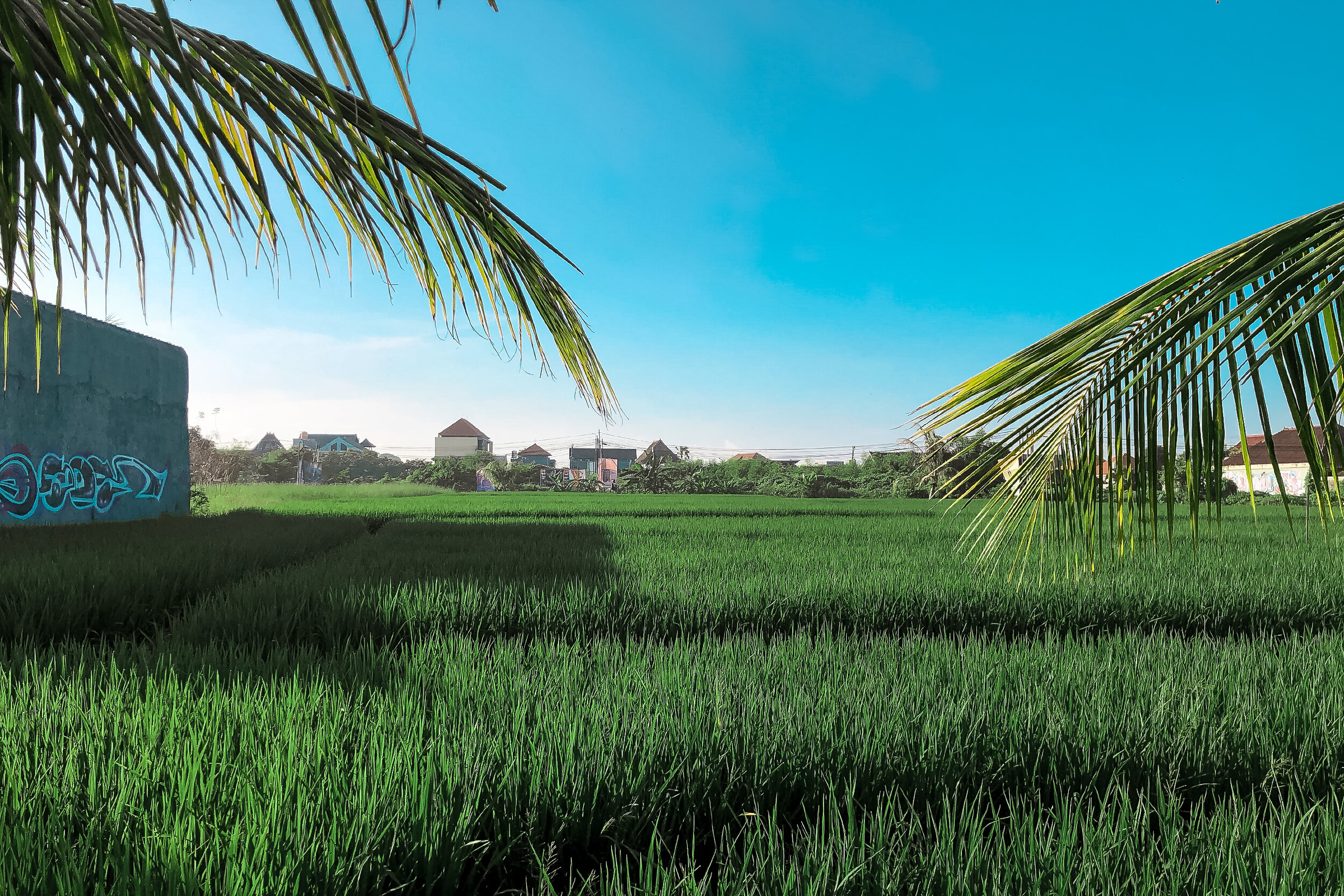
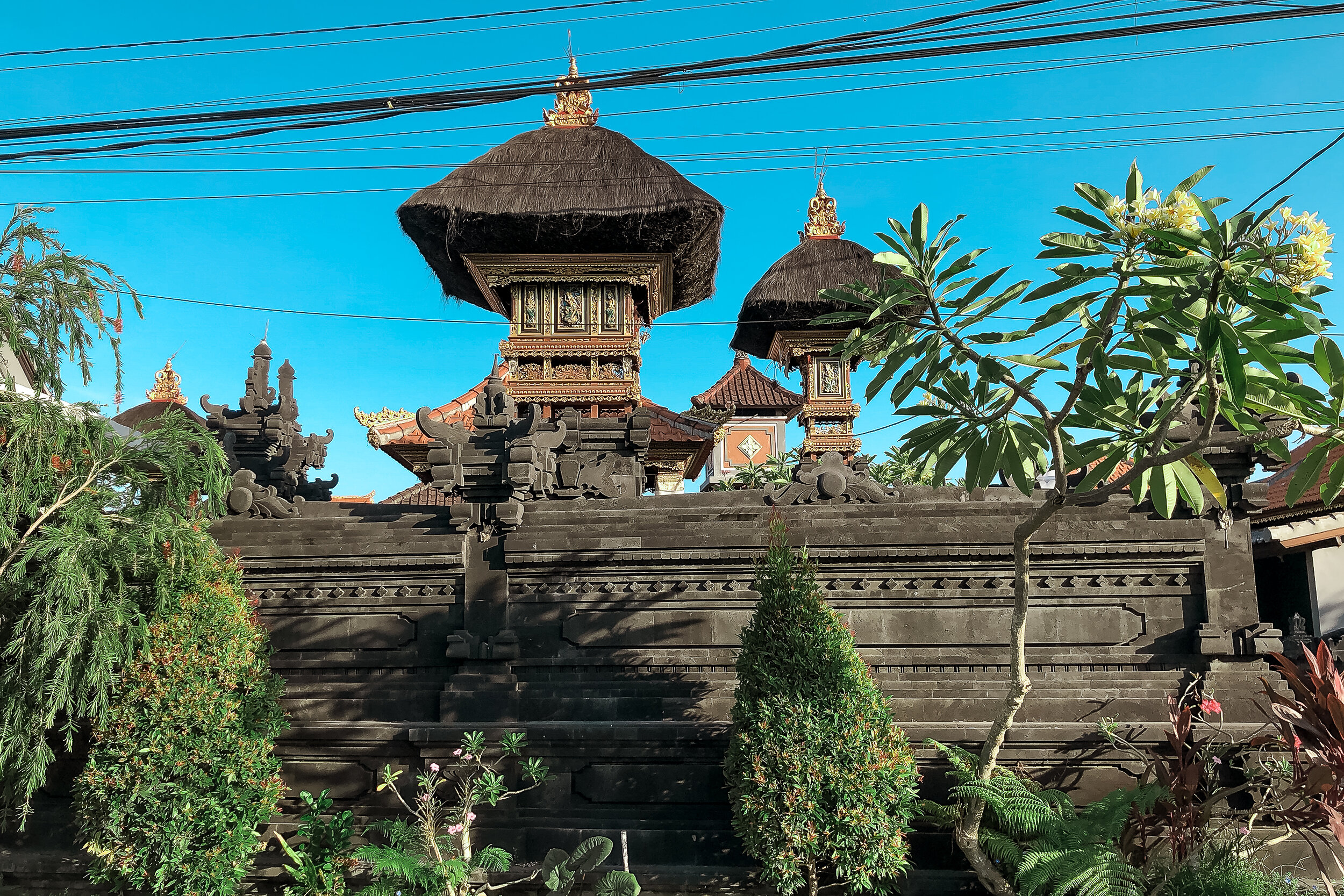
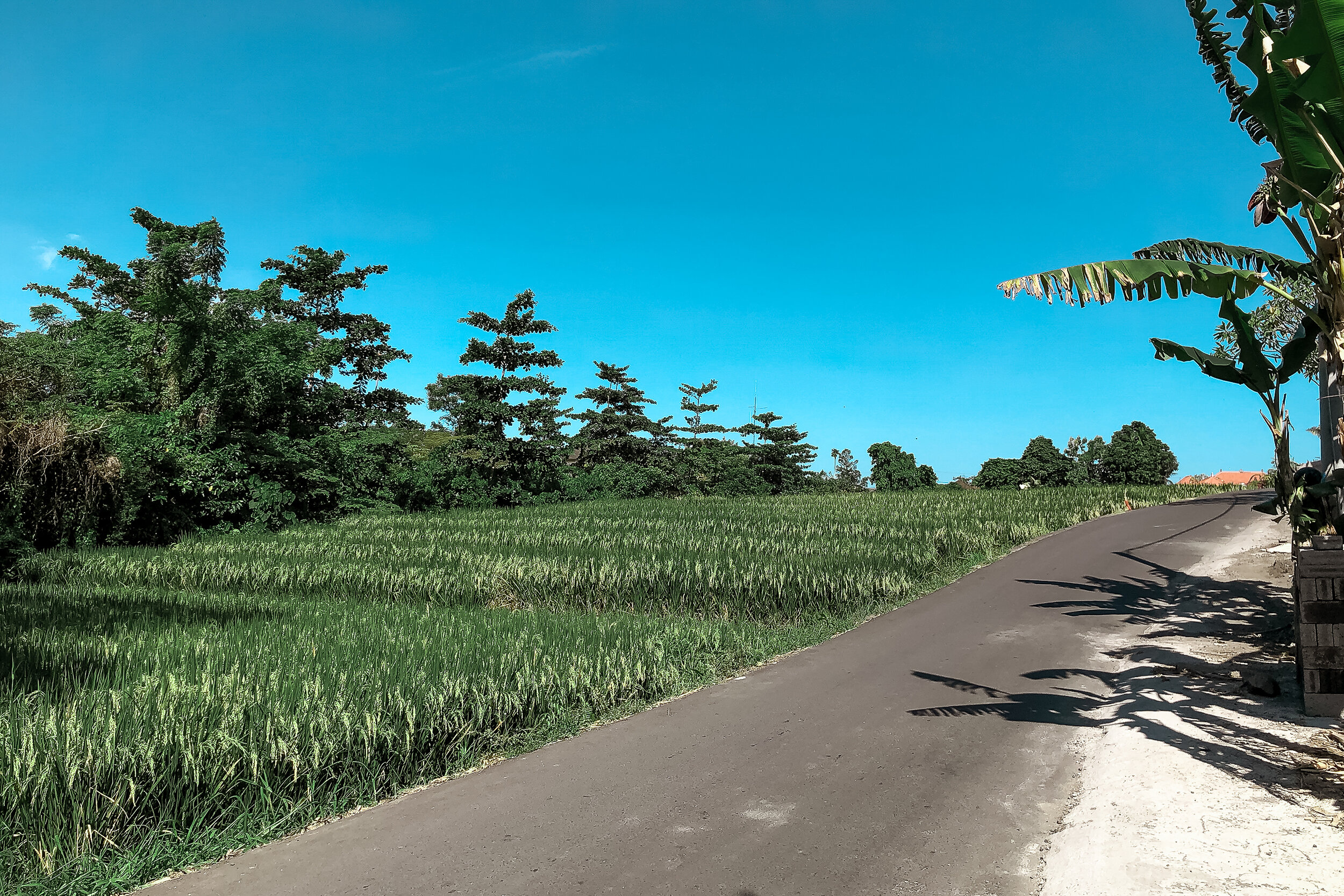
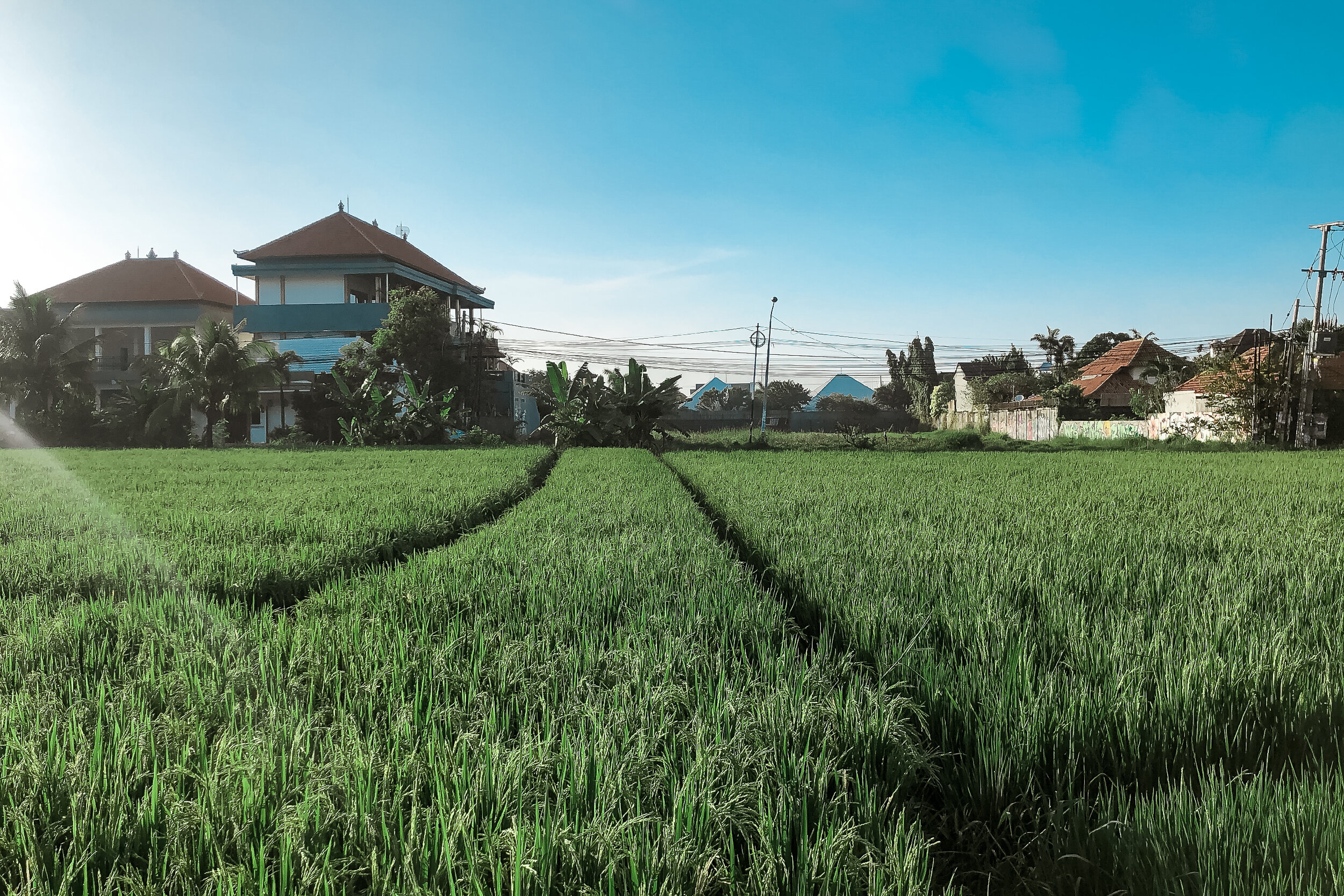
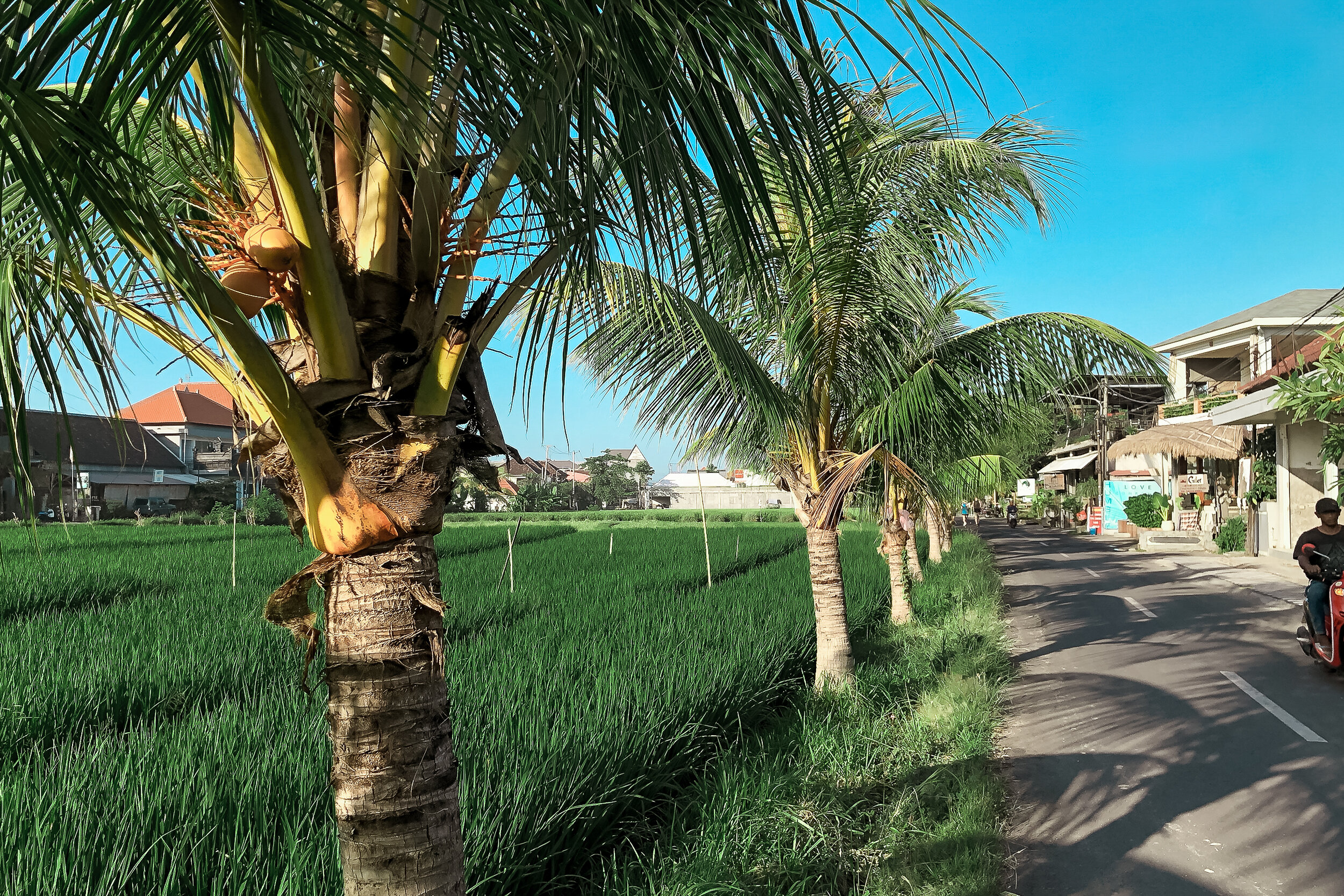
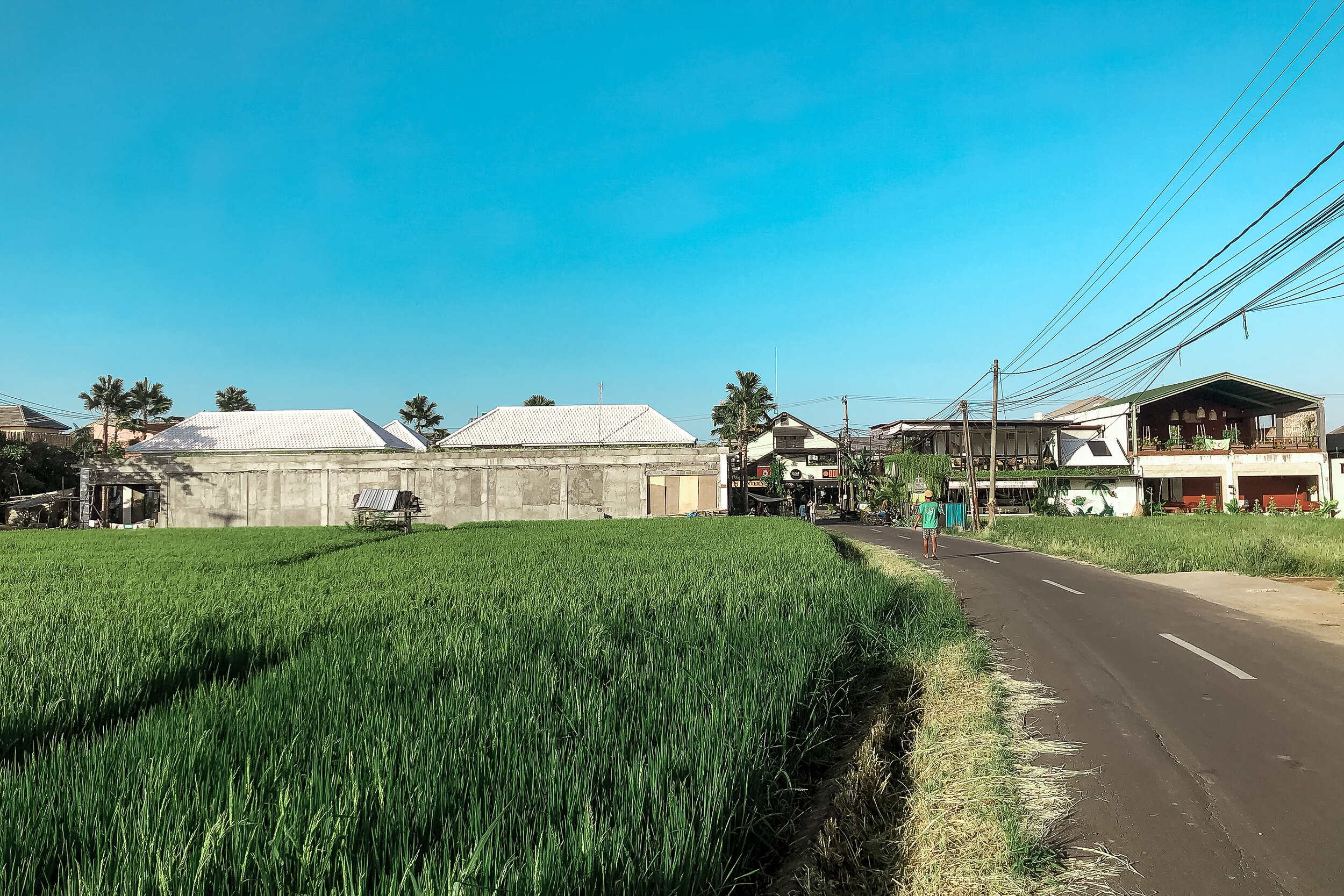
Getting Around
The fastest way to get around is by scooter but Canggu can easily be explored on foot.
Scooters range from 50-70K Rp per day (less than $5 USD) or 600K Rp per month ($43 USD)
For safety and to avoid a fine, always wear a helmet while riding a scooter
Carry a flashlight at night when walking along the roads. There are not many streetlights making it difficult to see and be seen.
Roads are often narrow and congested during rush hour.
Perpendicular from the shore are 3 main streets extending deep into Canggu. Also wander the side streets and pathways.
Beaches
Batu Bolong & Canggu Beaches. Easily the most popular and beautiful beaches in Canggu. There are plenty of restaurants, bars and beach clubs to find a lounge for the afternoon, watch the sunset, meet other travelers and enjoy the tropical vibes. Both beaches are known for their beginner and intermediate surf spots with many any beachfront businesses renting surf boards and offering lessons.
Echo Beach. Black sand beach with a seaside temple and a small cliff lined with cafes, barbecue restaurants and surf rentals.
Berawa Beach. A smaller and quieter beach away from the larger clubs with beach shacks, fisherman boats, rentable lounges and surf lessons.
Good to Know
Canggu, like many places in Bali have black sand due to the volcanic soil of the island.
The beaches are easily walkable with numerous surf snacks, beach clubs, restaurants and cafes to rent lounges, watch the sunset and enjoy a meal.
There are friendly stray dogs roaming around the island, you’ll often encounter several playing and looking for food along the beaches.
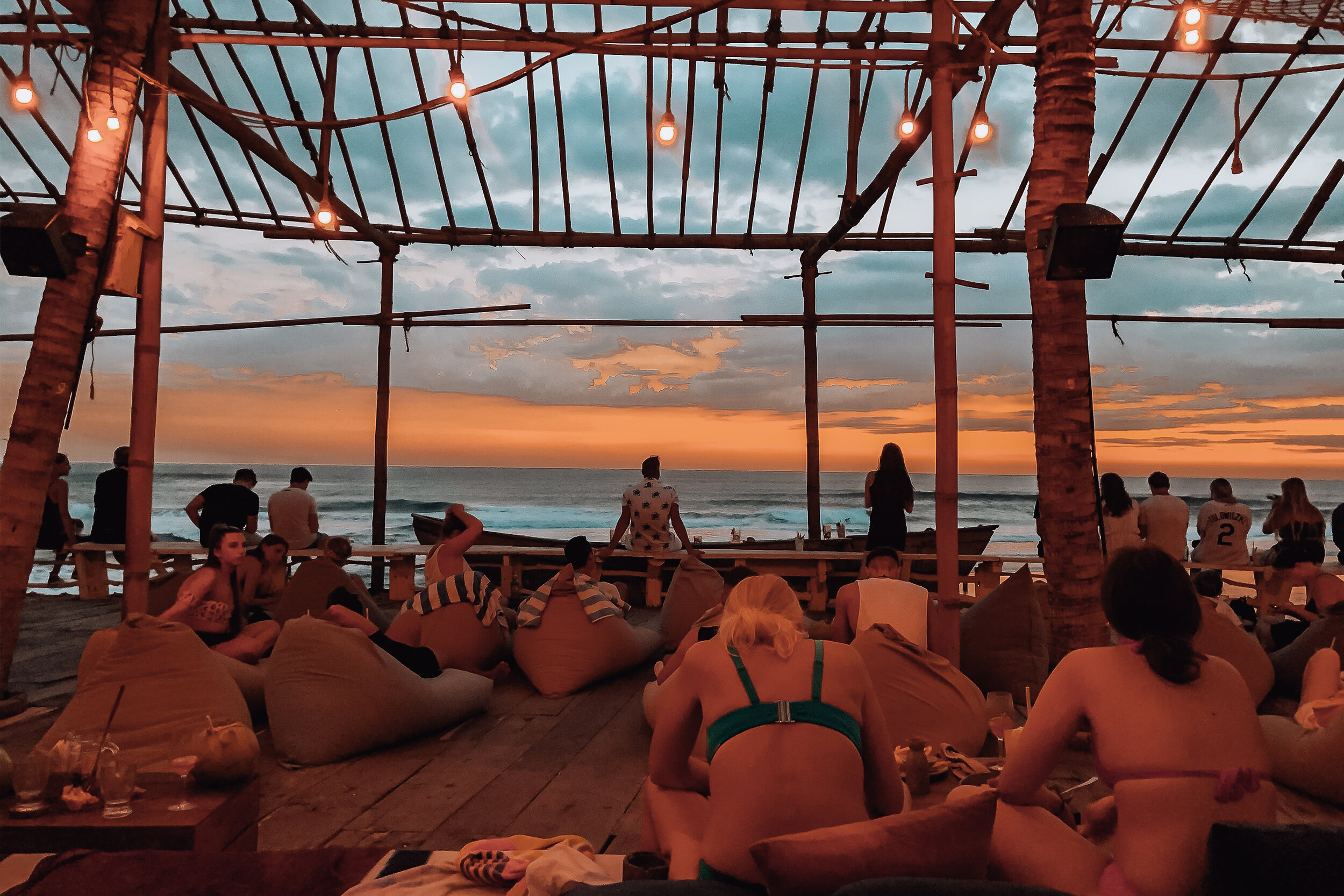
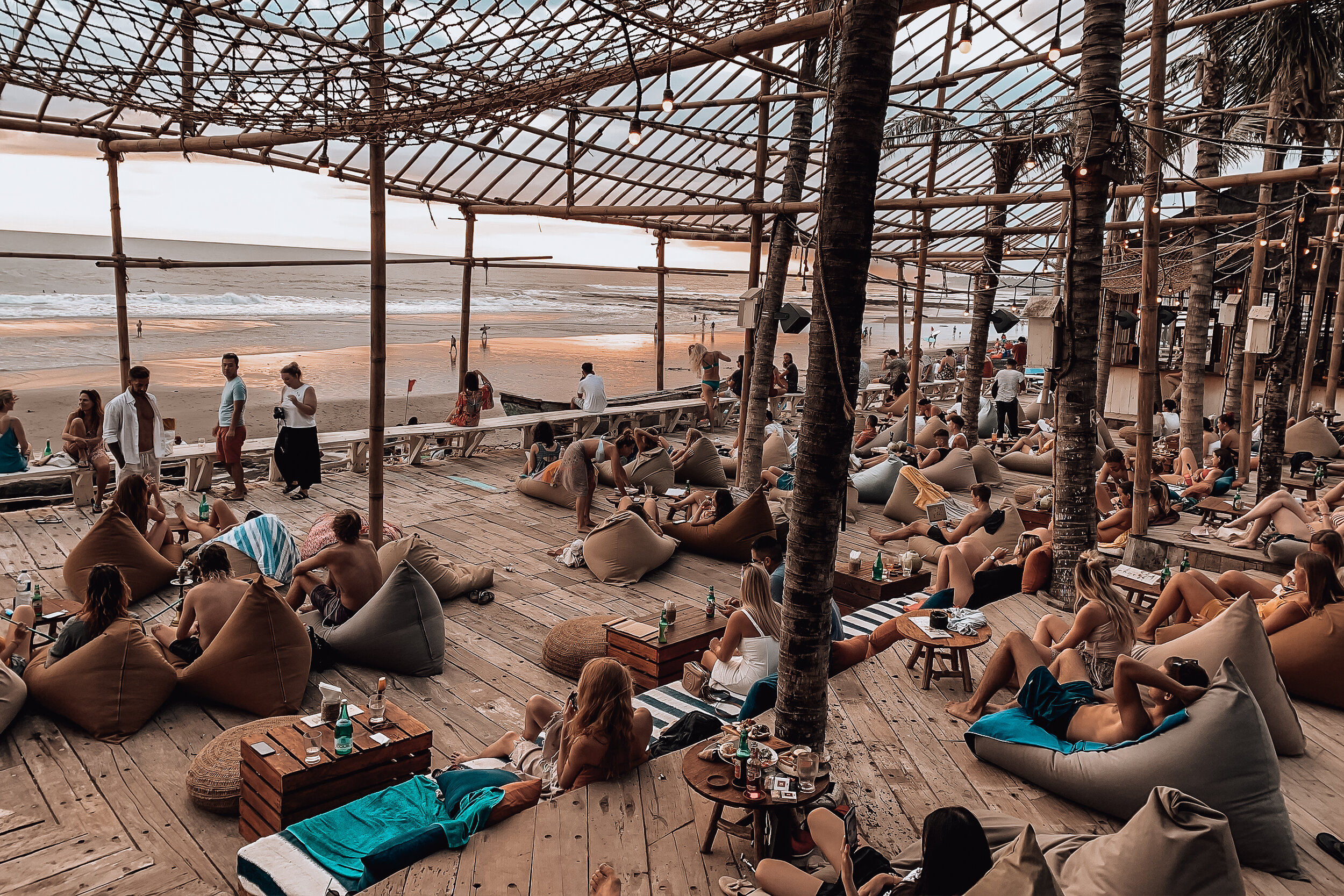
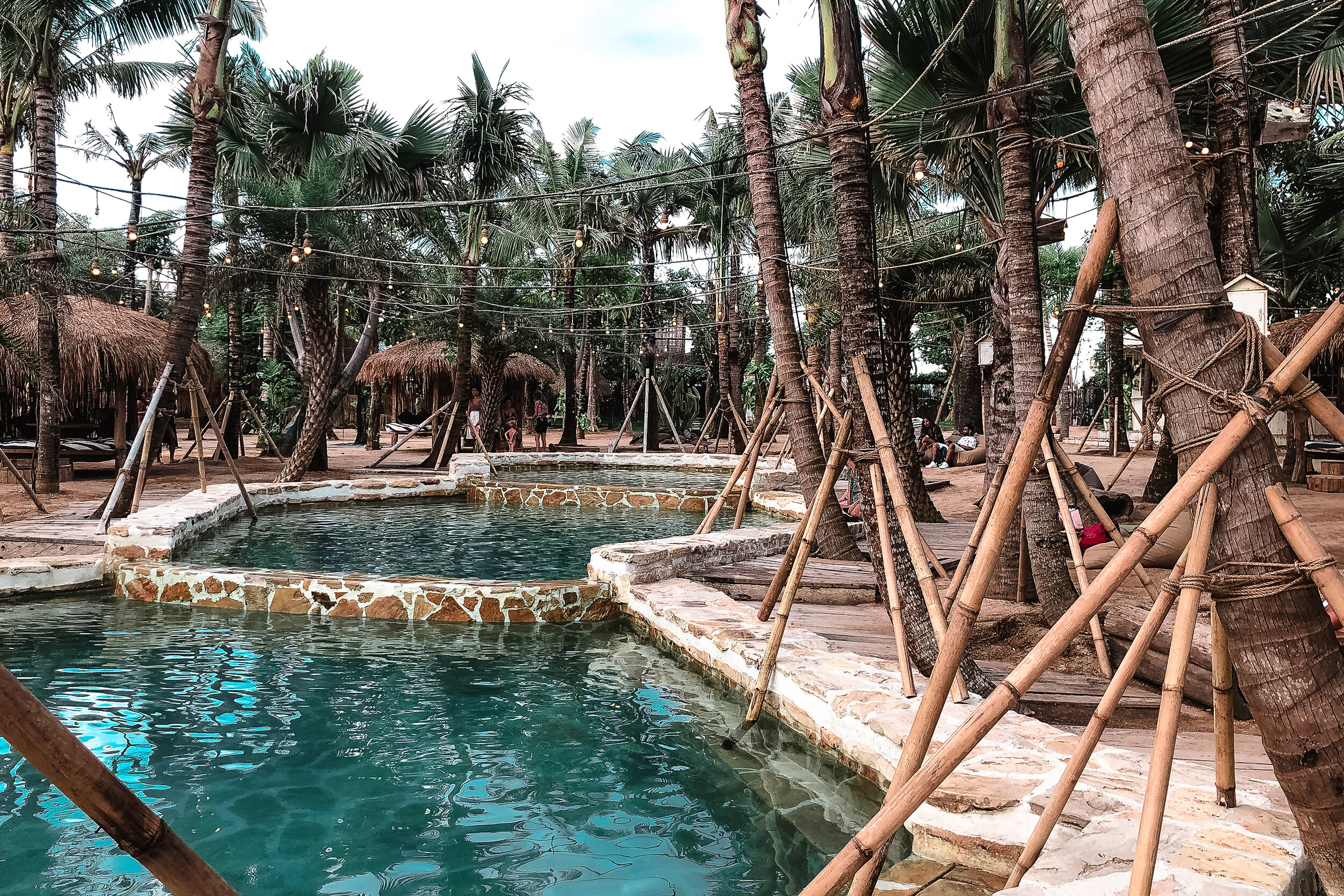
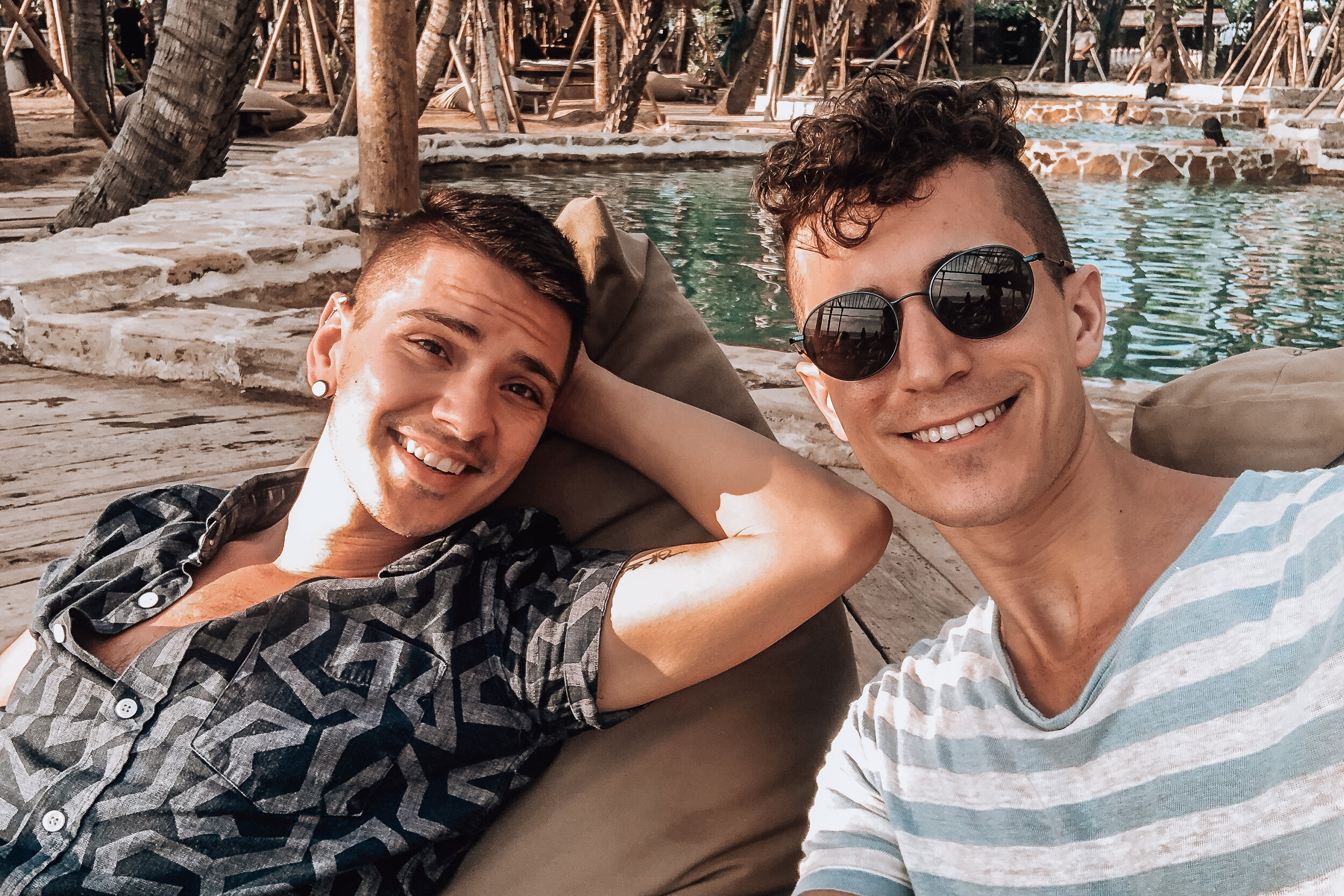
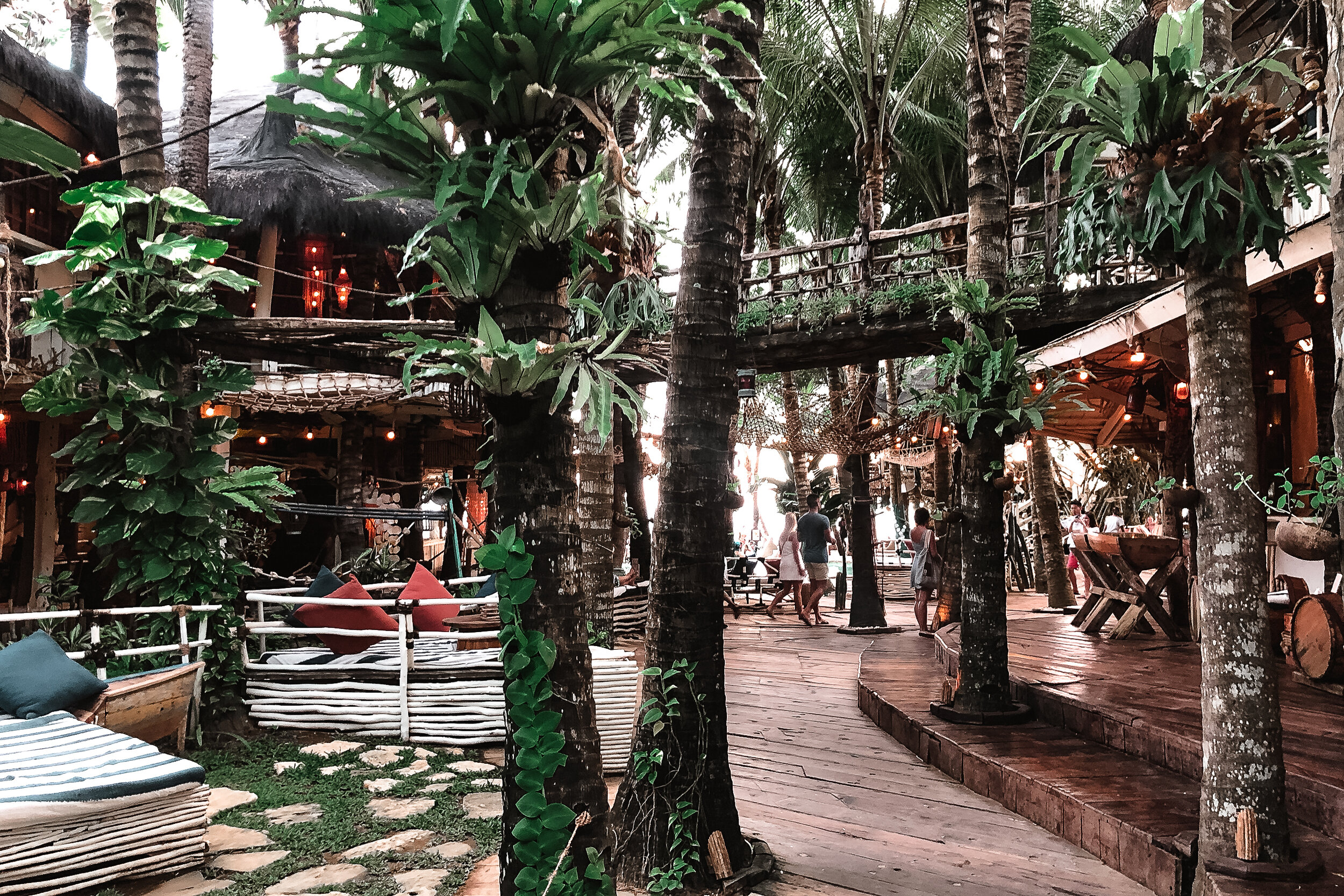
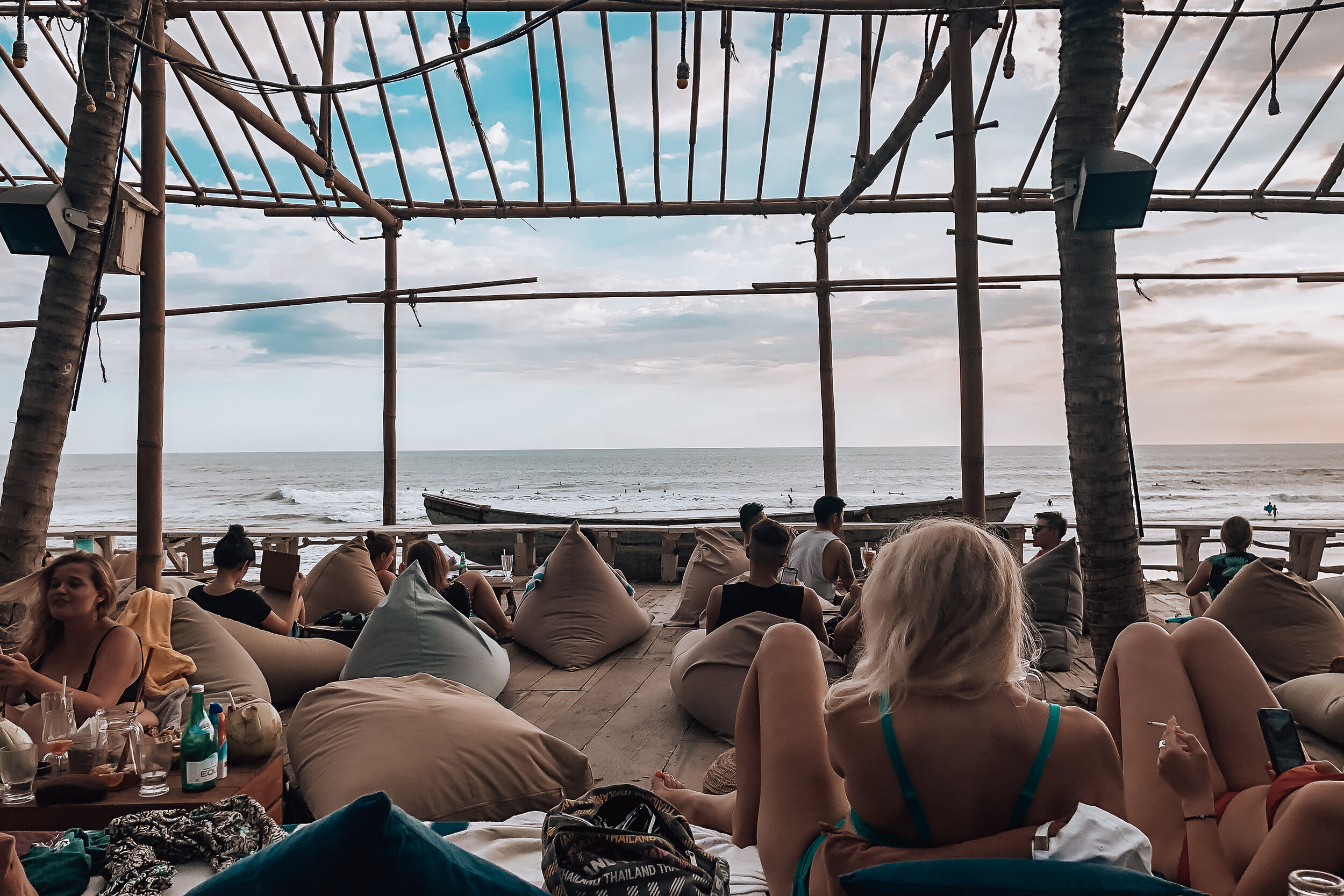
Beach Clubs
Beach clubs are a very popular way to enjoy the Balinese beaches. They can range from small oceanfront shacks offering lounges and drinks to large open air buildings with infinity pools, live music and several bars. They make for a great place to relax during the afternoon heat, enjoy the sunset or party at night.
La Brisa. A beachside, mostly outdoor and open air restaurant that felt like walking through a tropical treehouse. The food and drinks here are delicious and the vibe was relaxing even during the busier hour of service. Like many places in Canggu, the sunset here was spectacular.
The Lawn. A casual beachside restaurant known for its faux lawn, infinity pool, cocktails and food.
Finn’s Beachclub. A large, high-end and popular beach club recognized by it’s giant bamboo and thatched building. Finn’s is home to several pools, restaurants and bars often playing live music. You pay 750K+ Rp ($53USD) to enter which reserves your lounge or table and can be redeemed for food and drinks.
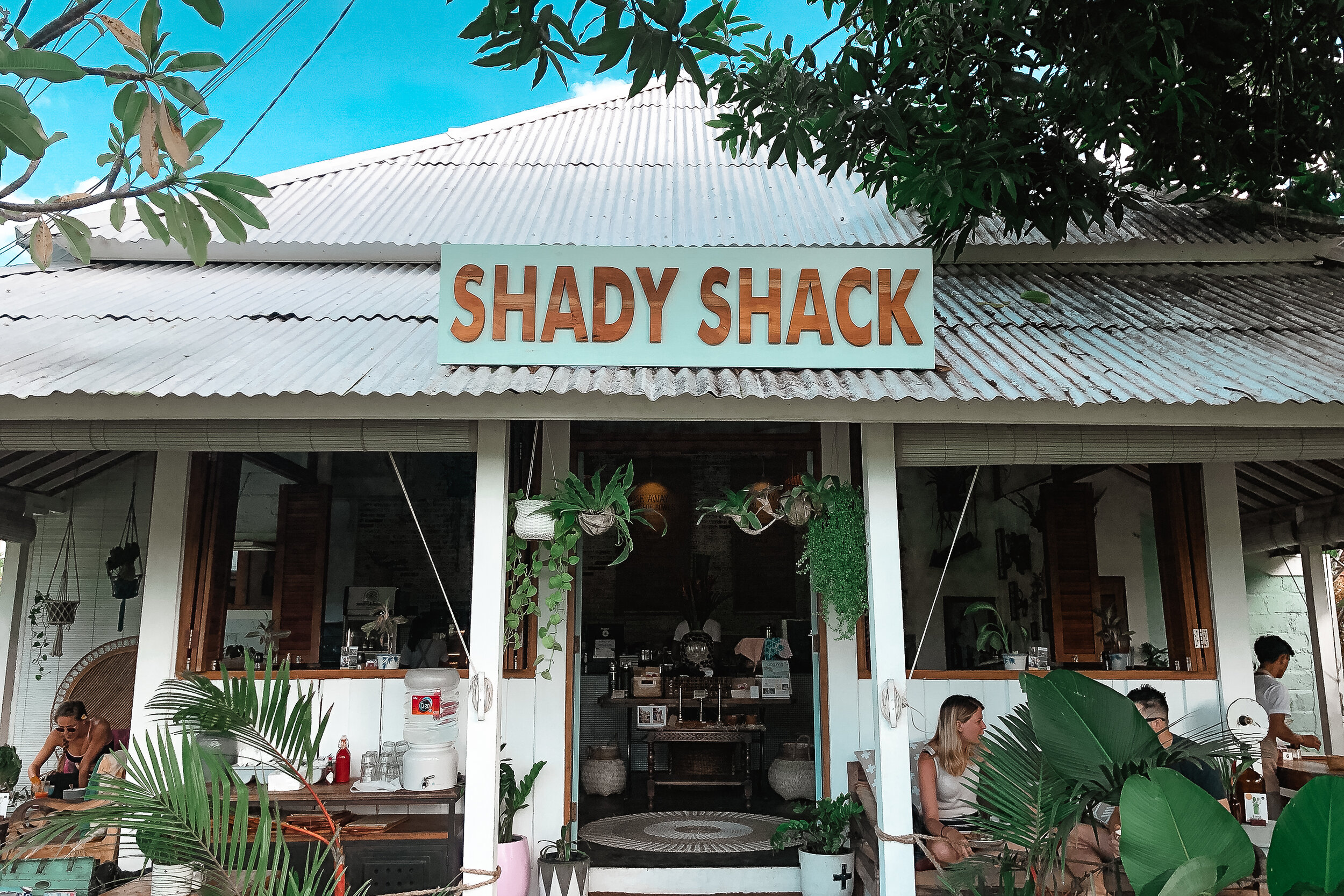


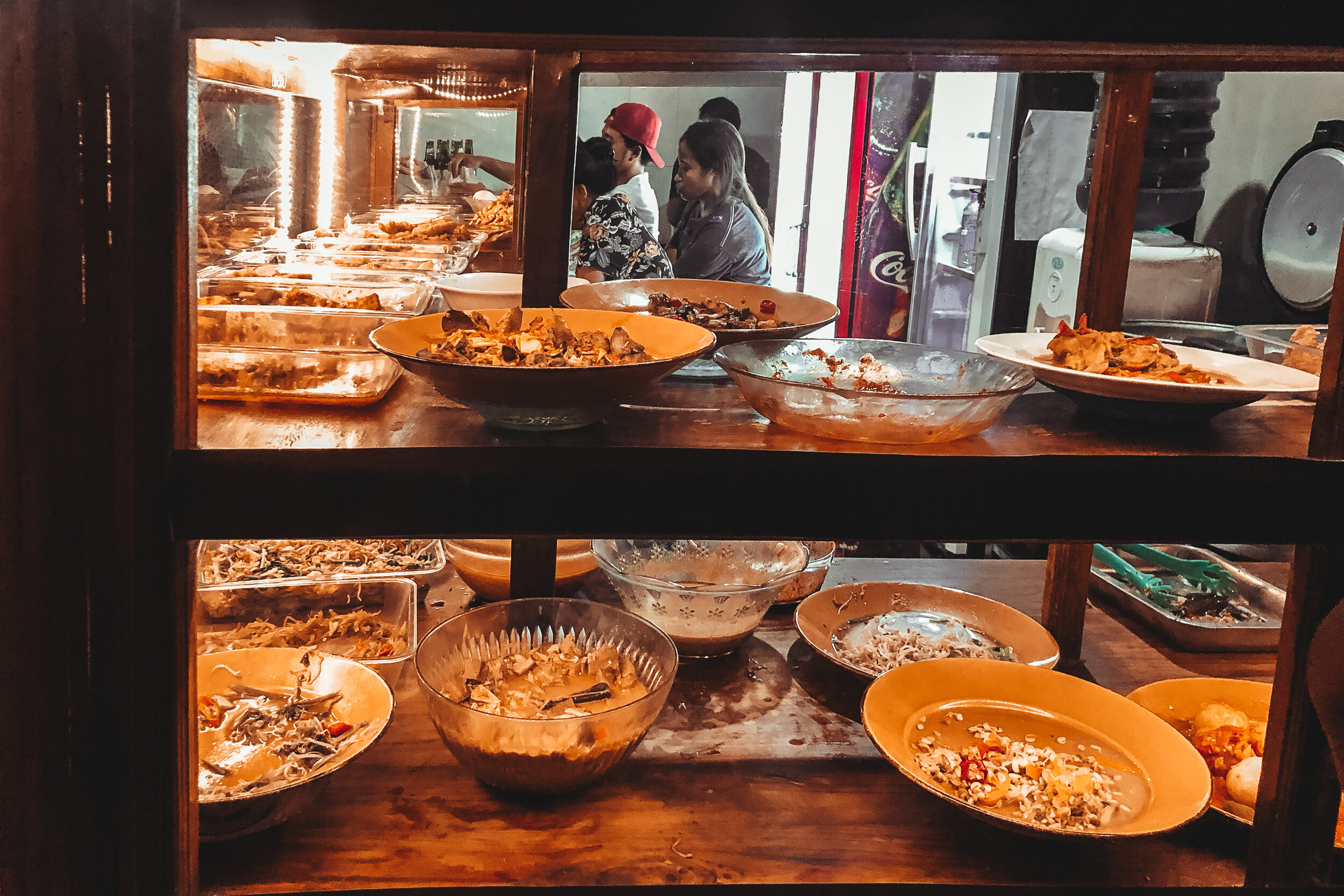
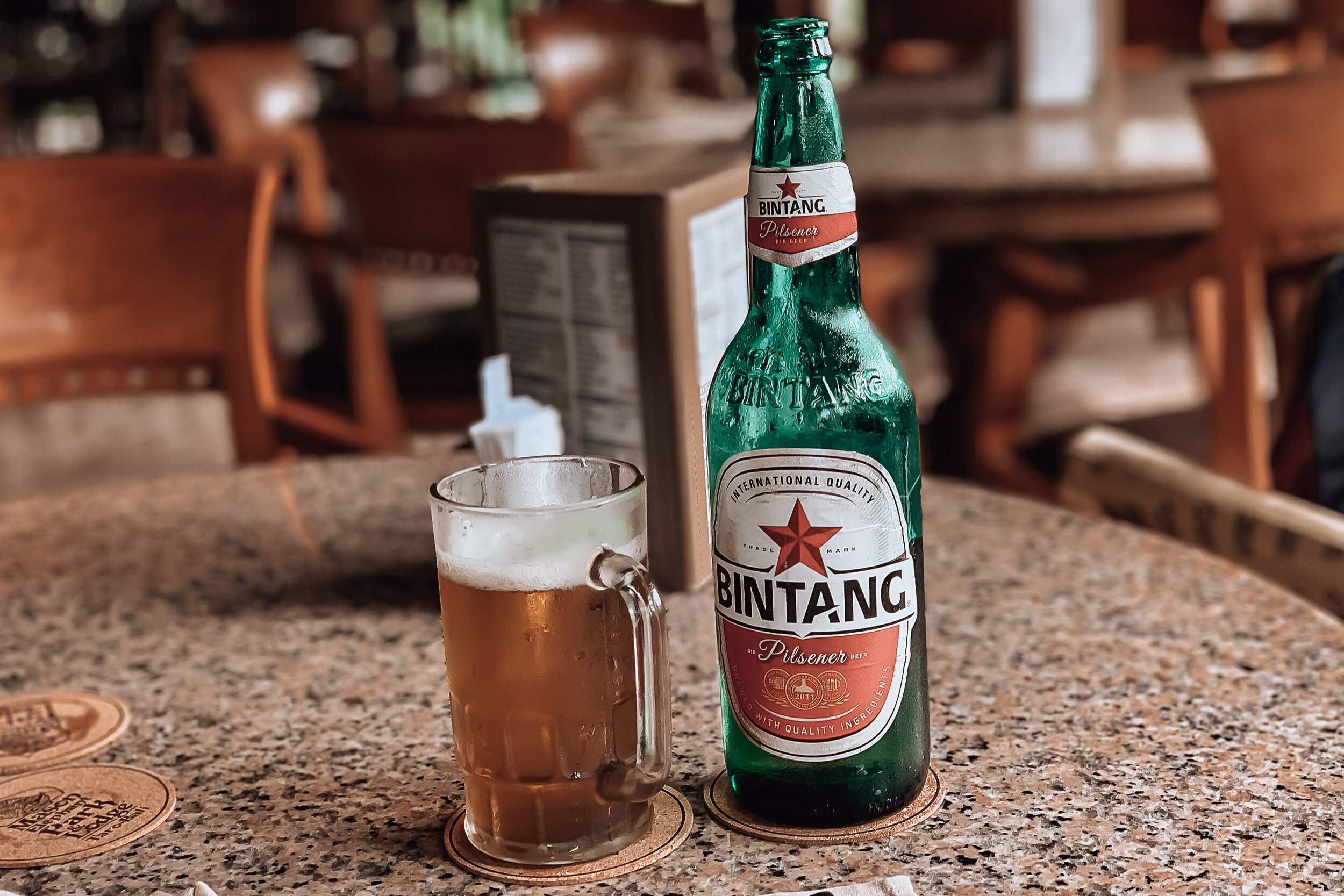
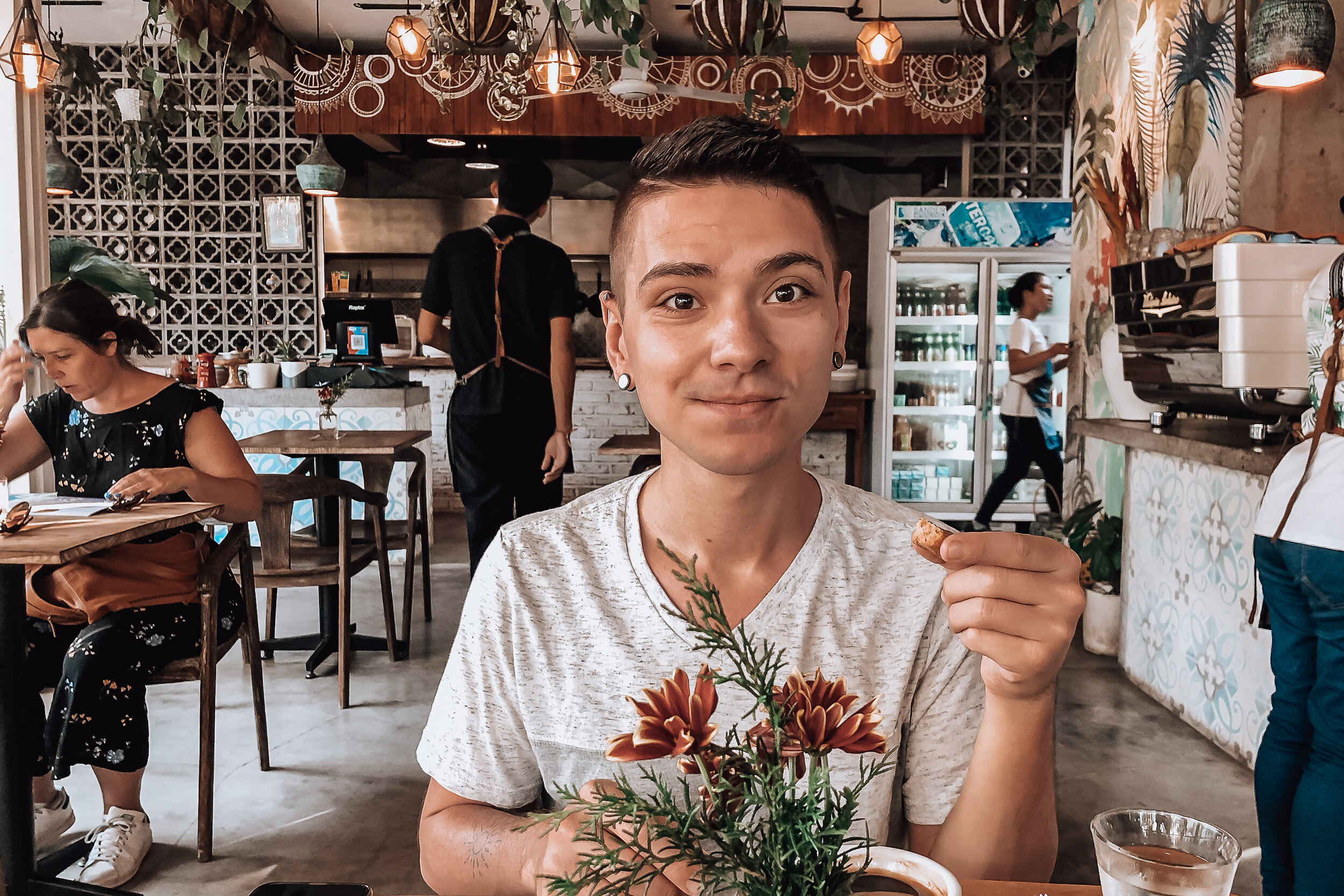
Food, Restaurants & Cafes
Canggu is known for its food scene. There are endless options to try traditional Balinese food, locally grown fruits, vegan meals and Australian inspired “brekkie.”
Warungs are restaurants serving a buffet of dishes and plates of fresh made, inexpensive and traditional Balinese cuisine.
Bali Bowls or smoothie bowls are mixtures of puréed frozen fruits often decorated in fresh fruit, grains and flowers. They’re a healthy, filling and refreshing way to start the day. Almost every cafe offers their own versions.
Bintang is Bali’s regional beer. It’s very light and sold almost everywhere for 15K Rp or $1.
Shady Shack. Located across from a rice field in an outdoor patio covered in tropical trees and plants. The menu is full of all kinds of colorful and creative vegan dishes. This is the perfect spot to come for Bali bowls and to drink kombucha through a papaya stem straw.
Gypsy Kitchen. A great restaurant at any time of day but especially during breakfast for their delicious egg dishes and flavorful coffee.
Mocca. An open air cafe with Bali bowls, fresh coconuts, and vegan dishes made with jackfruit and tempe.
Temples & Offerings
The Balinese are very spiritual people, mostly practicing Hinduism. Their temples are easily recognized across the island and important places for families to gather.
The Balinese leave daily offerings in front of their homes and business. These offerings are usually small, leaf woven baskets containing flowers, burning incense, cookies, candies and money. Out of respect, make sure not to step on them.
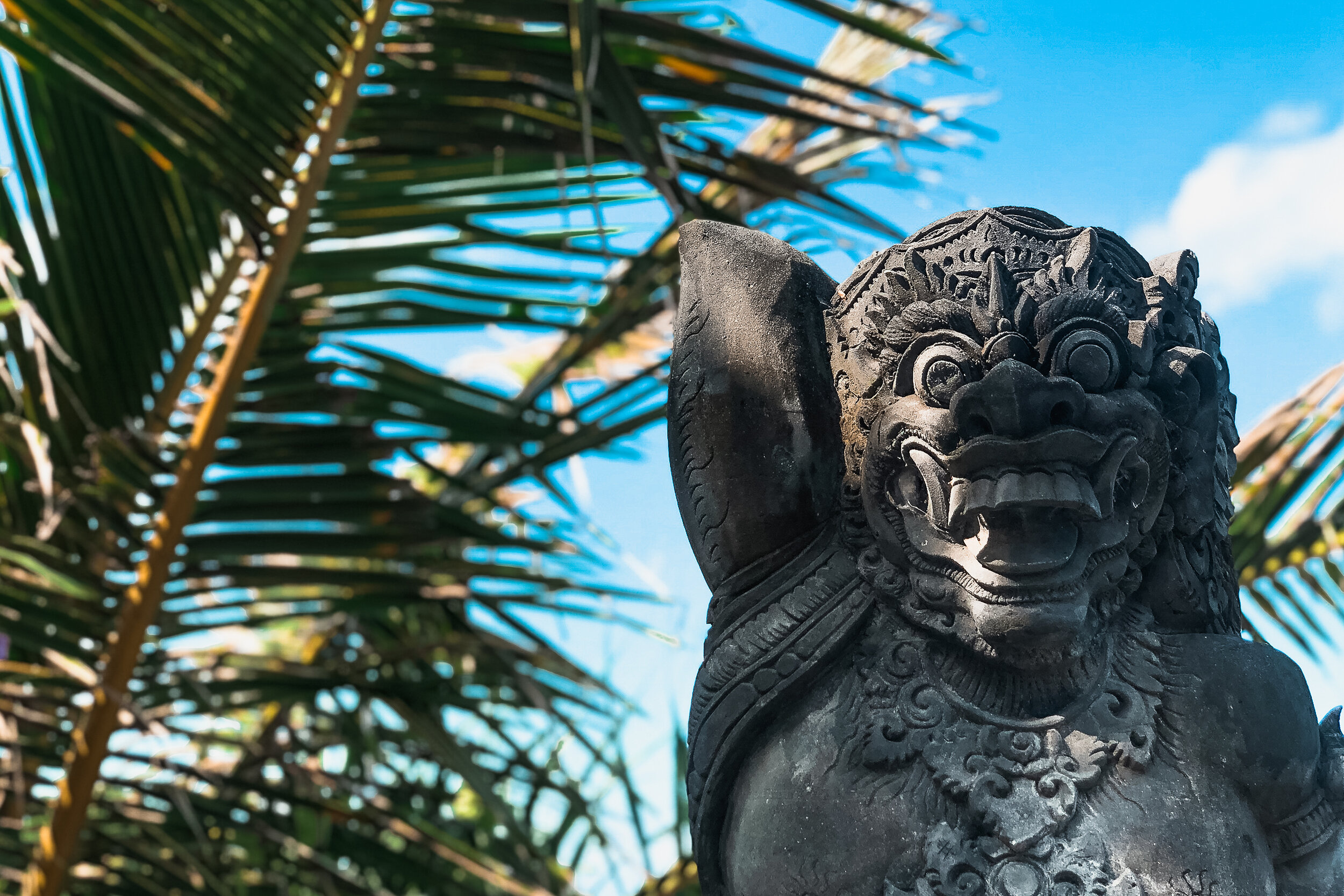
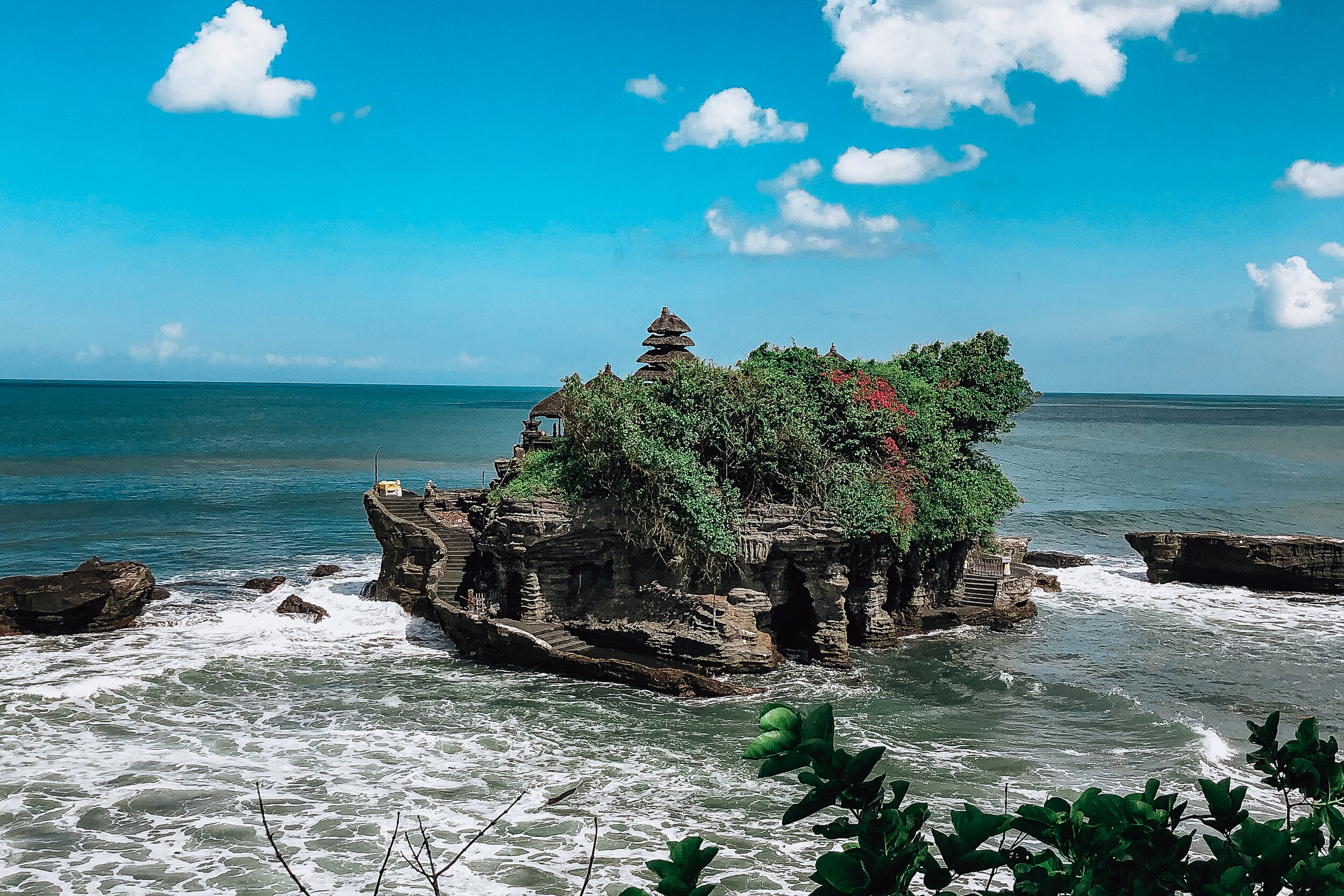
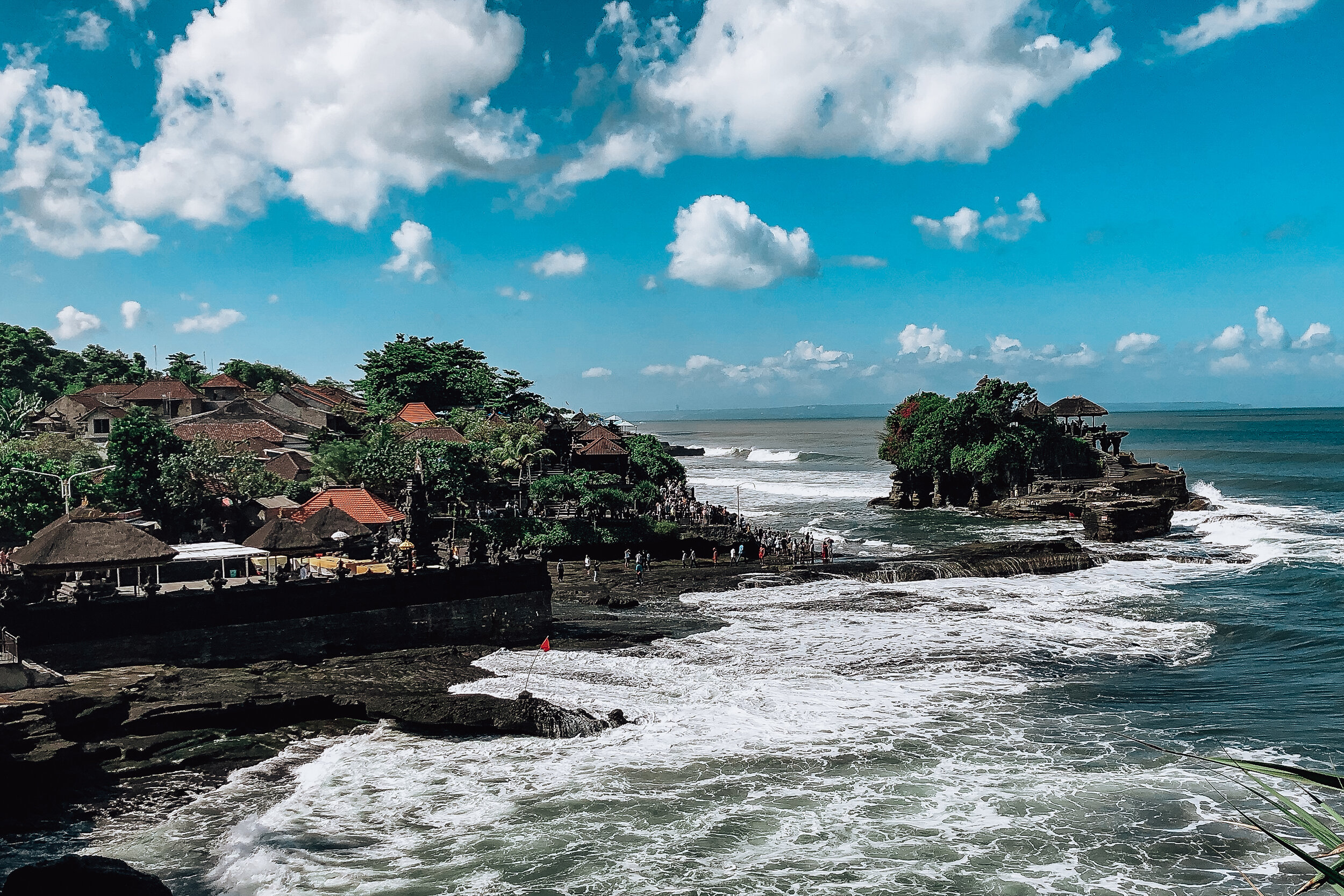

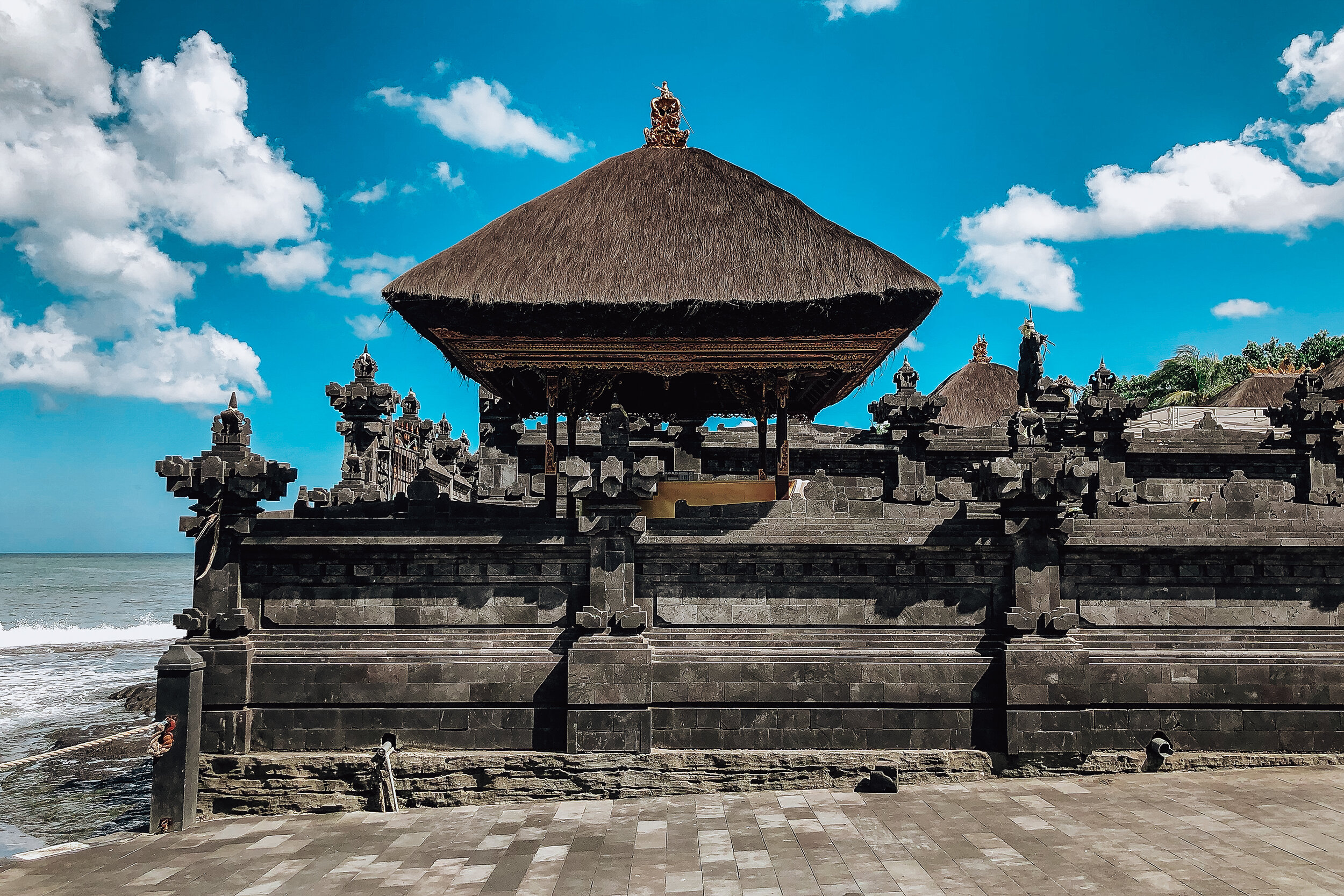
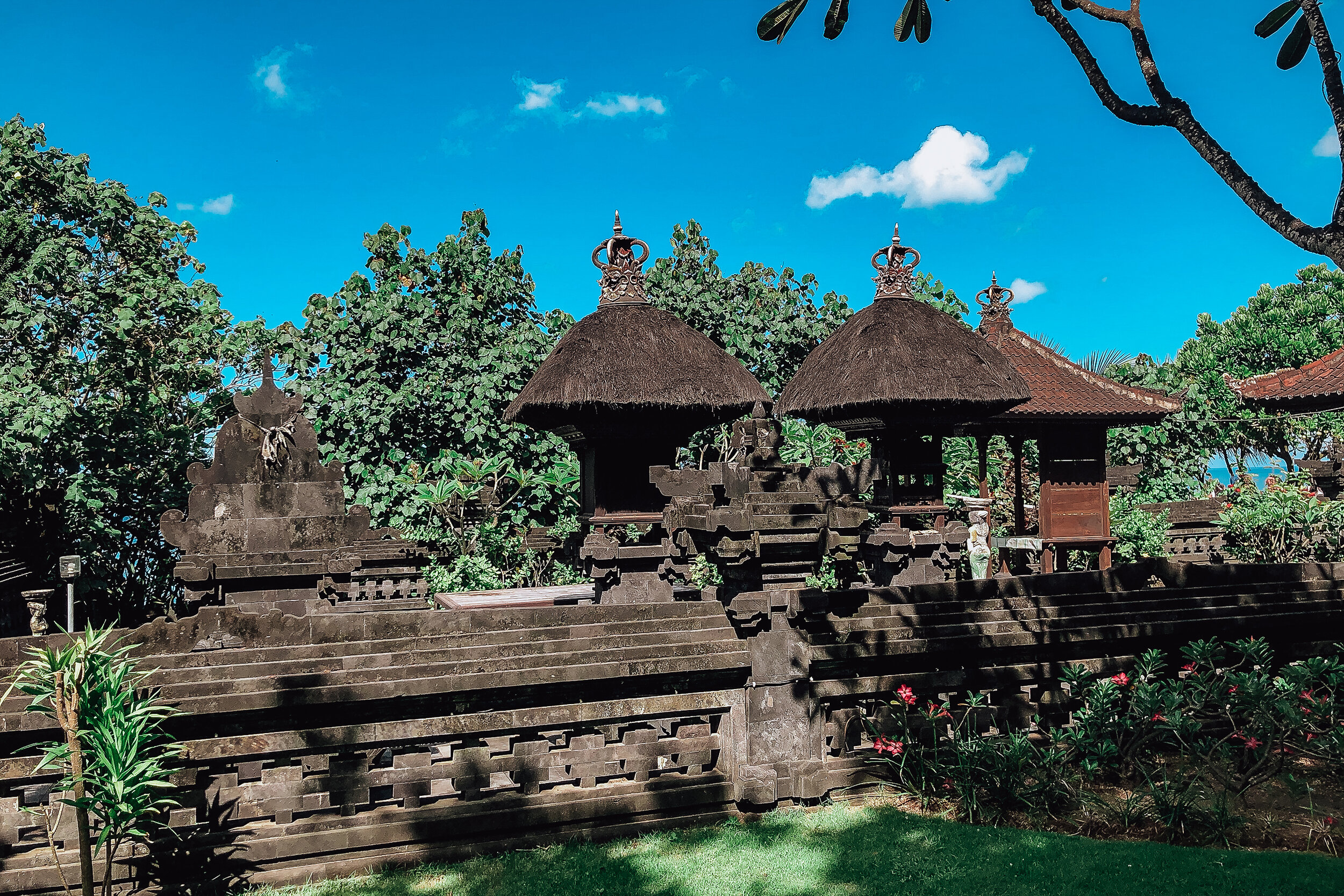
Tanah Lot Temple
A short taxi ride from Canggu is Tanah Lot Temple. It holds a special importance to the Balinese as its 1 of 7 ocean temples built to protect Bali from evil sea spirits. The temple is perched on a rock formation only accessible during low tide. Non-Balinese are not allowed to enter but can view from the nearby cliffs and outcrops below. Nearby is are temple gates and a number of food stalls to buy young coconuts and klepon, a green rice ball with palm sugar inside and a coconut shaved exterior.
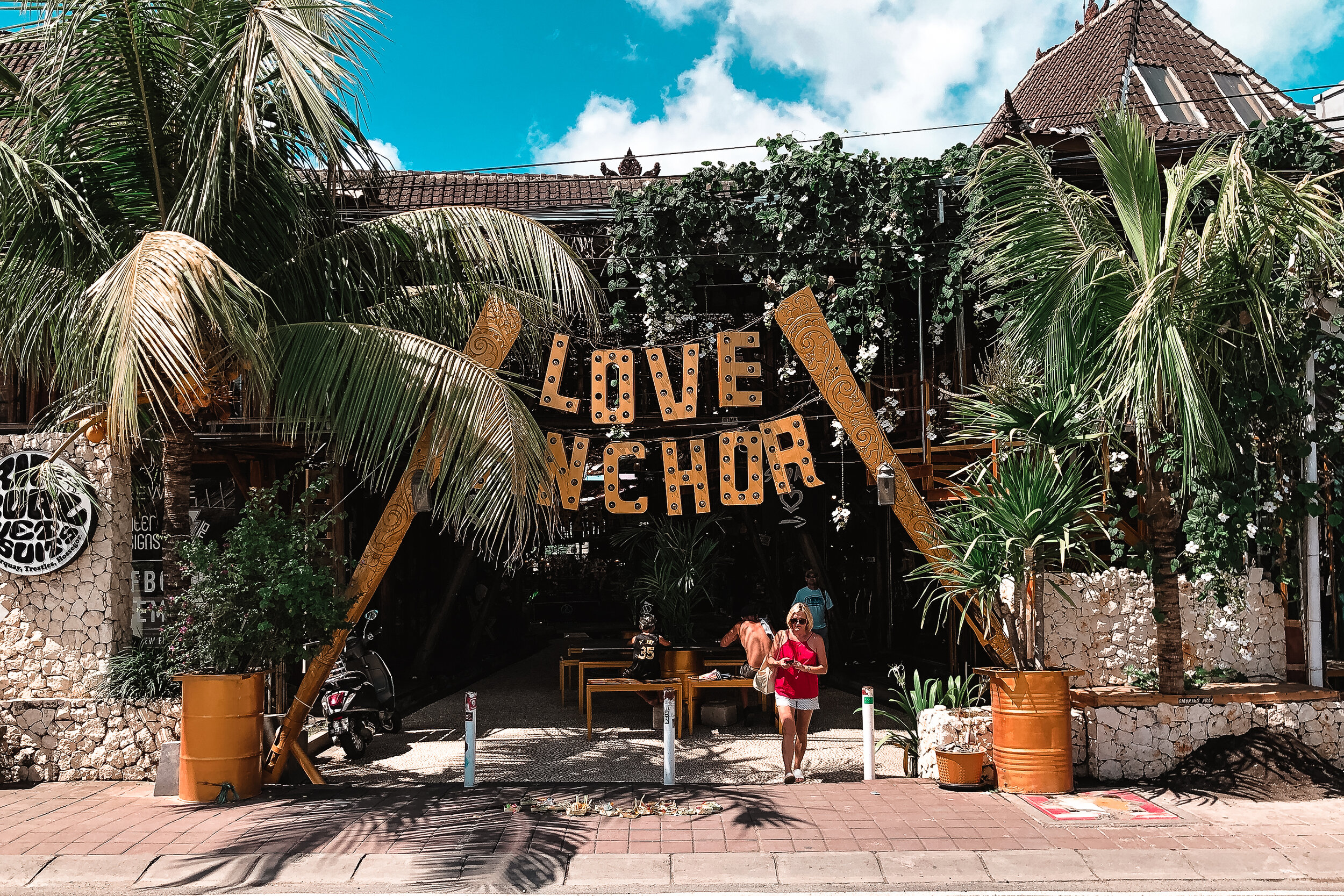
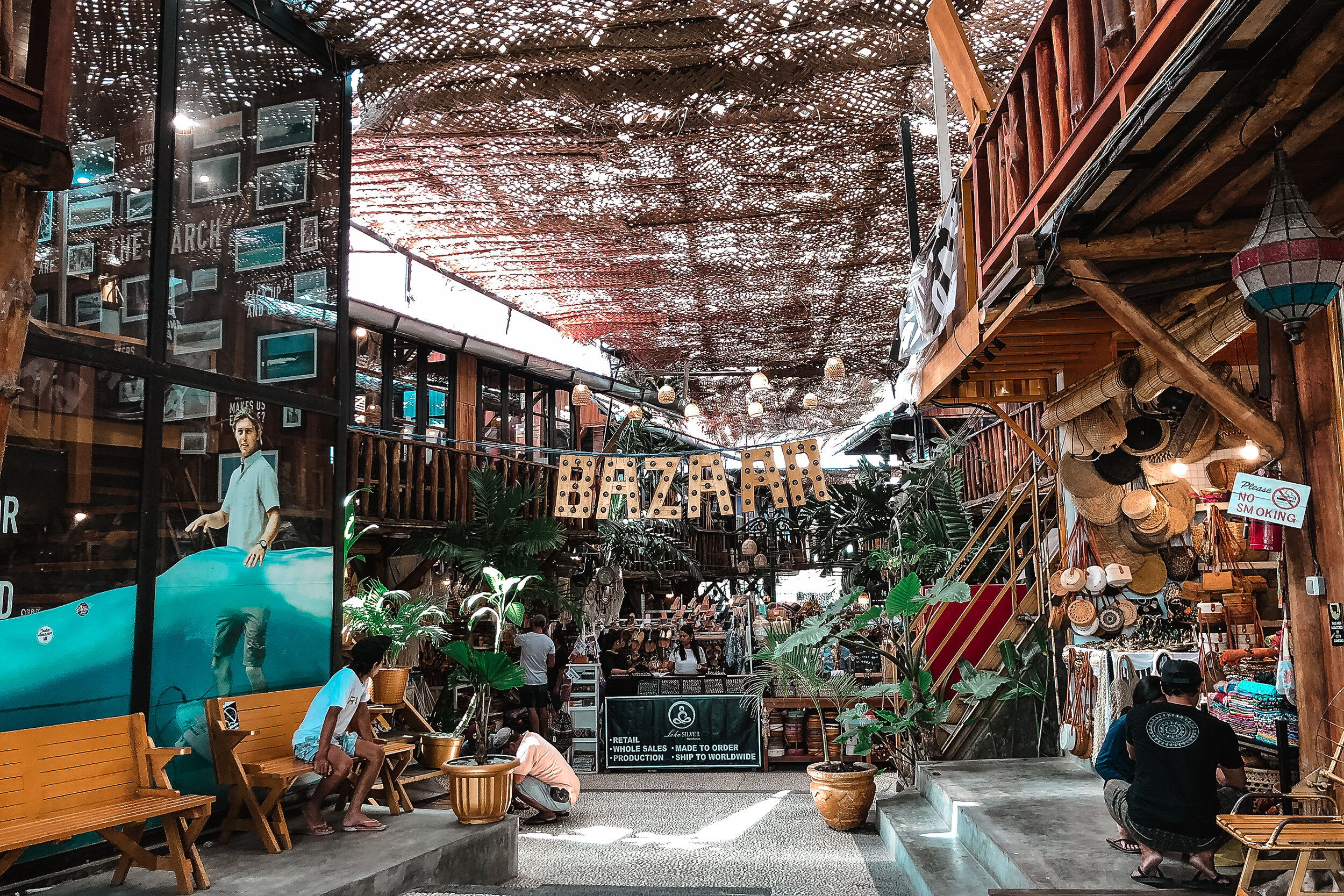
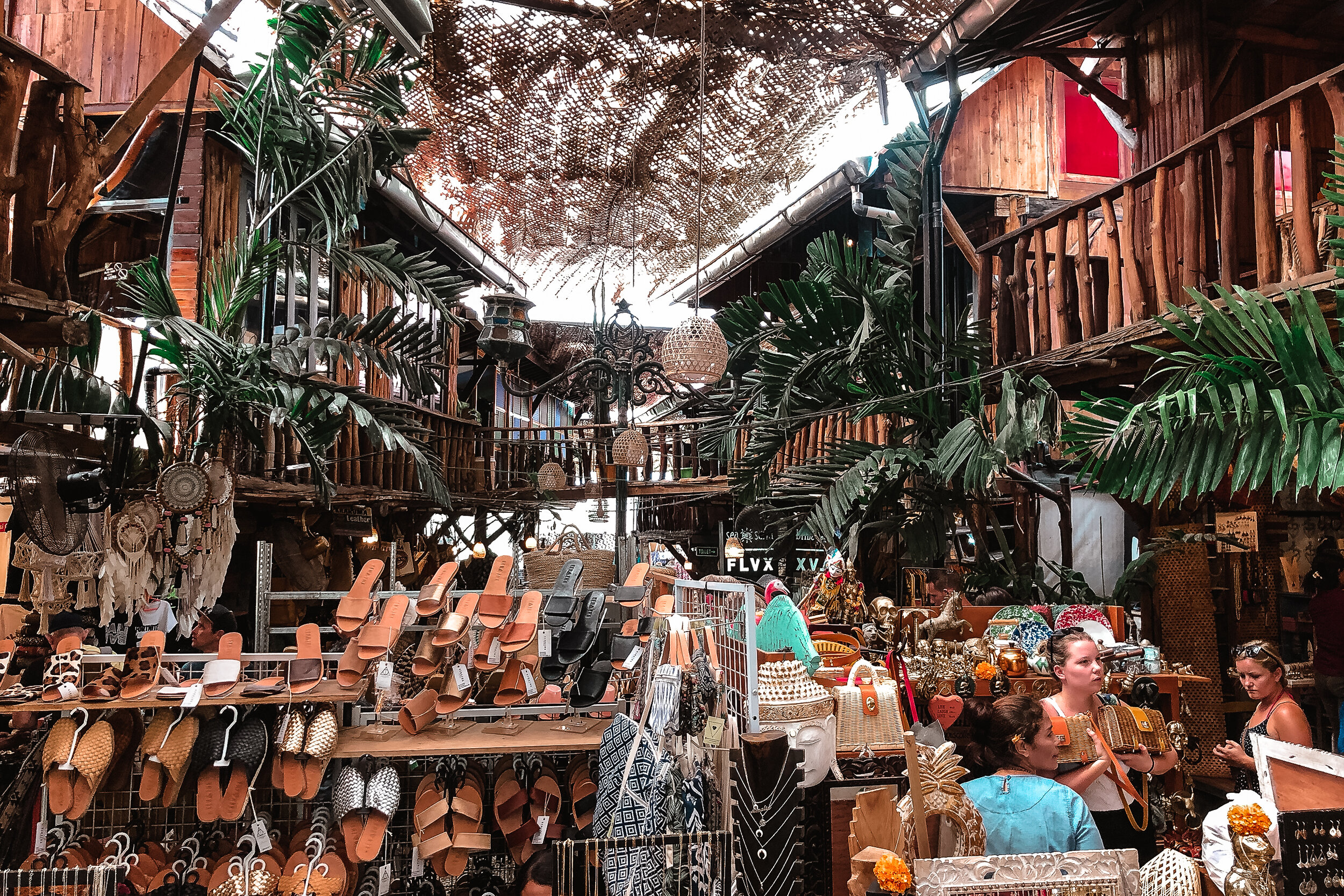
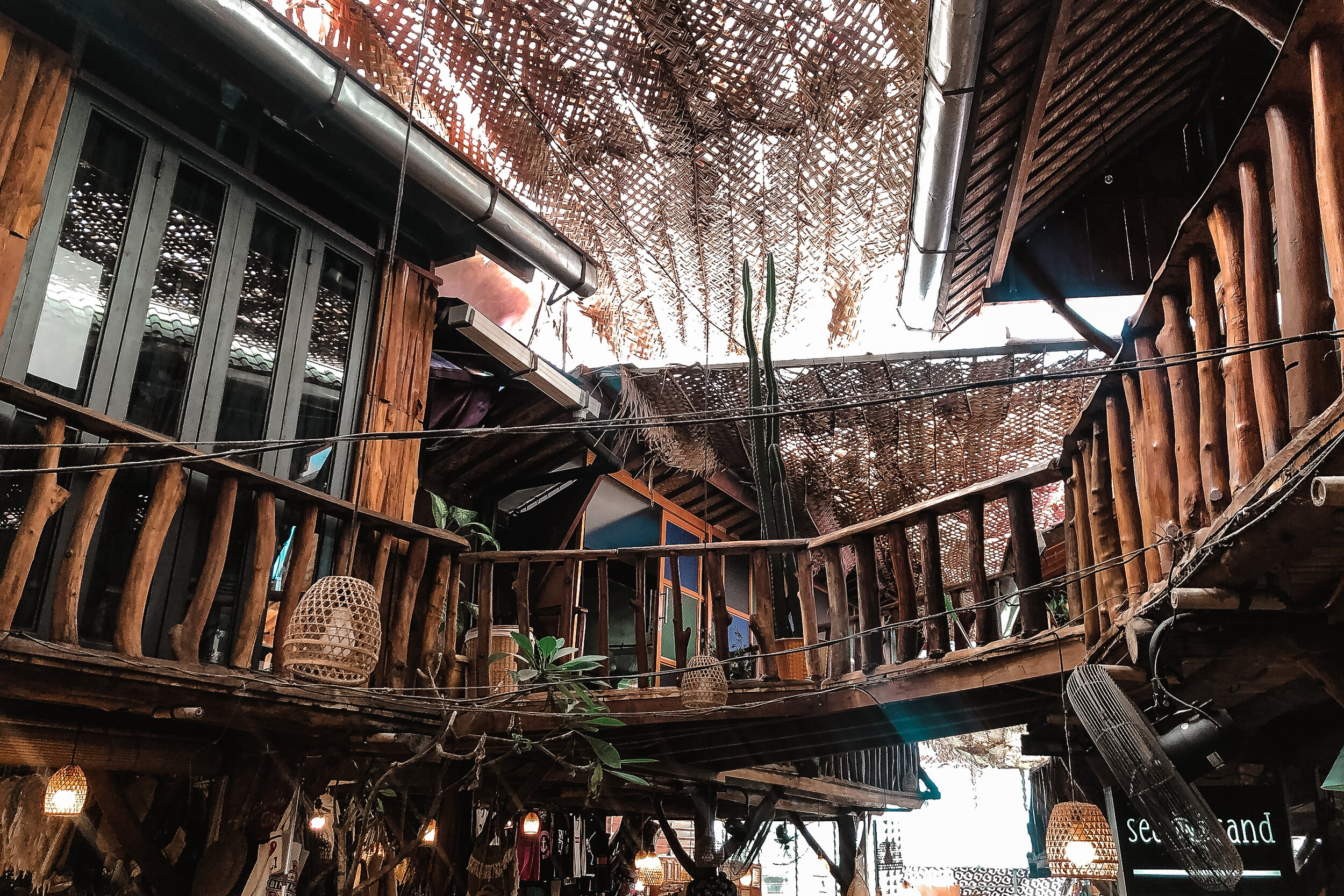
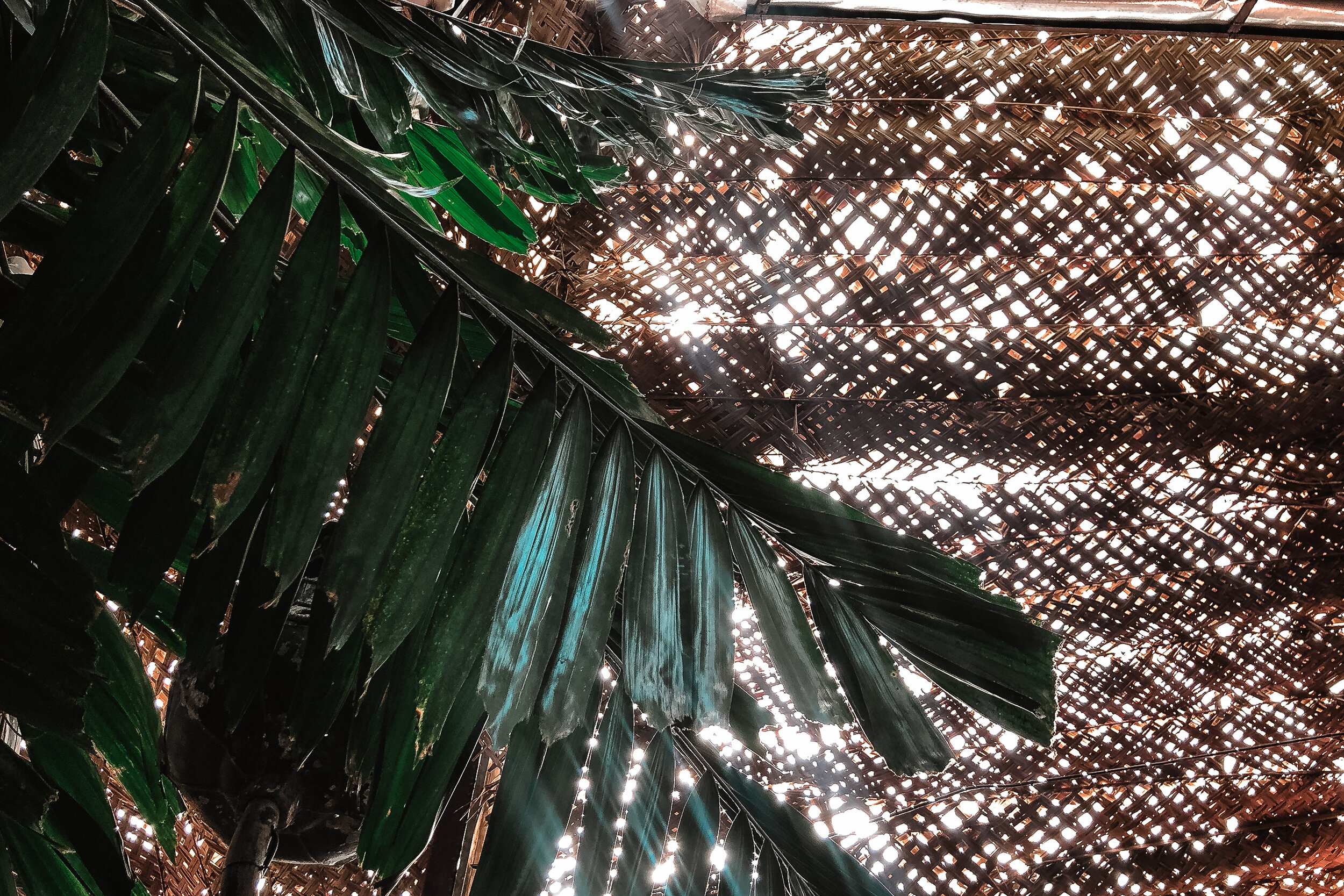
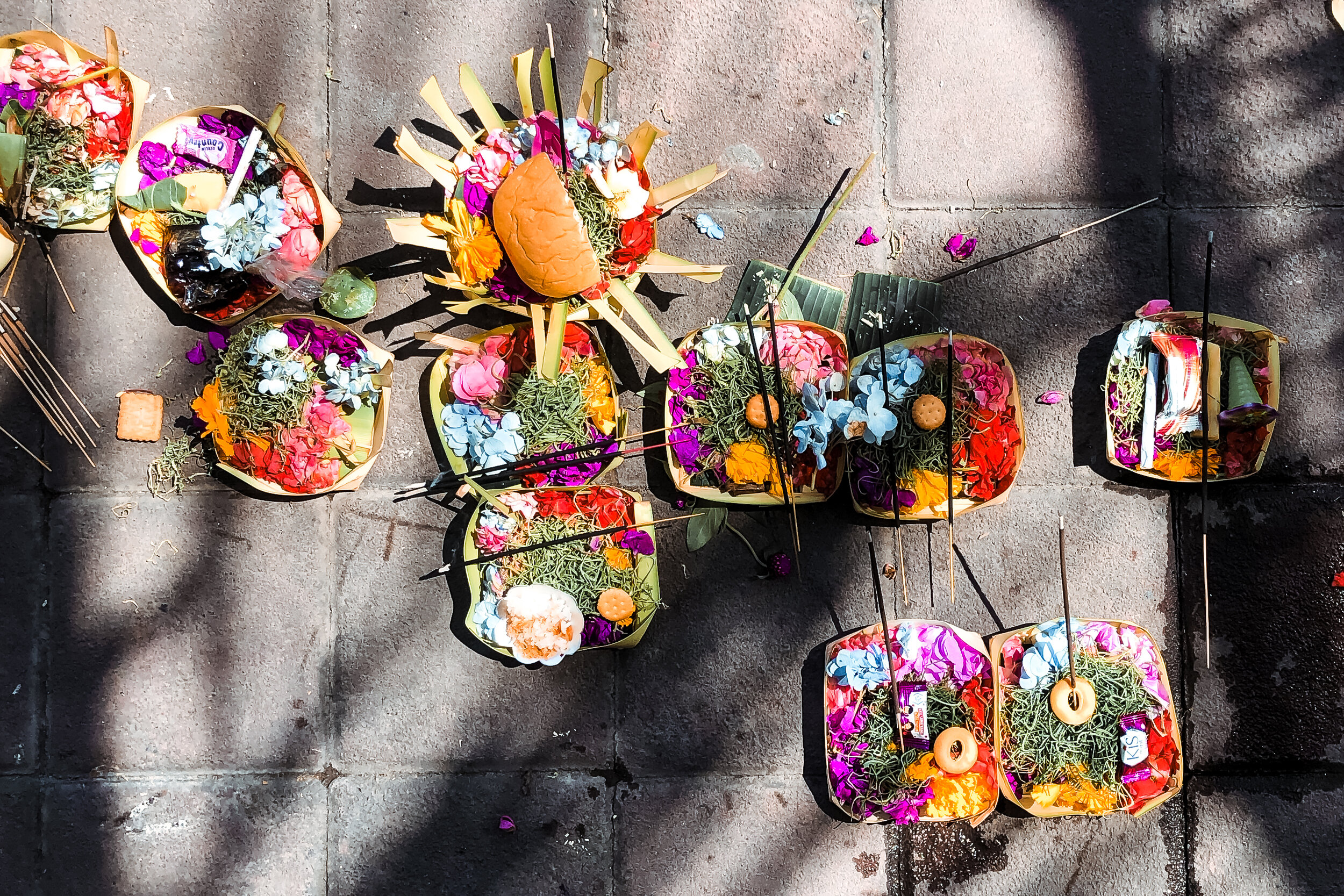
Markets
Love Anchor Canggu. An expansive indoor market with booths and vendors selling locally made home goods and crafts. You’ll often be offered a “special price.” Play along, haggle and never accept the first price. We picked up a pillow case and macrame plant holder for our apartment back in NYC.
Gypsy Market at La Laguna. A Sunday afternoon and evening market with live music, performers and vendors selling organic produce, cooked foods and hand made goods at La Laguna restaurant.
Old Man’s Market. Located in Old Man’s, a beer garden on Batu Bolong Beach, on the last Saturday of every month. The market hosts a mix of farmers, artisans, locals and expats all selling unique, sustainable and creative goods. If you’re not here while the market happens, the beer garden is a nice spot to grab a drink, watch the sunset or meet other travelers.
Things to Do
Take a Surf Lesson. The best surf lessons can be found by walking the beach. Many instructors and businesses have signs offering board rentals for 50K Rp ($3.50 USD) or 400K Rp ($28 USD) for a 2h lesson.
Get a Massage. Various types of massages are offered throughout Canggu and Bali in general for an affordable cost. Look for signs outside of businesses offering 60min or signature massage. It’s not uncommon to find one for 50-150K Rp ($3 - $11 USD)
Join a Beach Cleanup. At times, the currents bring in tons of plastic waste floating in the ocean. Join a beach cleanup or simply do your part to pick up any plastic you see.
Seminyak
Neighboring Canggu, this dense area is known for its expat community, street-food, international restaurants, high-end beach clubs, pockets of LGBTQ nightlife and white sandy beaches. We spent most of our time nearby in Canggu but ventured into this neighborhood as we walked down the shoreline and in-land for a floating brunch.
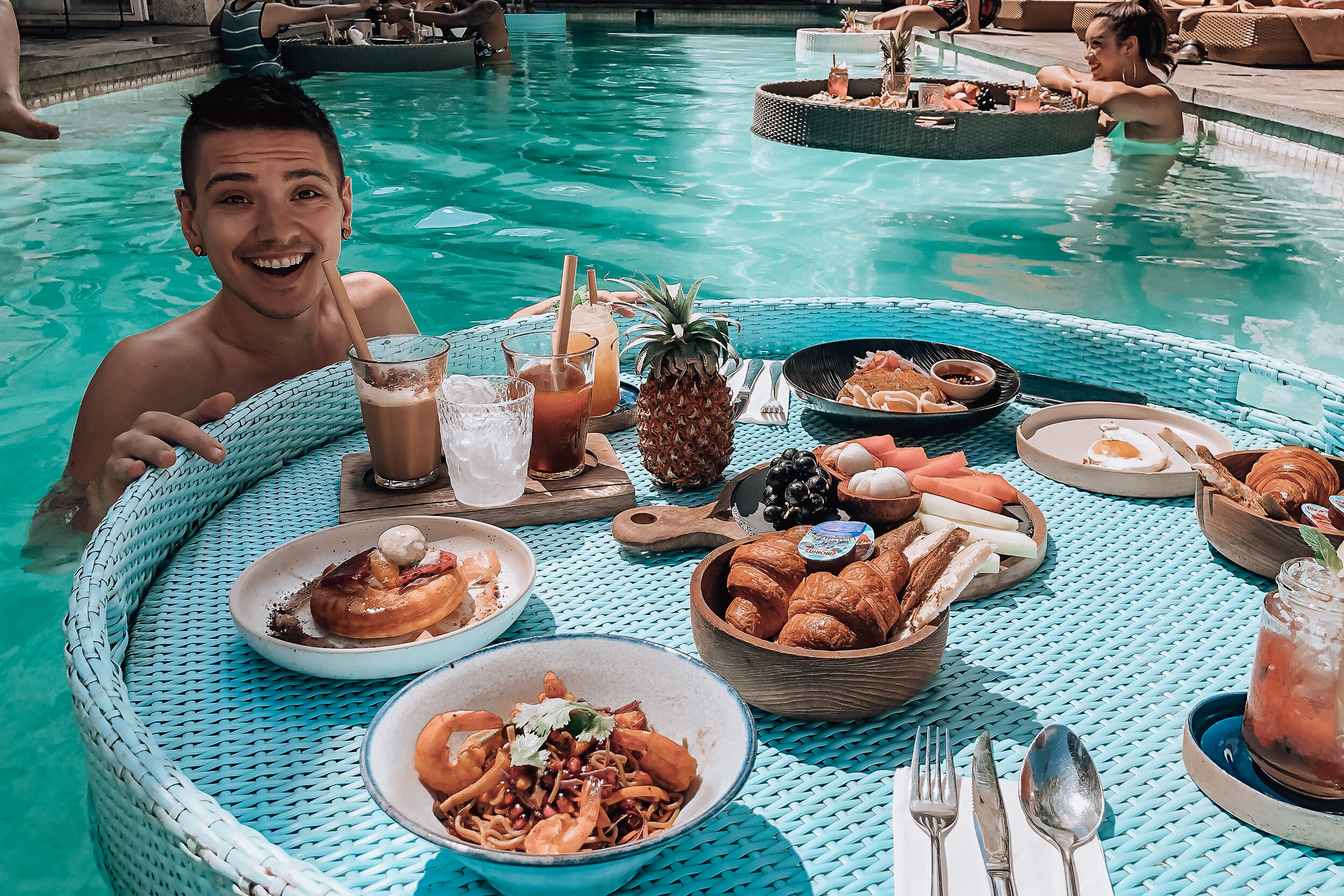
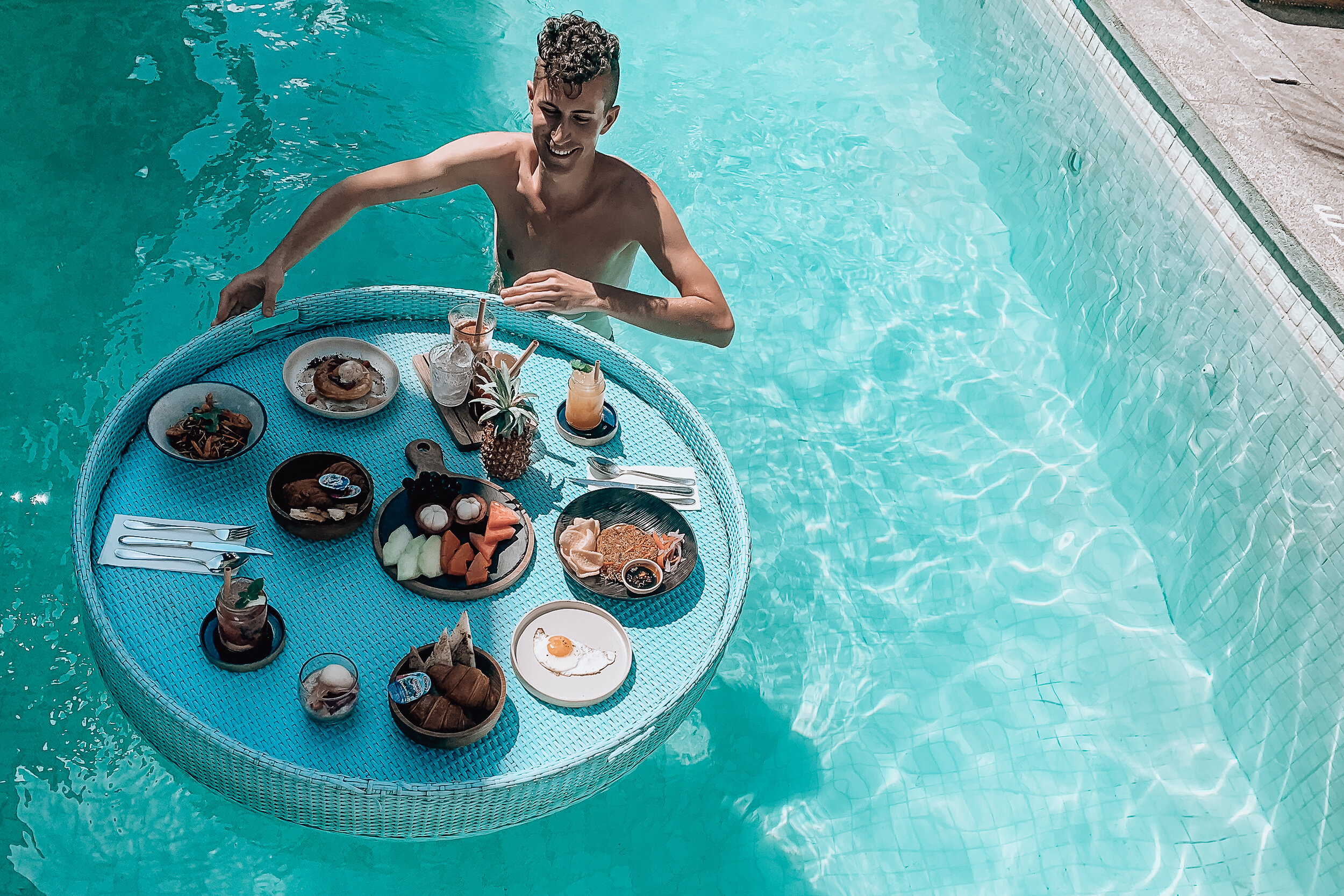
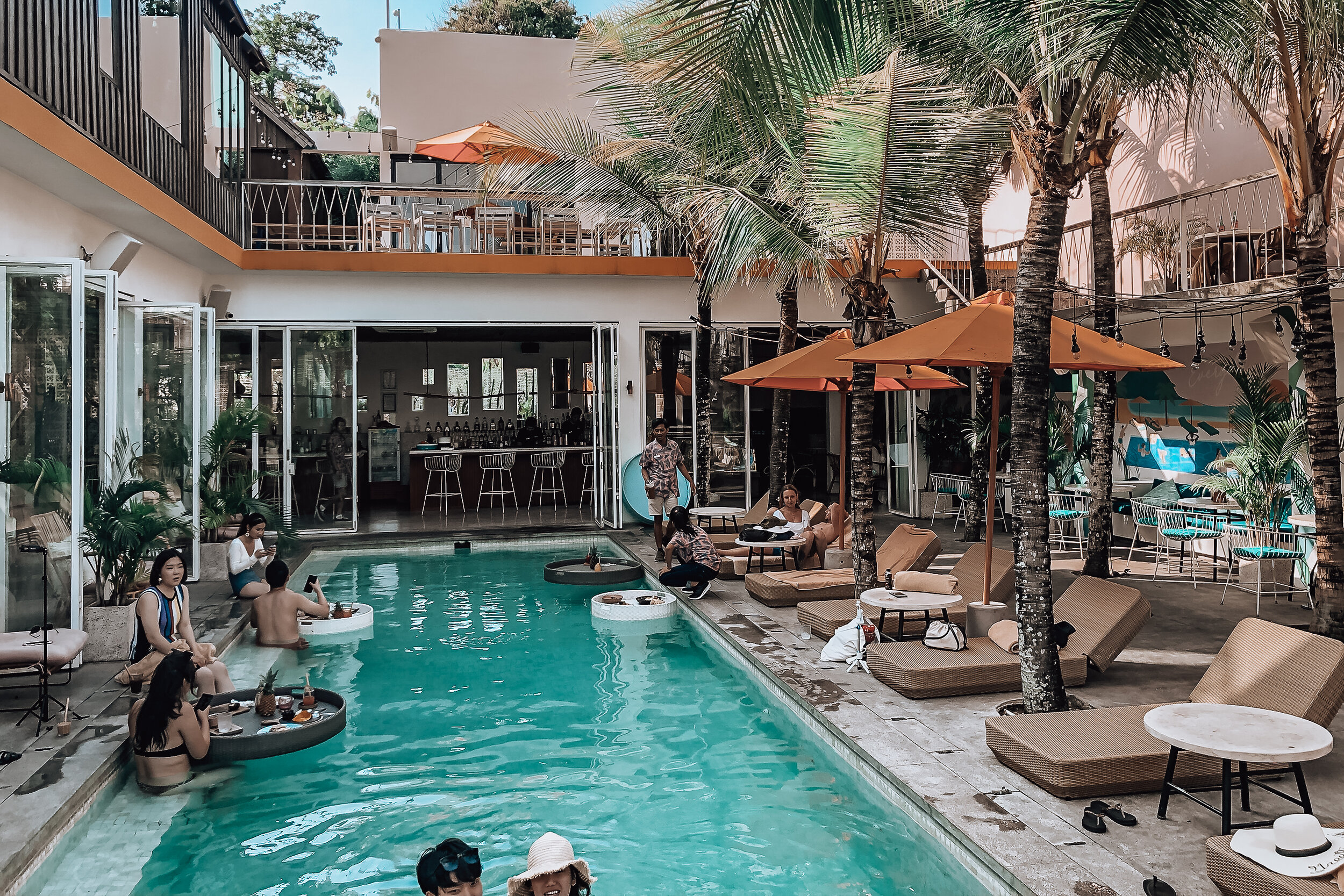

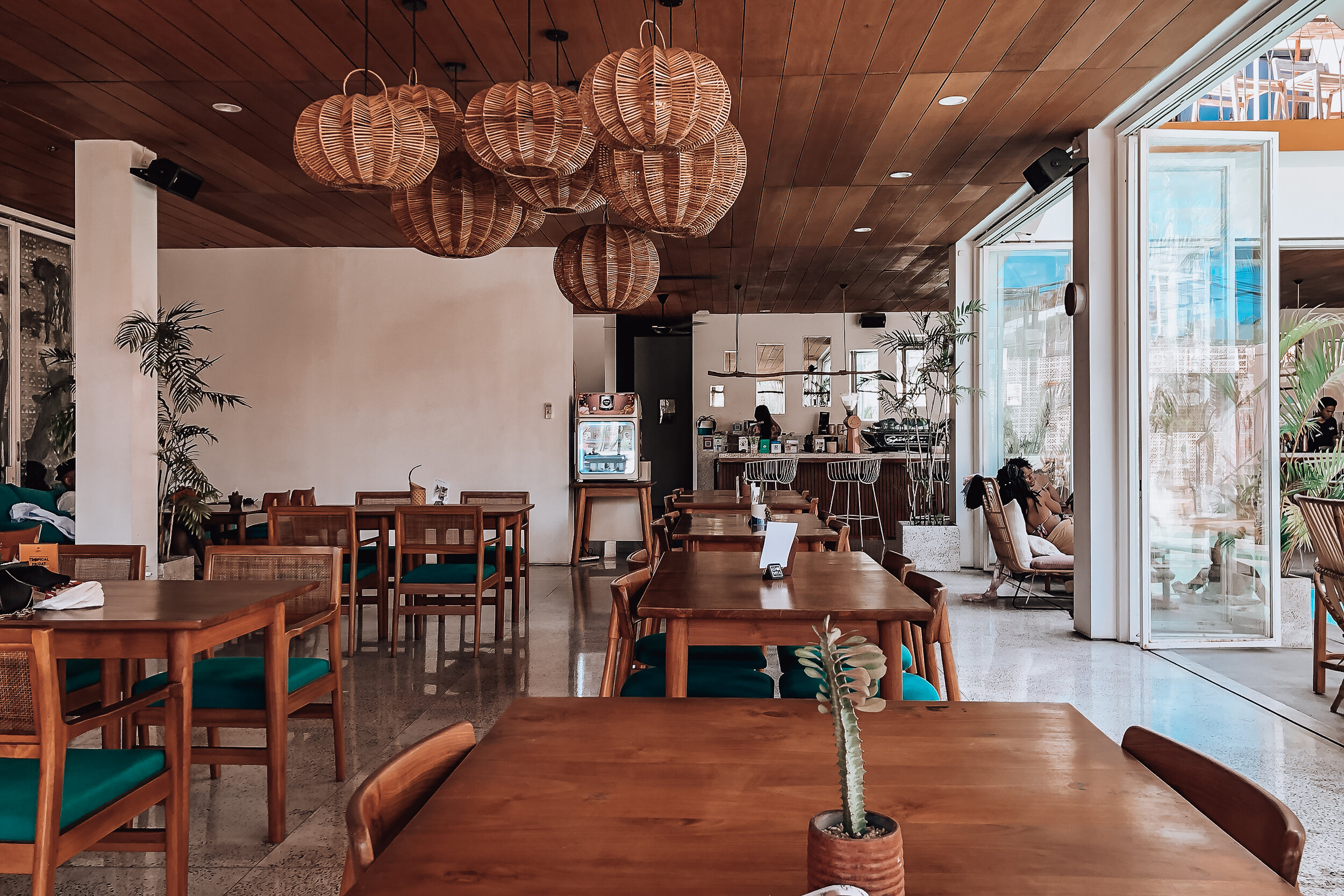
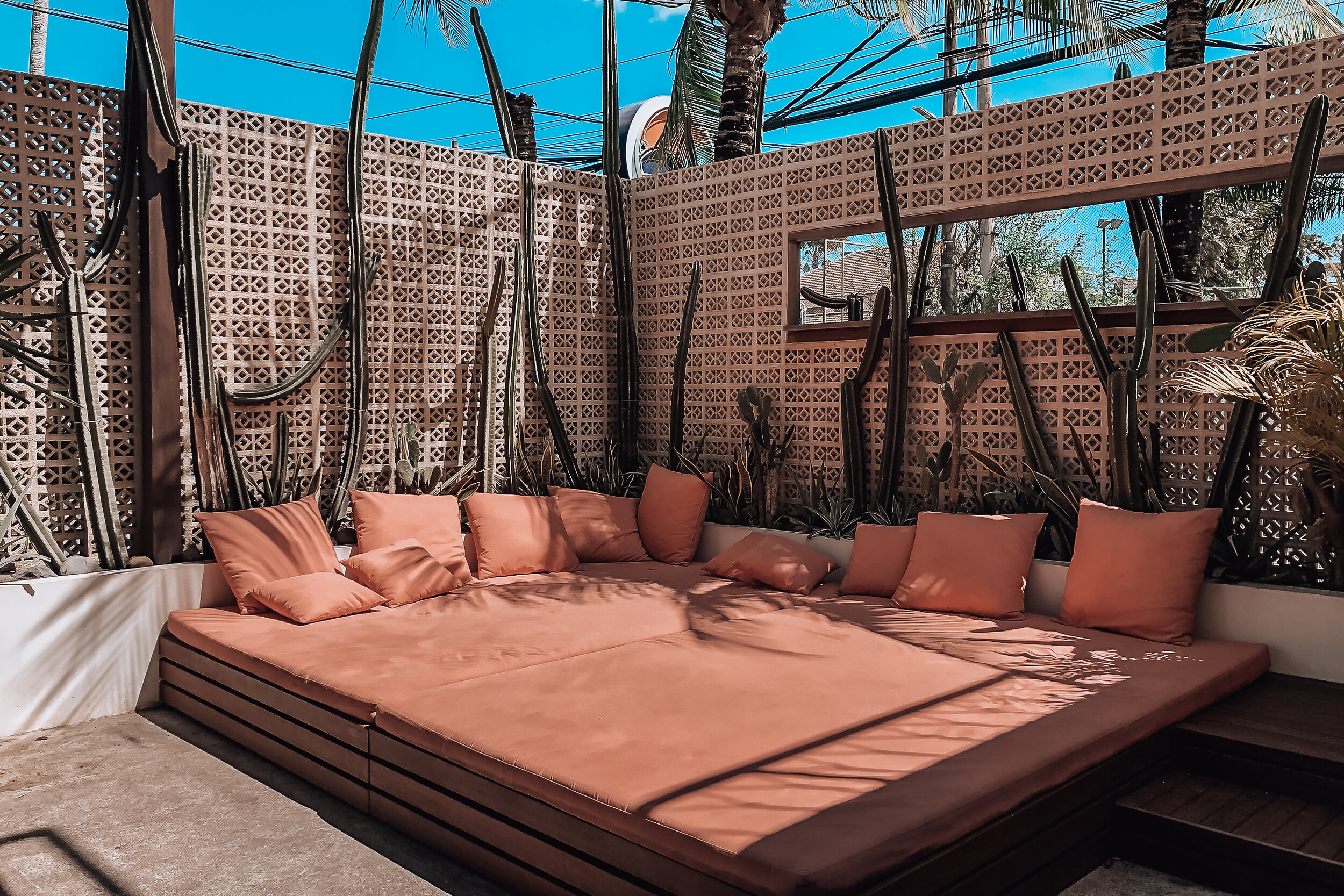
Floating Brunch
Making time for a floating brunch is a must do in Bali. It’s a poolside meal artfully presented in a floating basket. We visited Cabina, a restaurant with a turquoise pool, cacti & palm trees and comfy lounges surrounded by pink painted walls. Spending all afternoon here, we shared a tropical meal complete with fresh fruits & juices, fluffy pancakes and various Balinese bites.
Seminyak & Double Six Beaches
The shoreline walk from Canggu to Seminyak takes about 30 minutes, depending on how many beachside stops you make. The main beach, Seminyak Beach, is a long stretch of mostly white powdery sand with surfing, large beach clubs and resorts. Past Seminyak Beach is Double Six Beach, a popular tourist beach with inexpensive food, drinks, chair, lounge and surf rentals.
Gili Islands
The Gili Islands are a series of three tiny islands off the coast of Lombok. We spent 4 days exploring the Gilis, bicycling through the palm groves, snorkeling in the ocean, watching for sea turtles and relaxing on the beach.
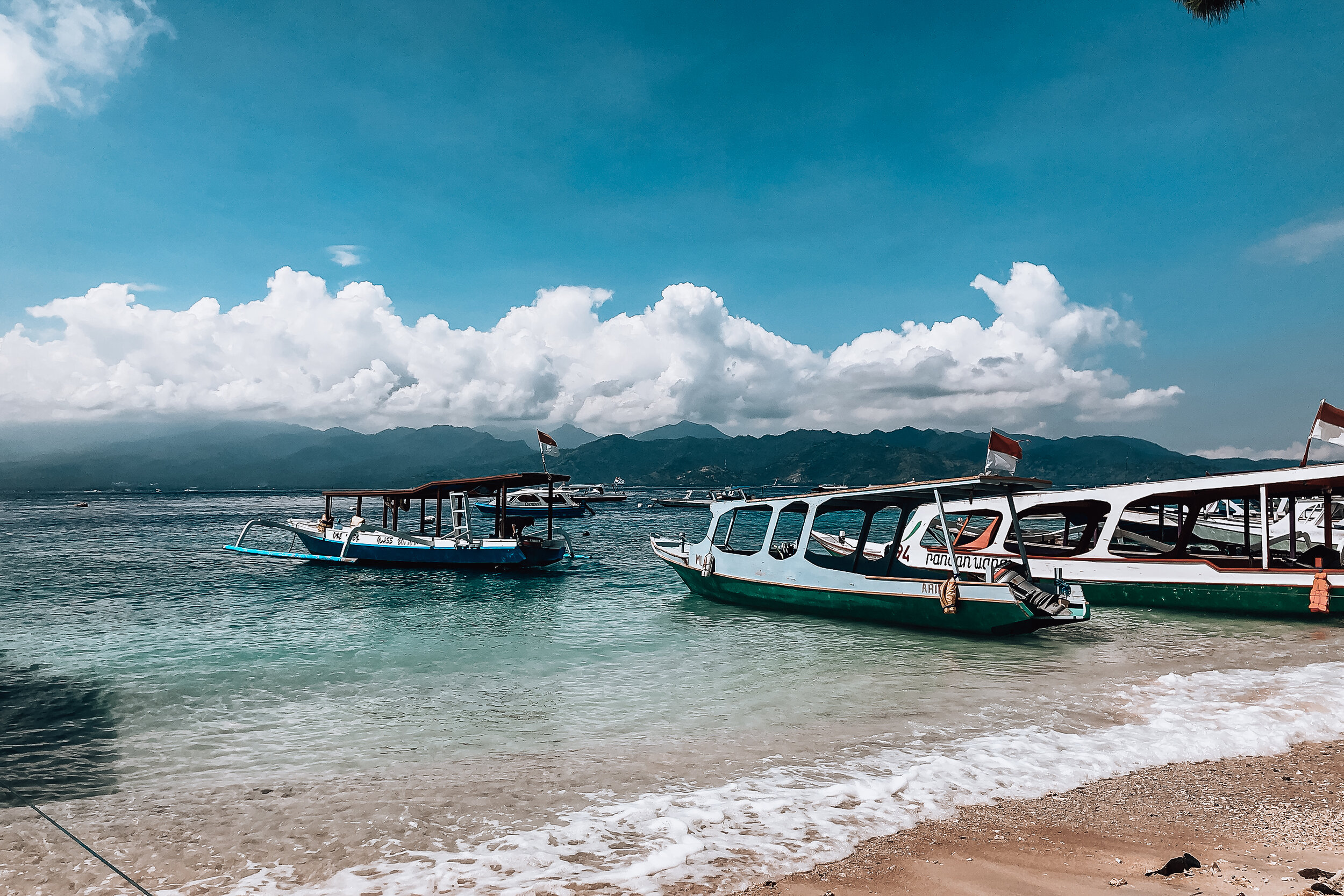
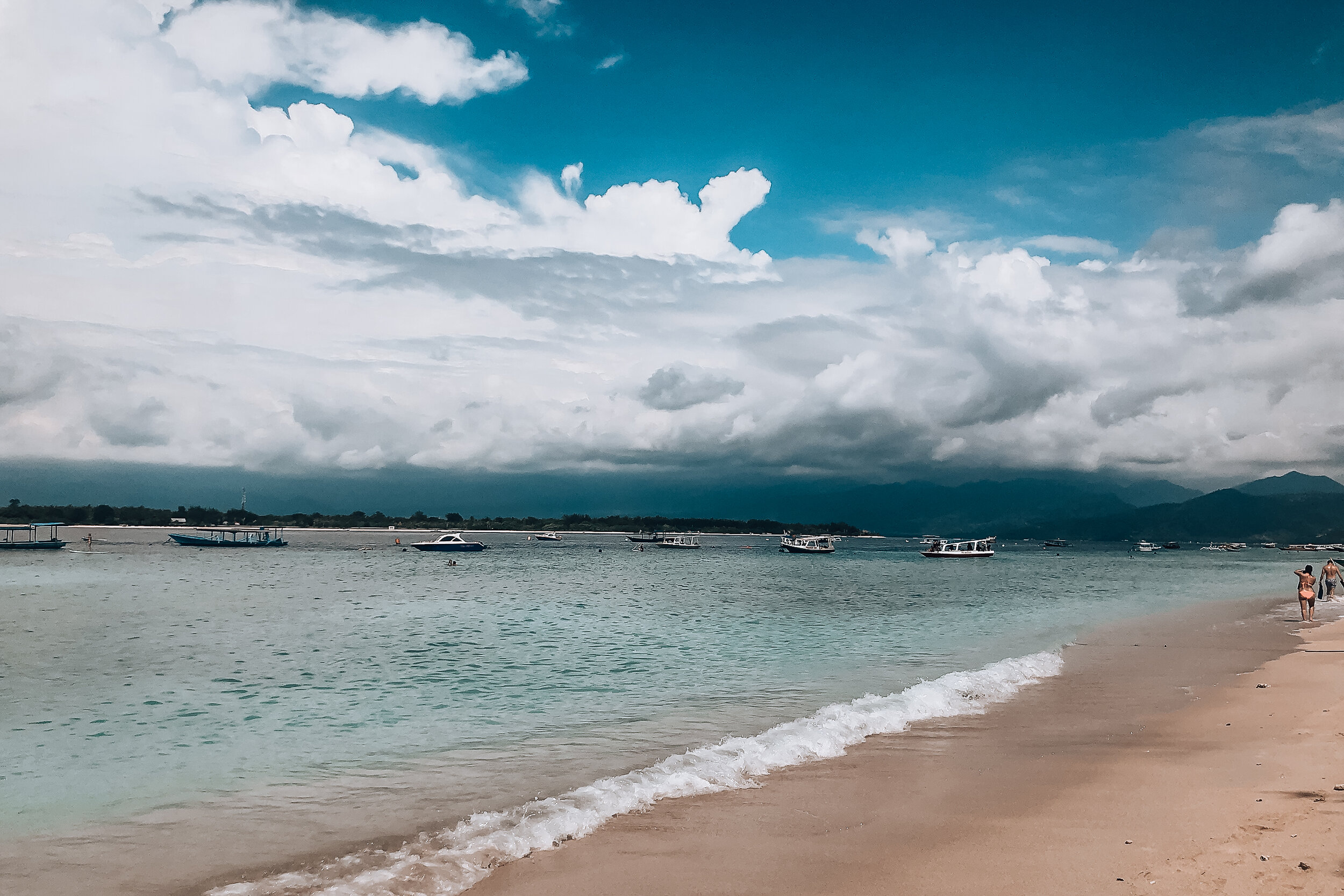
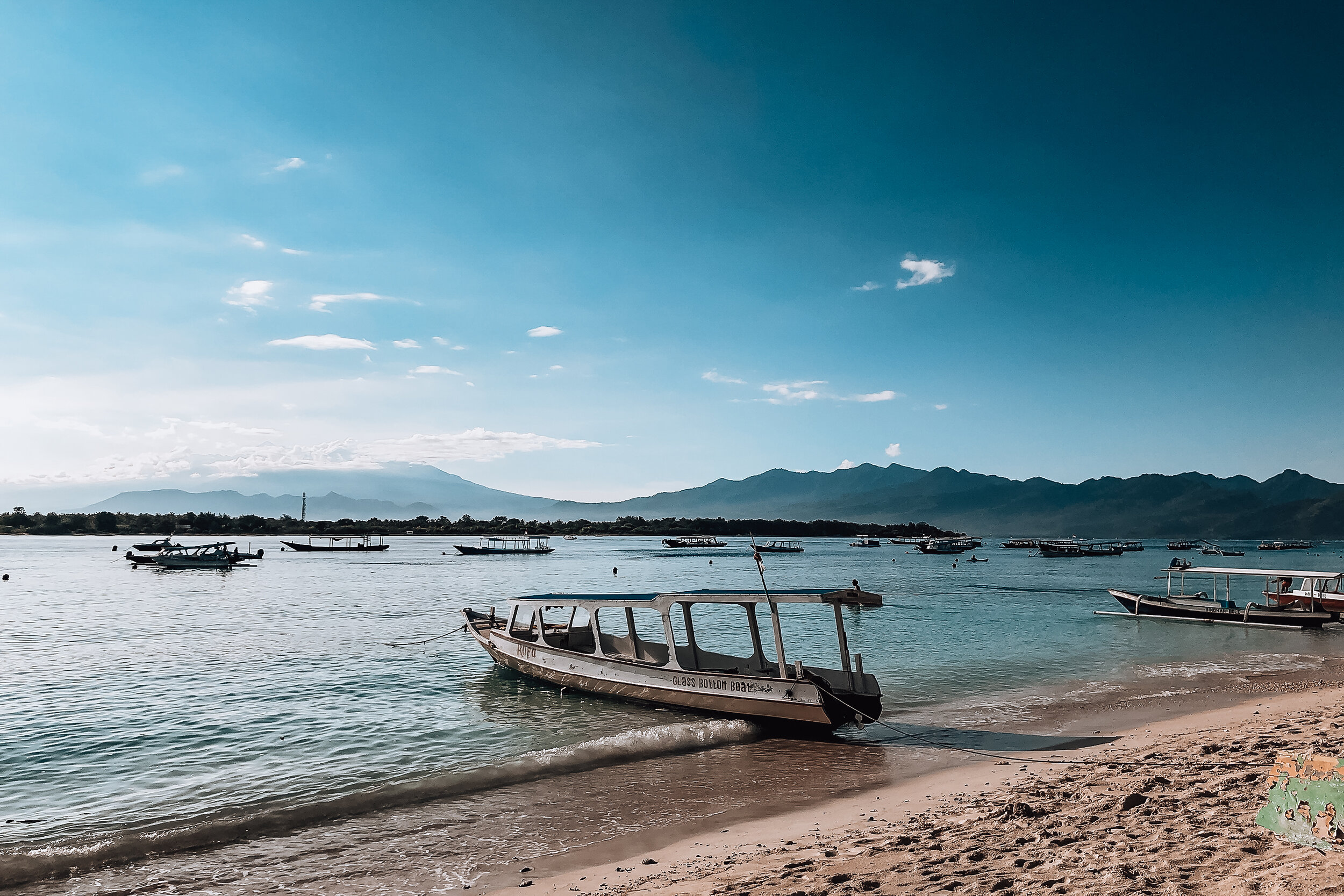
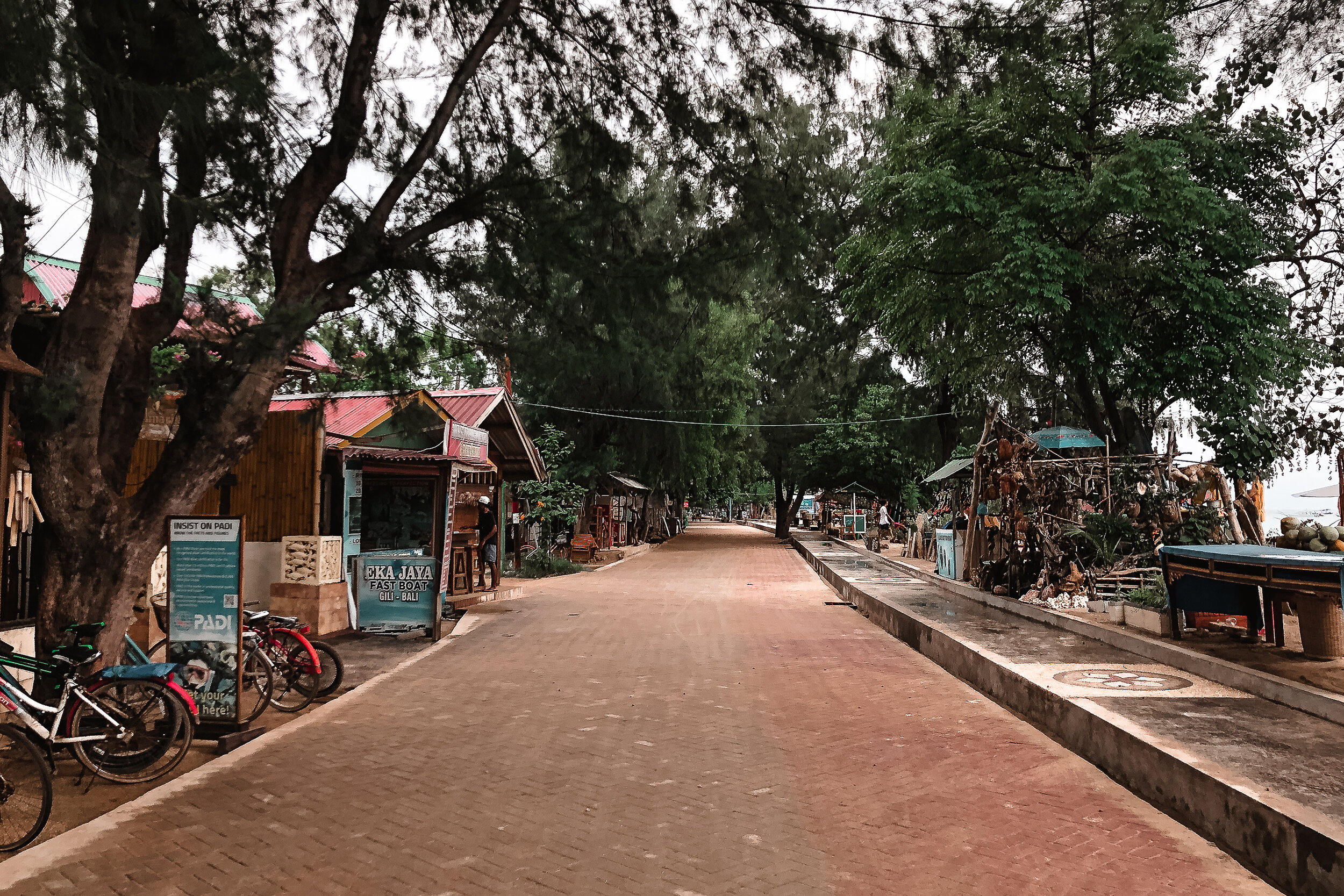
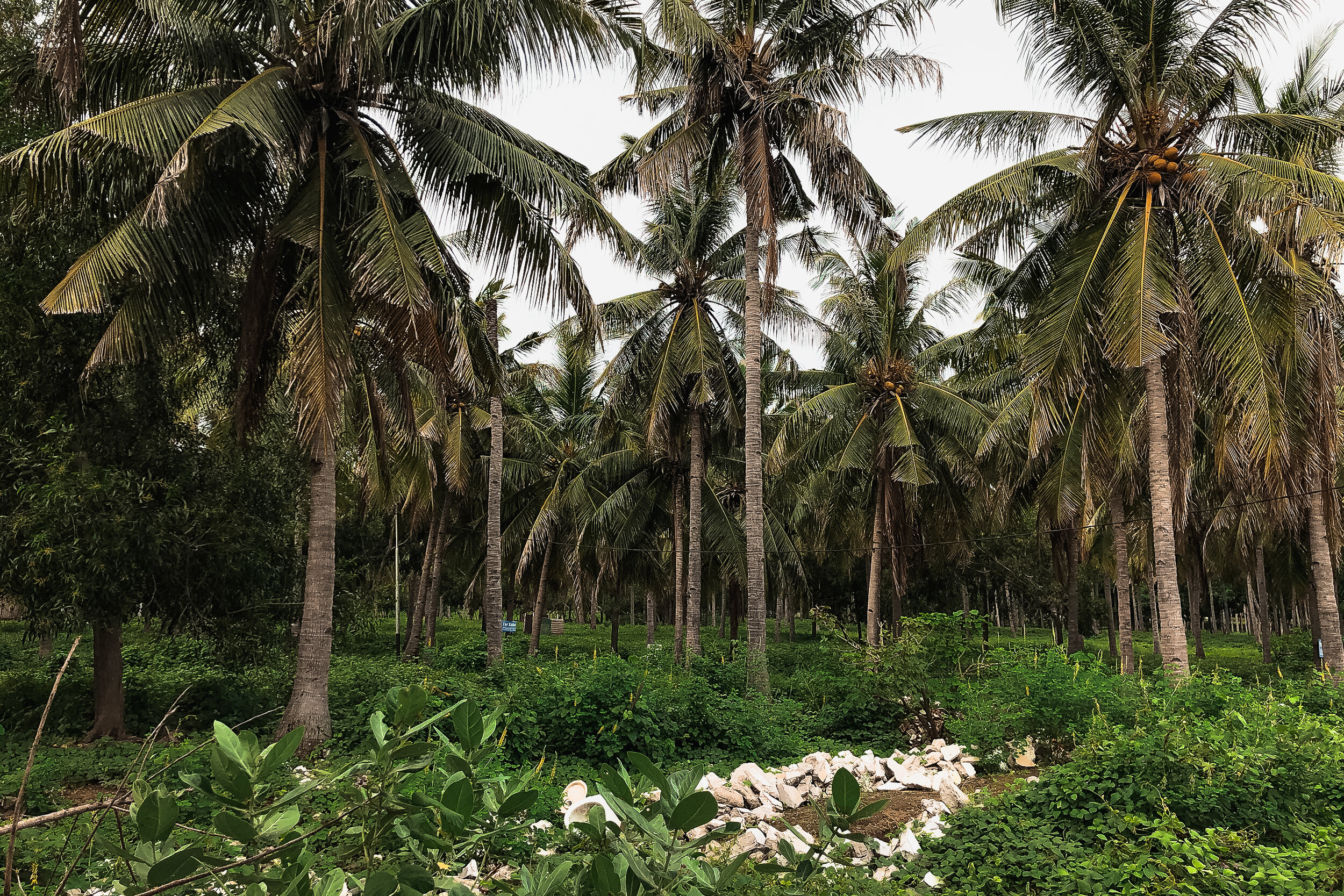

Gili Trawangan. Also known as Gili T, this island is the largest of the three Gilis. It’s the island where we stayed while visiting. It is the most lively and popular place to stay with a large number of restaurants, bars and places to stay around the perimeter of the island. The interior of the island is covered in palm groves and the homes of local families.
Gili Air. Located just across from Lombok, Gili Air has uninterrupted views of Mt. Rinjani. Similar to Gili T but smaller in size, it is known for its dining, nightlife, marine activities and ocean swings.
Gili Meno. Located in-between Gili T and Gil Air, it is the smallest, quietest and most relaxing of the three islands.
Getting Here
Take a speed boat. This is the fastest, safest and most hassle-free way to get between Bali and the Gili Islands. There are a number of departure points along the East side of Bali. Most speed boat companies can arrange transportation to bring you to the departure point from any location in Bali. We booked roundtrip tickets through Blue Water Express. Including luggage, transportation from Ubud and to our later accommodation in Bali, we paid 1.1m Rp each ($78 USD). Depending on your departure location, the speed boats can take anywhere from 2-4 hours.
Getting Around
Rent a Bike. The Gilis are very small. Though they’re easily walkable, the best way to get around is on a bicycle. You can ride around the perimeter of the largest island in less than an hour or cross its center in 15 minutes. Most accommodations rent bikes for around 50K rp per day ($3.50 USD)
Island Hopping. Public boats ferry between each island’s main harbors at infrequent times between 9am and 4pm. Each trip takes about 30min and costs 25-50K Rp ($1.75 - $3.50 USD) Fast boats take about 15min and cost 85K - 100K Rp ($6 - $7 USD)
Gili T Beaches
The island is essentially one giant beach paradise! Based on location, here’s our breakdown to exploring the different corners of the island.
East & South East. The sandiest beaches and shallowest waters for swimming and sunbathing. Closest to the restaurants and bars of the main street.
North East. Also known as Turtle Point, this is the best place to spot sea turtles. The shallow warm waters are home to sea grass where sea turtles feed. To spot them, rent a standup paddle or kayak and quietly wait in the water. The best time to go is before the snorkel tours show up at 10am. Eventually a sea turtle will poke its head above the water for air or even swim within feet of you.
North. Most beaches here are private for members of the resorts and hotels.
North West. There are several restaurants with smaller crowds than the on the Eastside of the island.
West. Nice restaurants to watch the sunsets and see Bali’s silhouette. The water is wavier due to the currents in the strait between Bali and Lombok.
Southwest. The best spot to watch the sunset over the Indian Ocean. A lot of diving tours frequent the waters on this side of the island to spot manta rays and sharks.
South. Mostly dead coral lining the beaches.
Coral Reefs
We had read about the stunning coral reefs home to all manner of sea-life. Unfortunately, many of the coral reefs have suffered extreme bleaching due to rising sea temperatures in the shallow waters. During our snorkel tour, we only saw the occasional sign of life among the black and grey decaying coral reefs covering the ocean floor. This was evident on shore, especially along the west half of Gili T. Vast stretches of the beaches were covered in piles of dead coral that had washed up.
To protect yourself and the living coral, bring water shoes and coral safe sunblock.
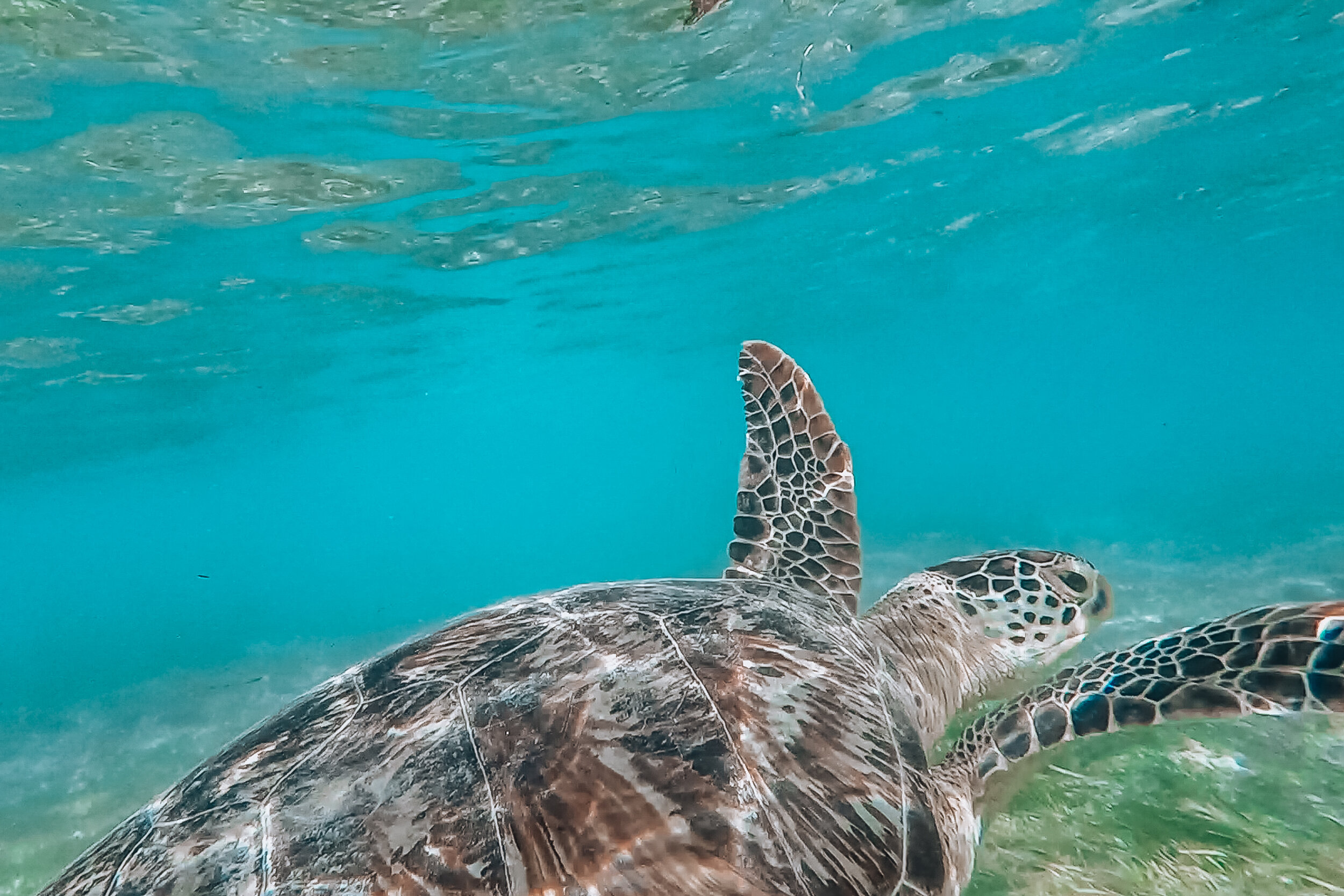
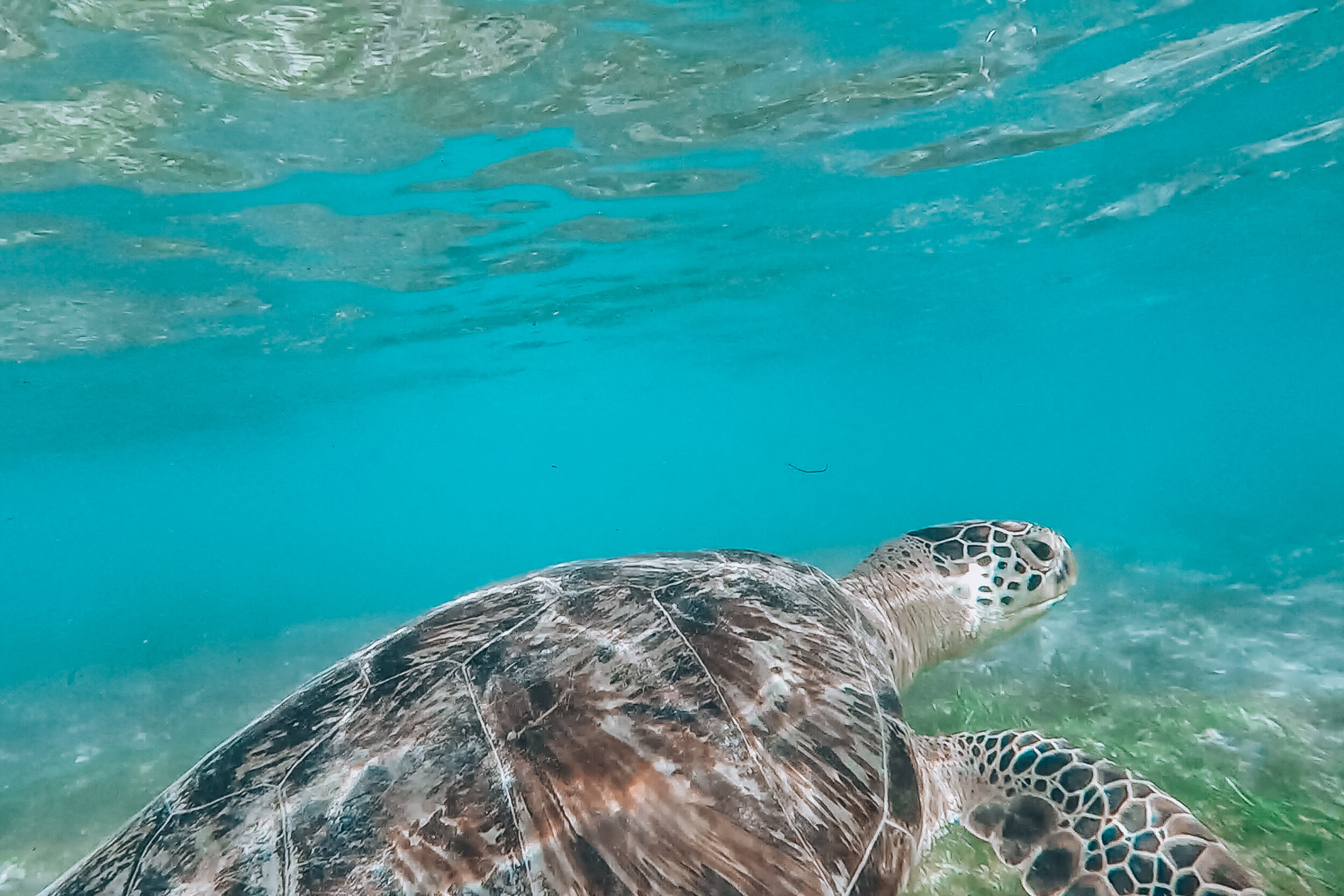
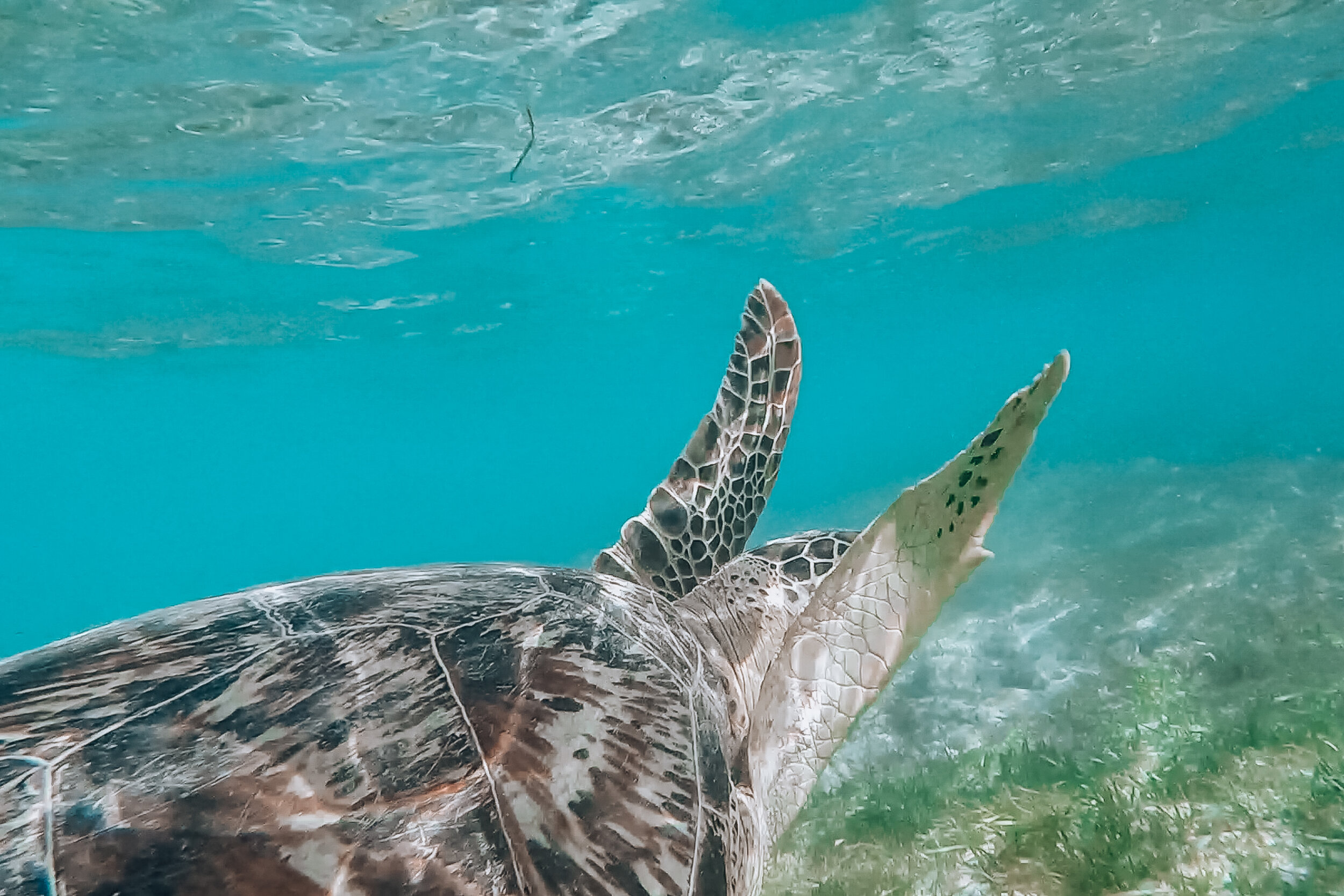


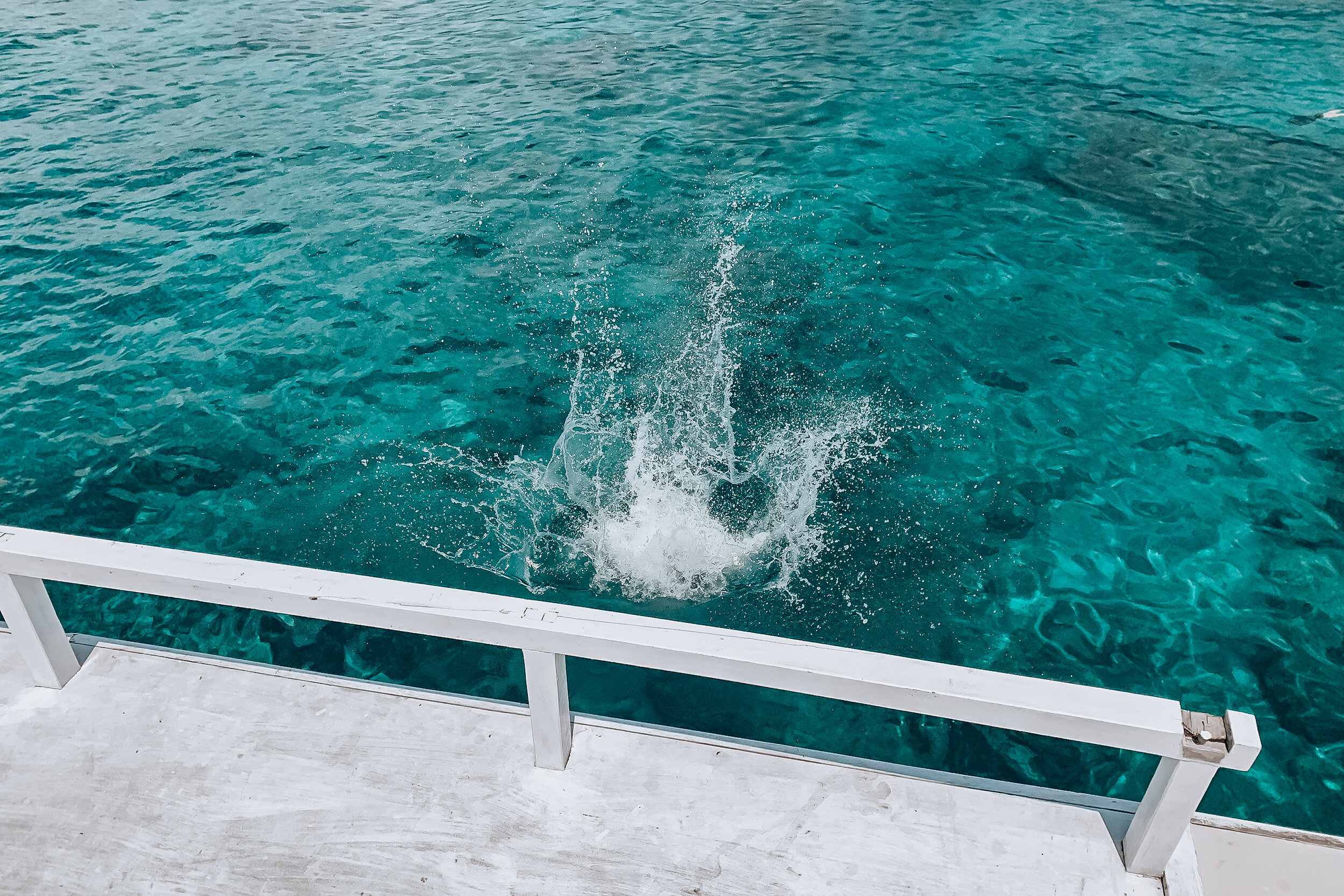
Things to Do
Go on a snorkeling tour! Many restaurants, dive school and guides along the main-street on Gili T will offer inexpensive snorkel tours around the Gili Islands. We only paid 50K Rp for a 4 hour snorkel tour ($3.50 USD)
On our tour, we snorkeled around the coast go Gili Meno where we saw the bleached reefs and an artificial reef called The Nest. The Nest is an underwater sculpture of human figures standing in a circle. After snorkeling here, we moved to an area on the other side of Gili Air with many species of fish. It was incredible snorkeling several feet below the surface with the fish swimming in all directions around us.
After snorkeling, we jumped and dove off the roof of the tour boat before stopping in Gili Air for lunch on the beach. It was a great experience and opportunity to meet travelers from around the world. We met some Brits on “holiday” and a group of siblings from Spain, one of which visited us later that winter in NYC.
Acrylic Kayaking. Rent an acrylic kayak and paddle around Turtle Point. Pro tip, select the kayak with minimal scratches on the bottom. The more scratches, the less you’ll actually be able to see though it.
Stand Up Paddle. Rent a stand up paddle and explore the strait between Gili T and Gili M. The water is usually calm making it easy to balance. This was another fun way to spot sea turtles.
Watch the Sunset. There are a number of beach clubs, restaurants and hotels with lounges, ocean swings and patios on the west and southwest sides of the island to watch the sunset.
Get a Bamboo Tattoo. A bamboo tattoo is simply a hand poked tattoo. There are a number of tattoo studios offering traditional bamboo tattoos across Gili T. We visited NoA The Master of the Bamboo Tattoo. Devin got a geometric elephant tattooed on his inner arm and I got a wave on my ankle. The process was sanitary and clean. We watched the artist clean all of his tools and present us with the an unopened package containing the needles he used for our tattoos. It’s worth it for the authentic experience!
Take a Cooking Class. One of the best meals we had on Gili T was the one we cooked ourselves at the Sweet & Spicy Gili Cooking School on the beach in front of Egoiste Restaurant. During the 2 hour cooking class we cooked multiple Indonesian staple dishes including:
Fried tempe and tofu in homemade peanut sauce
Mie goreng (spicy fried noodles and veggies),
Pepes ikan (fish cooked in a banana leaf)
Klepon (green colored rice balls filled with palm sugar)
Food & Drink
In addition to the traditional Indonesian dishes above, here are a couple of “foodie” things to know:
Look out for street carts selling grilled corn and satay skewers cooked over coconut husks.
Most restaurants are along the perimeter of the island.
The East Side has many local style restaurants and bars
The West Side has many beach club style restaurants and bars
If you’re visiting just before or during the celebration of Ramadan, there will not be any alcohol sales on the island.
Bukit Peninsula
The Bukit Peninsula is the southern most point in Bali. It’s known for its swimmable and surfable cliffside beaches, beach clubs and grilled seafood. We stayed here during our last few nights in Bali.
Getting Around
Plan for extra time. The peninsula is very hilly making it difficult to get around. There are only two main roads with smaller roads branching off causing frequent congestion.
Hire a taxi driver. Most drivers will offer to exclusively bring you around the peninsula. The advantage to this is that they’ll wait for you after dropping you off, be on call to pick you up and make great recommendations for things to do, sights to see and places to eat. Pro-tip: Download WhatsApp to keep in touch, negotiate pricing and never pay all at once. Daily drivers usually cost $250K Rp ($18 USD)
Rent a Scooter. Like throughout the rest of Bali, you can get around on a scooter. The only difference in the peninsula is that most places charge a 10-15K Rp parking fee (about $1 USD)
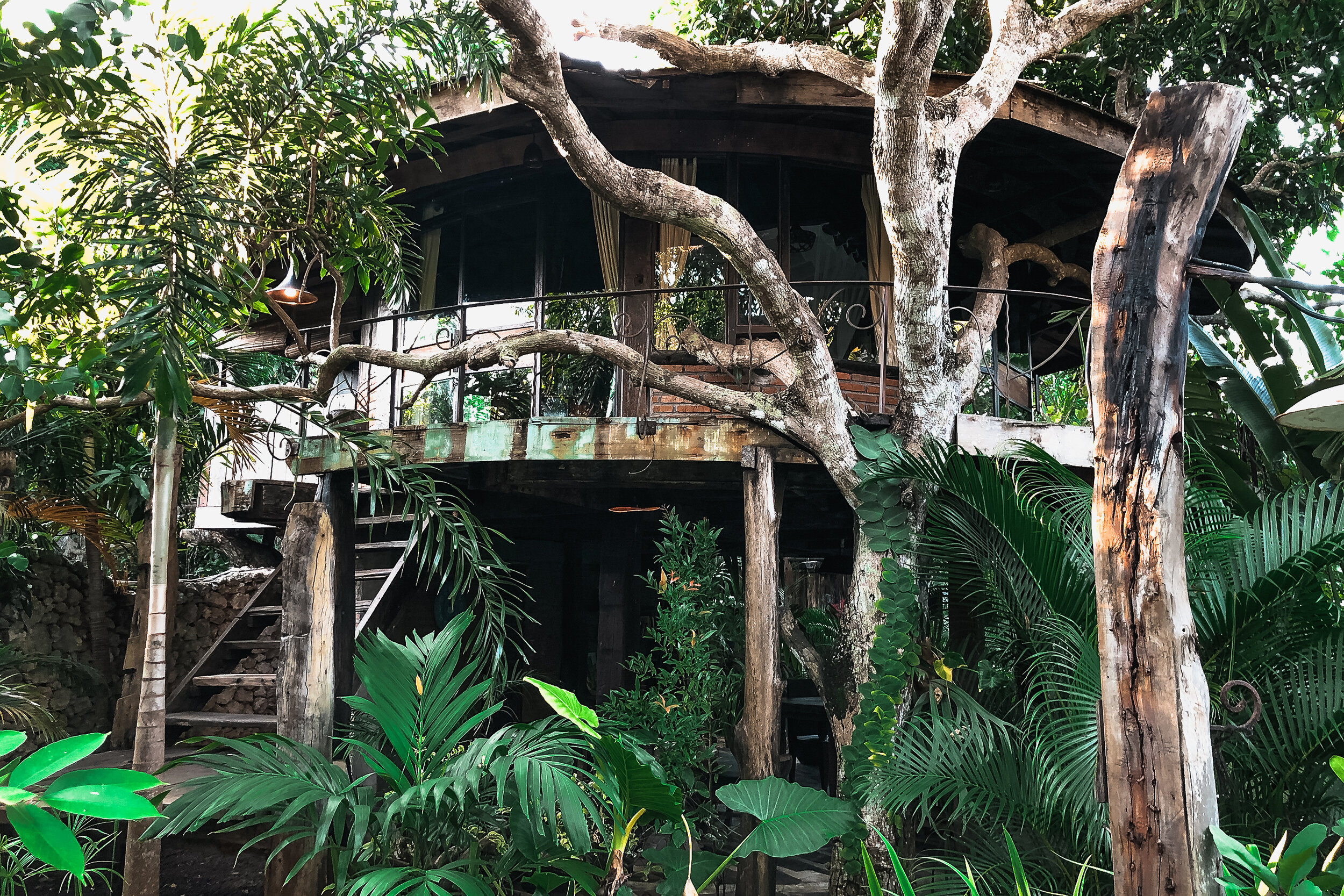
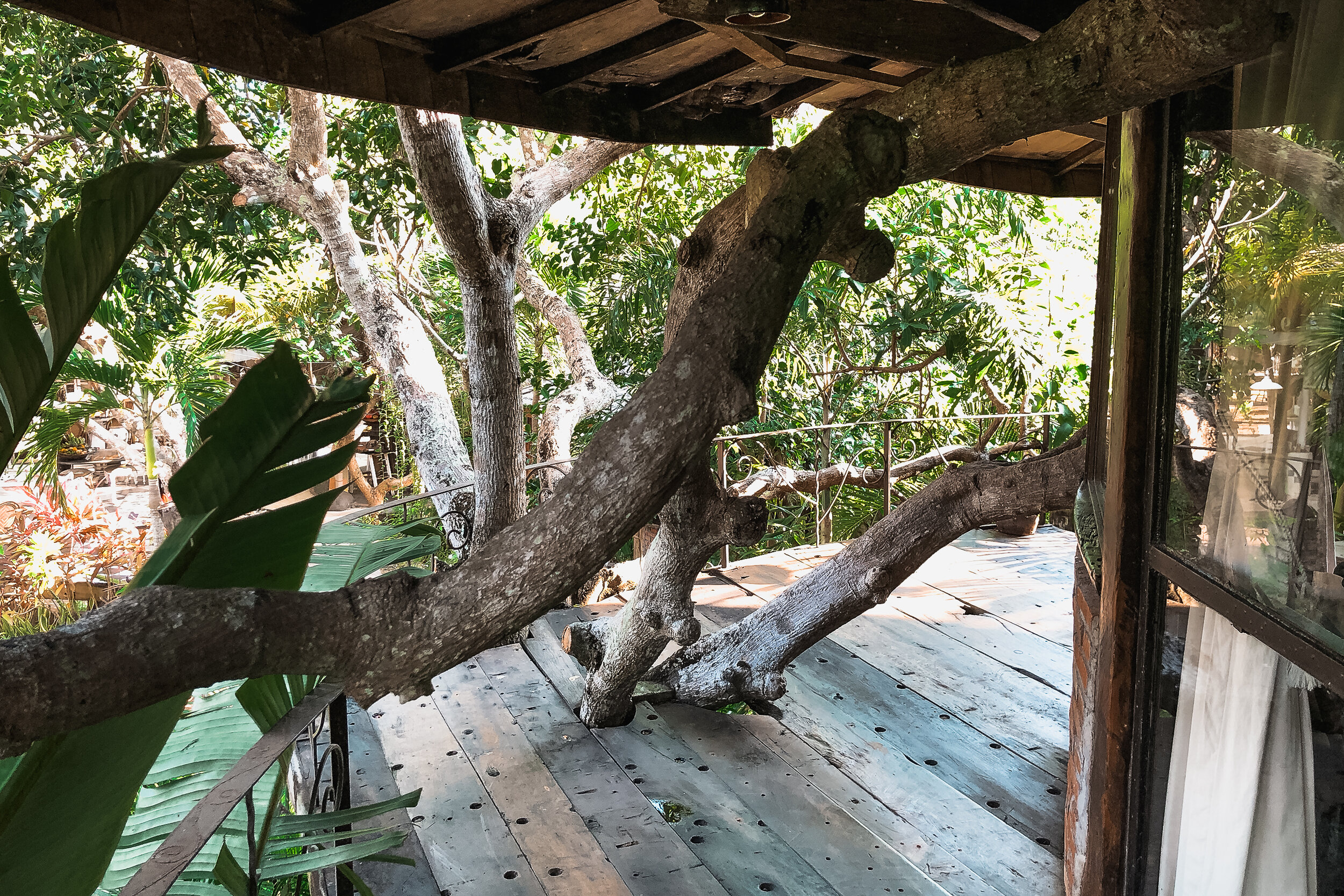

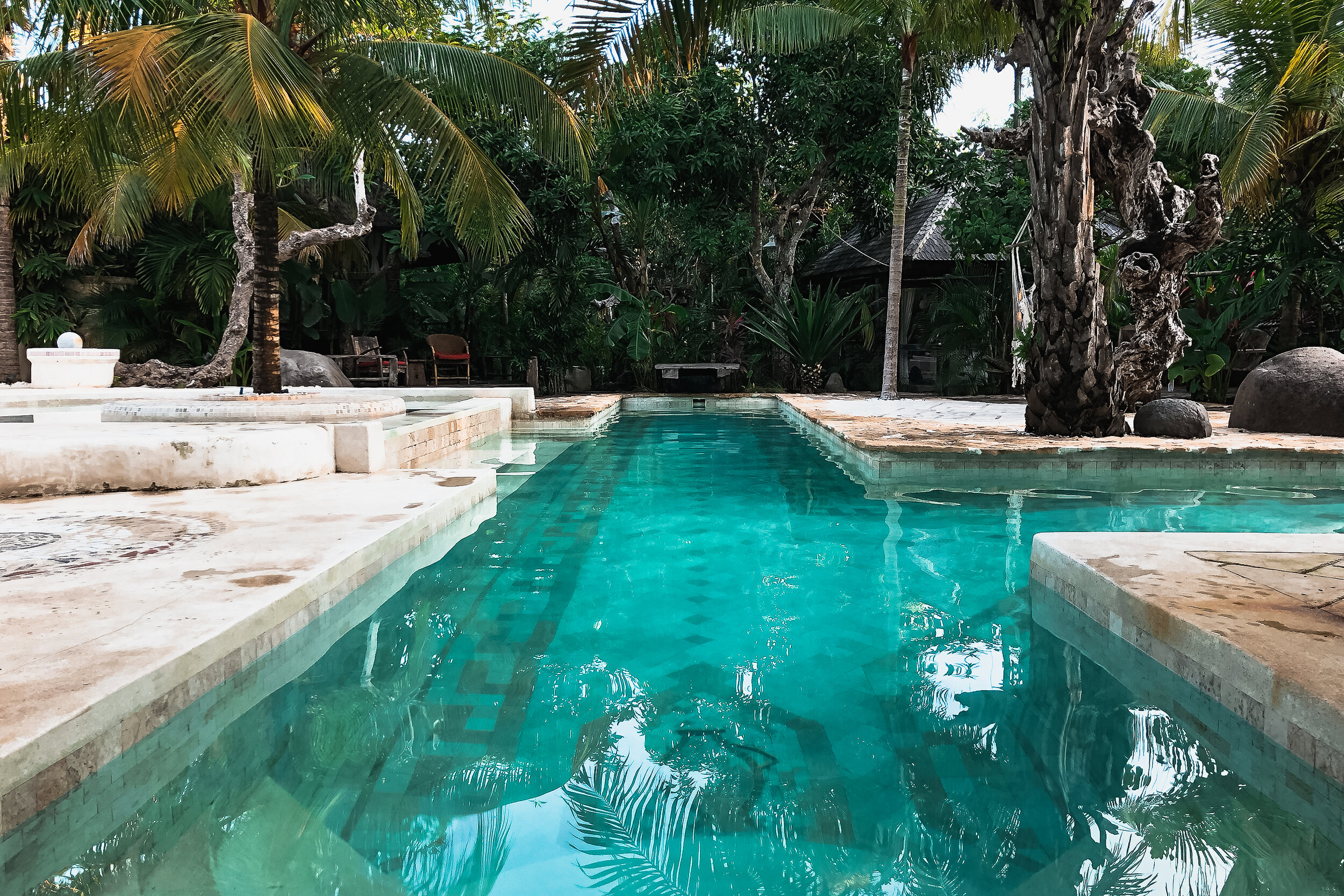
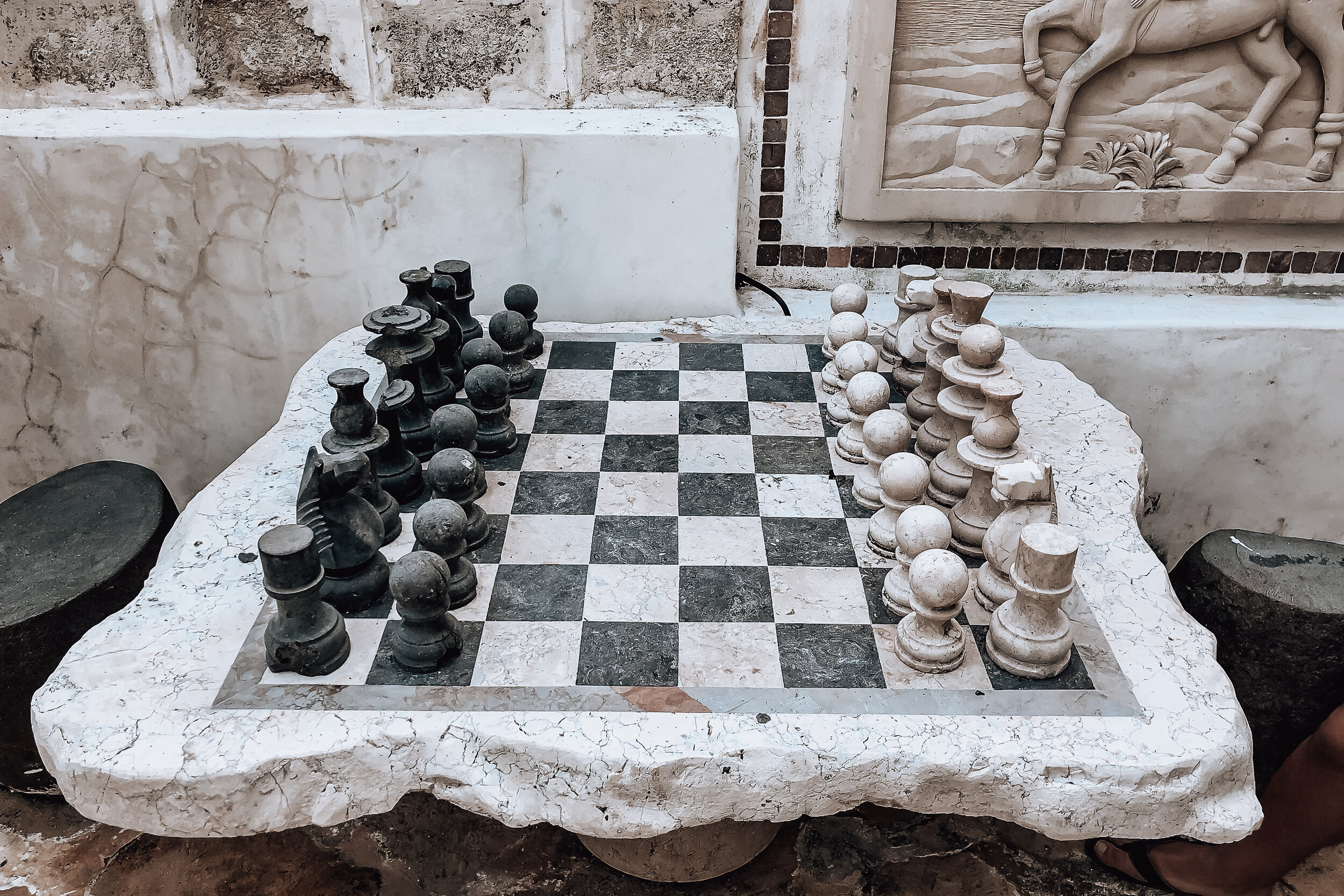
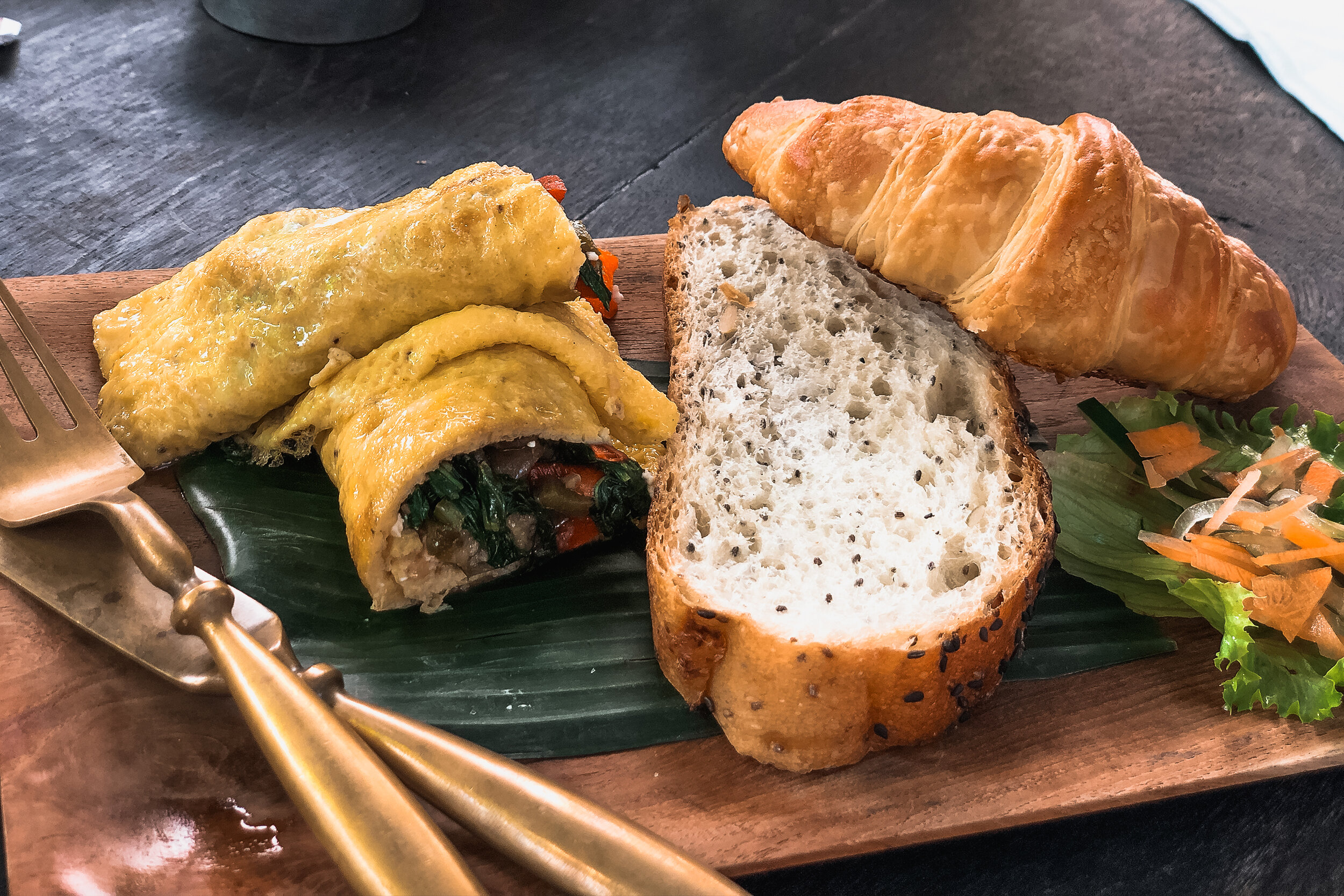
Where to Stay
We stayed in a jungle tree house at an estate called The Alchemist, a relaxing and adventurous end to our stay in Bali. The property had a restaurant and bakery serving a mix of traditional Balinese and French cuisine which made for delicious breakfasts with tropical fruits, fresh croissants and poached eggs. The back of the property had a stunning lap pool, large stone chess set and a few cottages for other guests and the owners.
Things to Do
Have Bali High Tea. Visit the Orchid Tea Lounge late one morning for Bali High Tea. The tea room is a modern greenhouse decorated with hundreds of blooming orchids. The tea service was especially cute with all the cakes and treats either wrapped in or served on banana leafs.

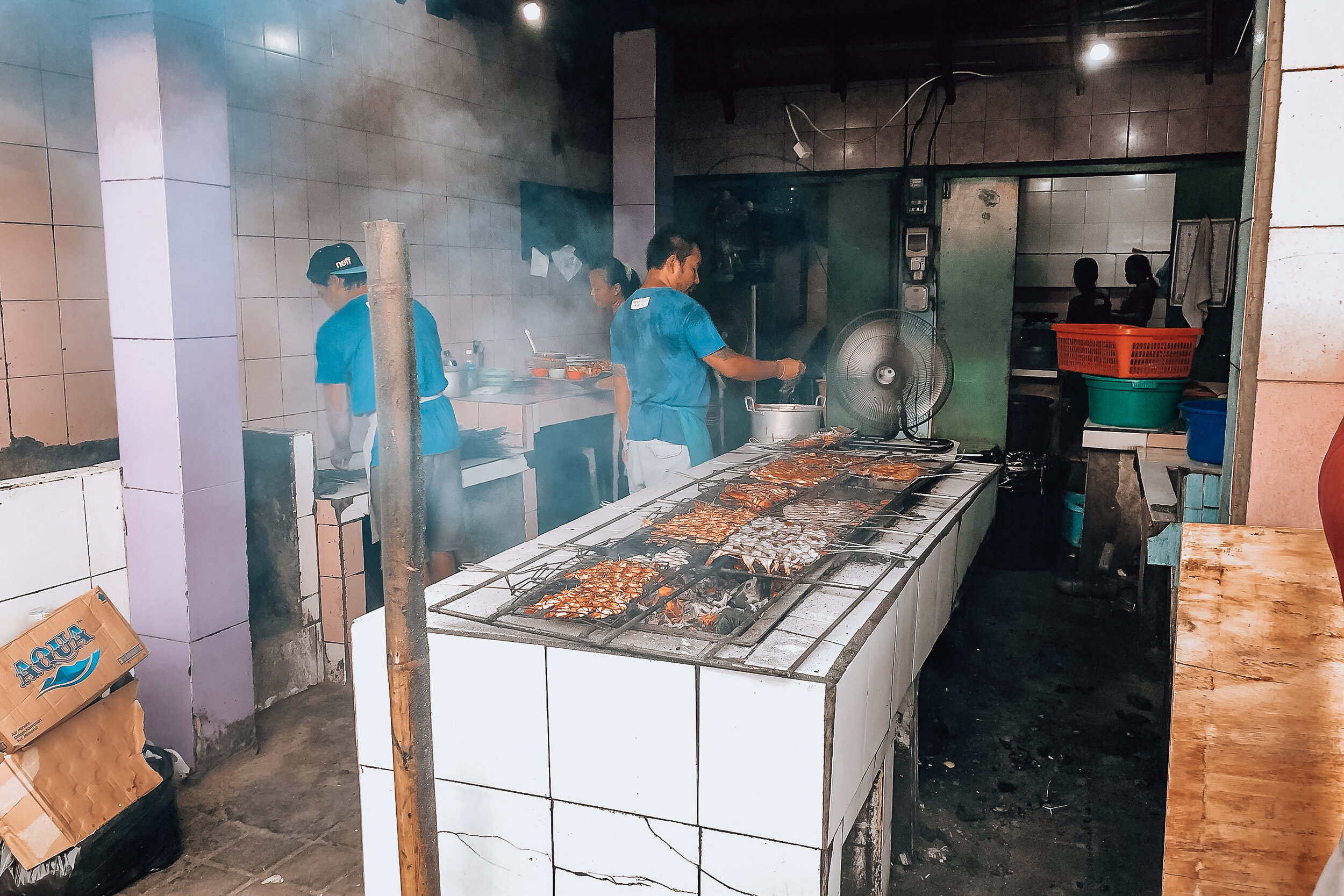
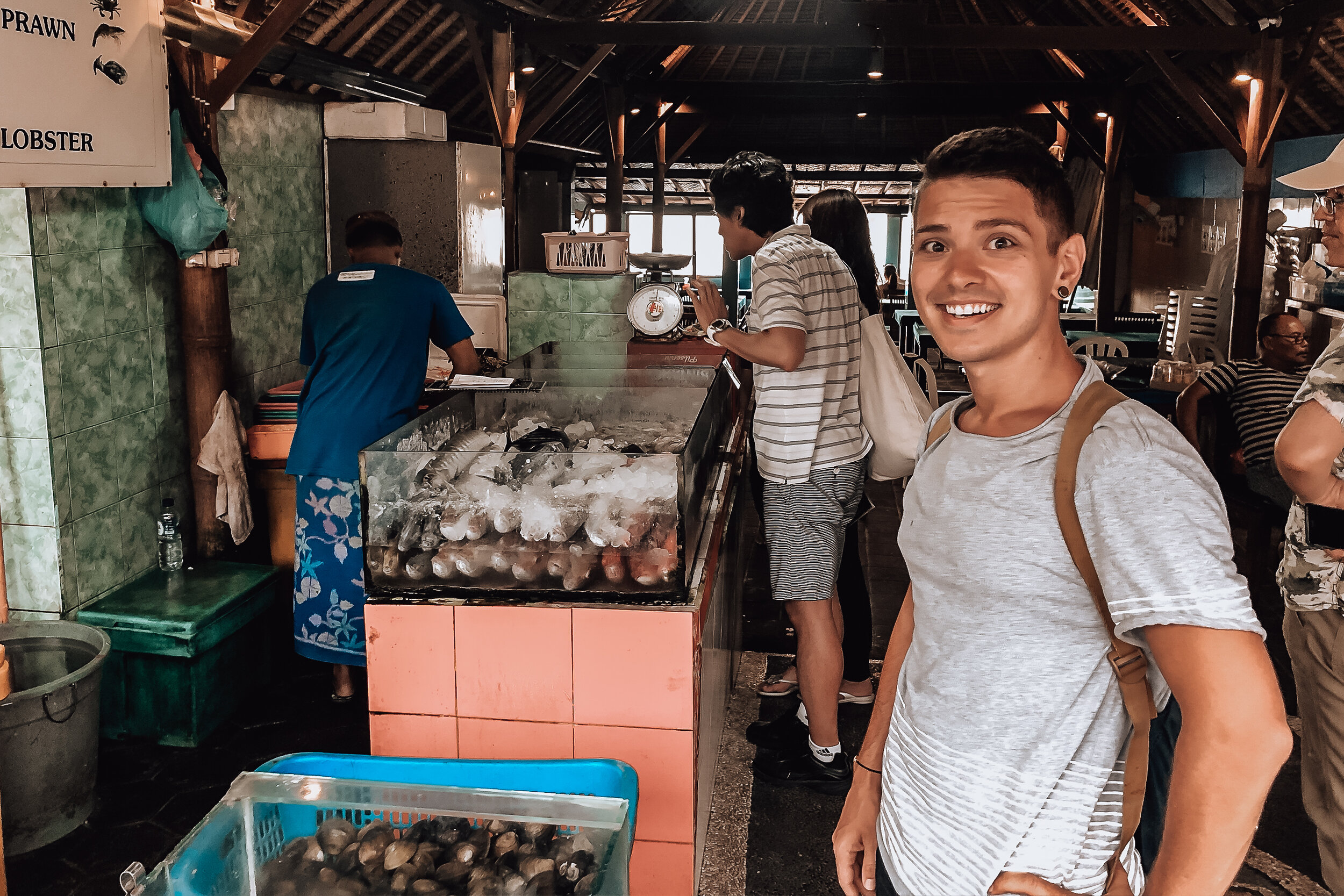
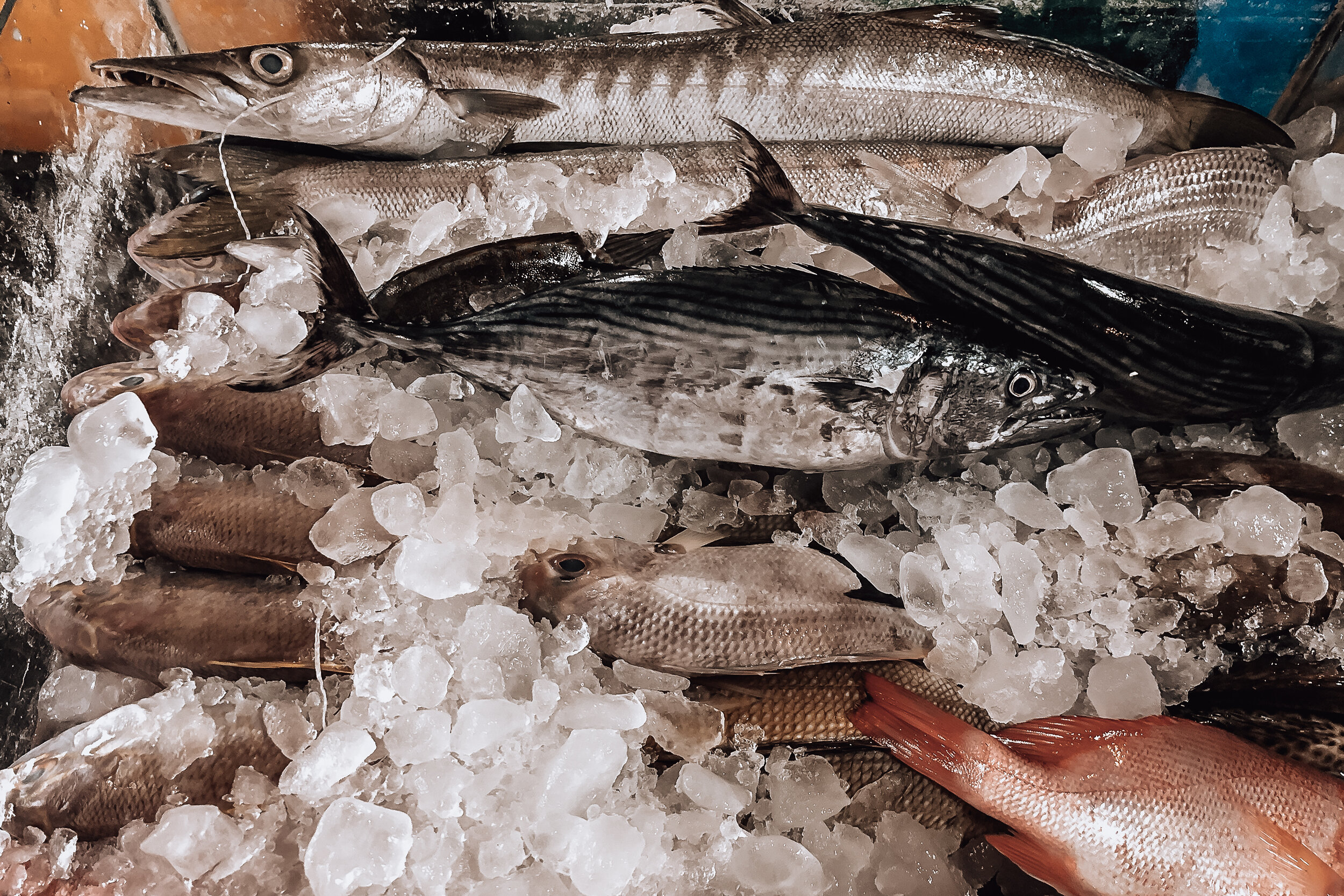
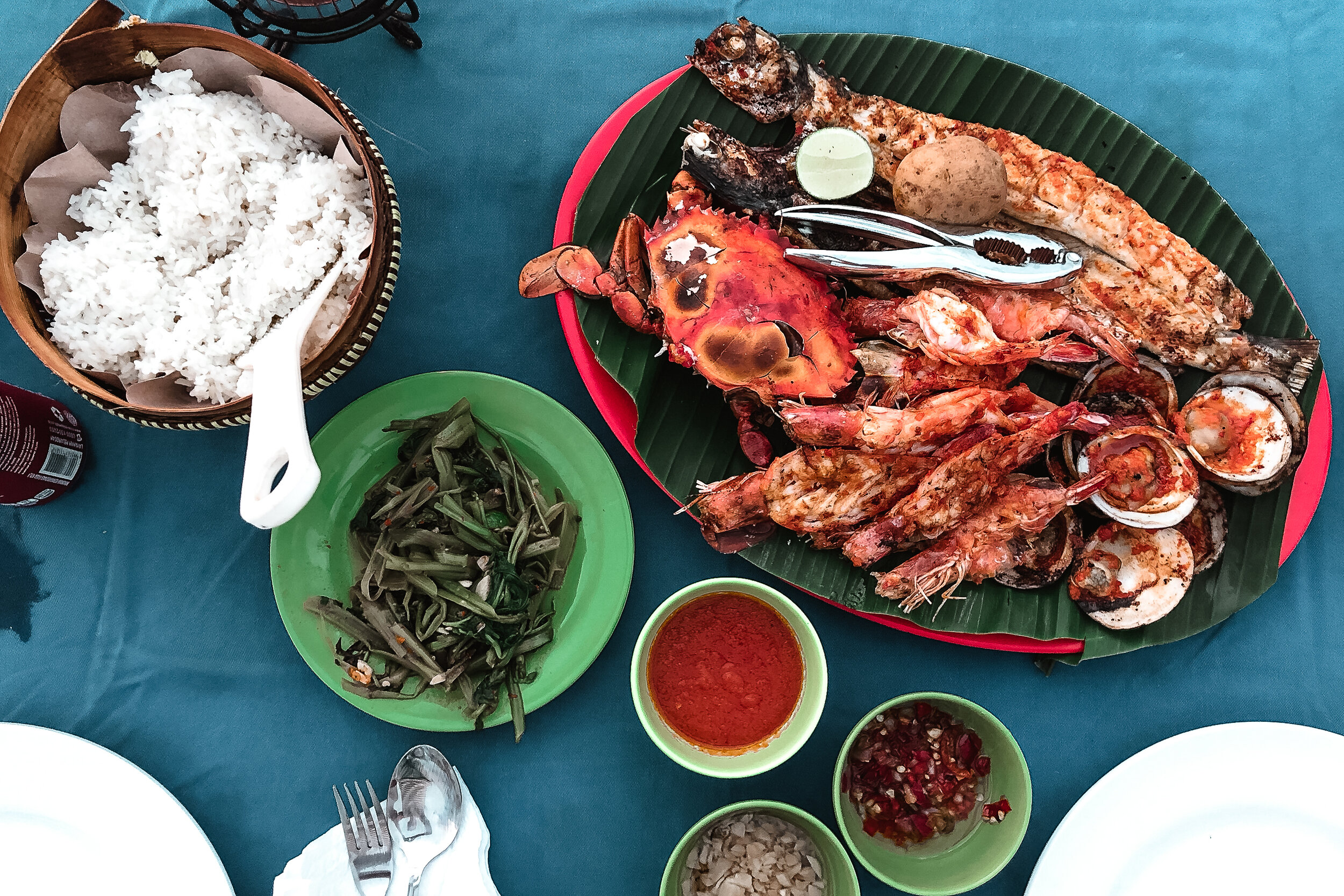
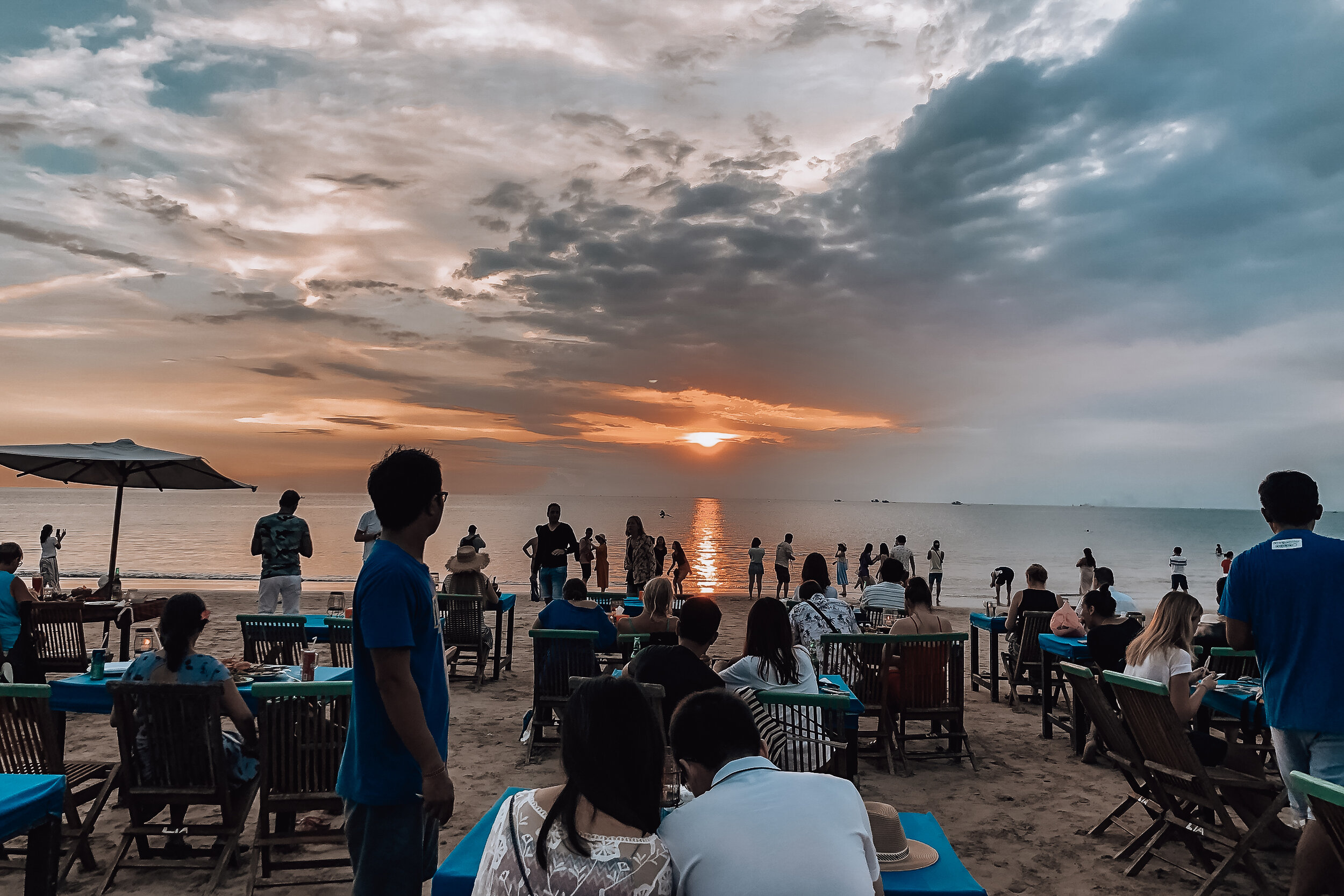
Eat Jimbaran Seafood. Jimbaran Beach is home to a finishing village lined with restaurants and sheds grilling all kinds of freshly caught and live seafood. The seafood is cooked over large grills burning coconut husks and fanned by the chefs. The selection is vast and ranges between vendors. We shared a platter of whole crab, prawn, barracuda and oysters plated on a banana leaf.
The best options are towards the south end. The seafood is cheaper, you can dine directly on the beach and the vibes are much better. We ate here during our last night in Bali, watching the sunset one last time over the Indian Ocean while being serenaded by an international mariachi band that could sing songs in your language based on your nationality. Avoid the higher-end restaurants towards the north, they’re tourist traps.
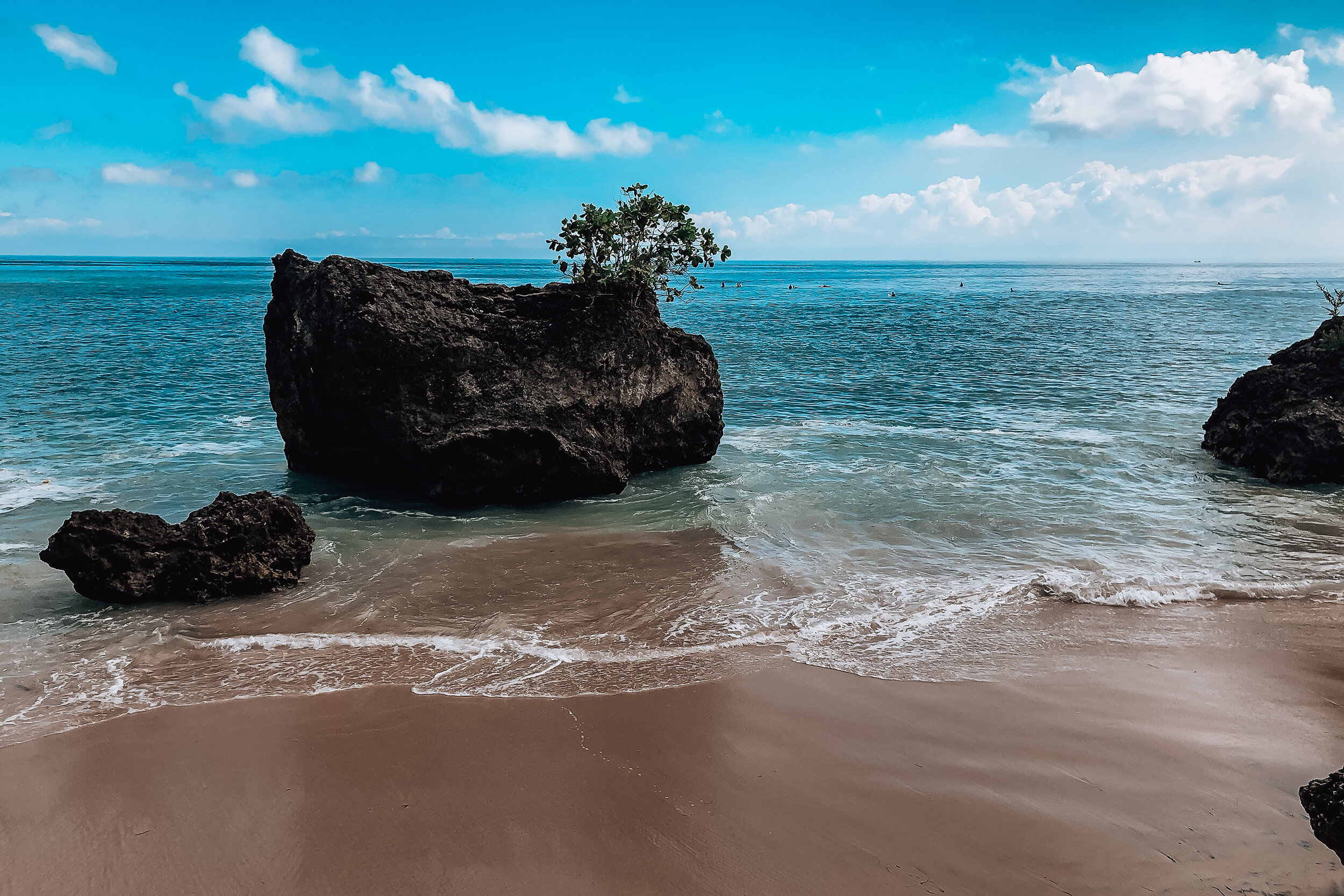
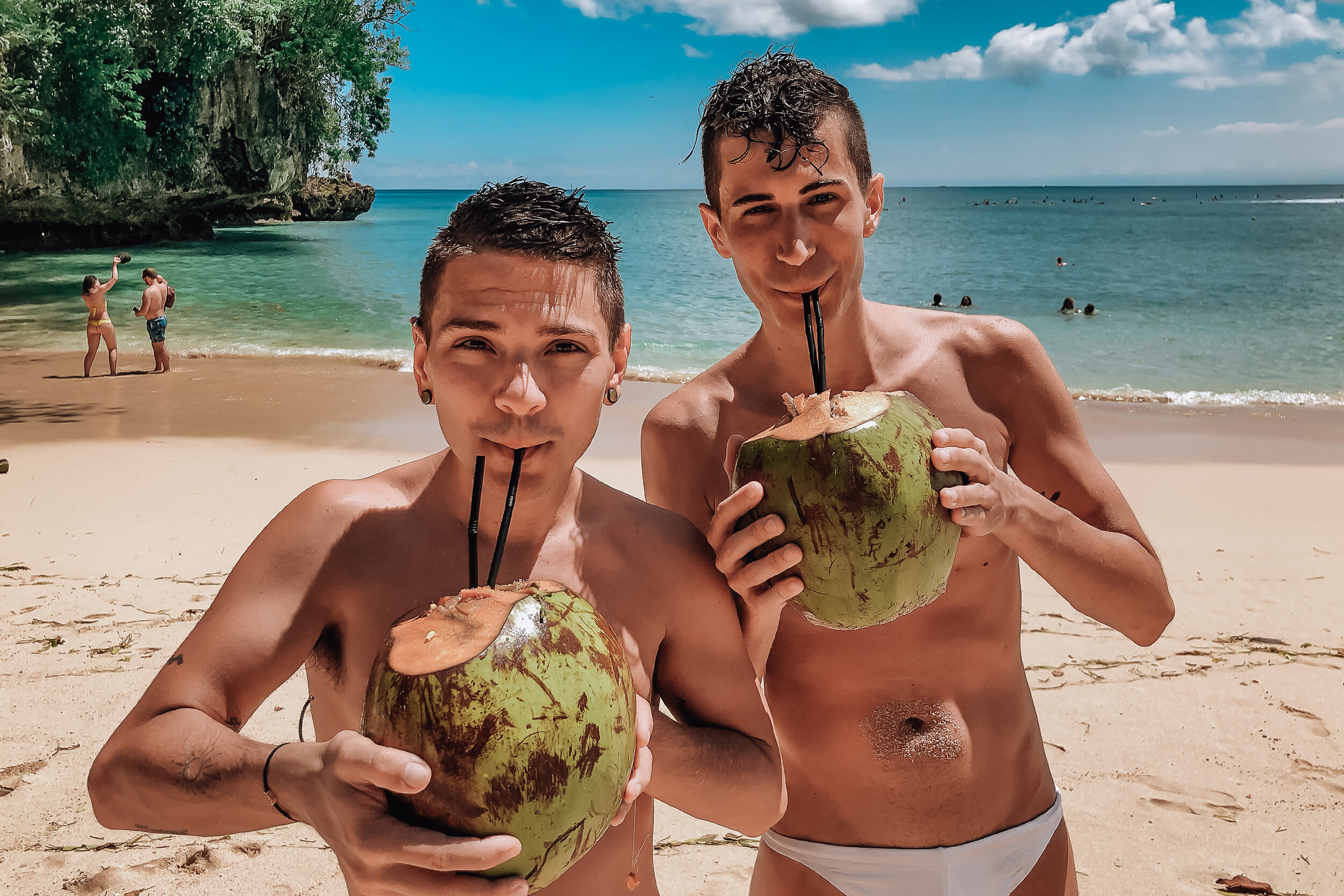
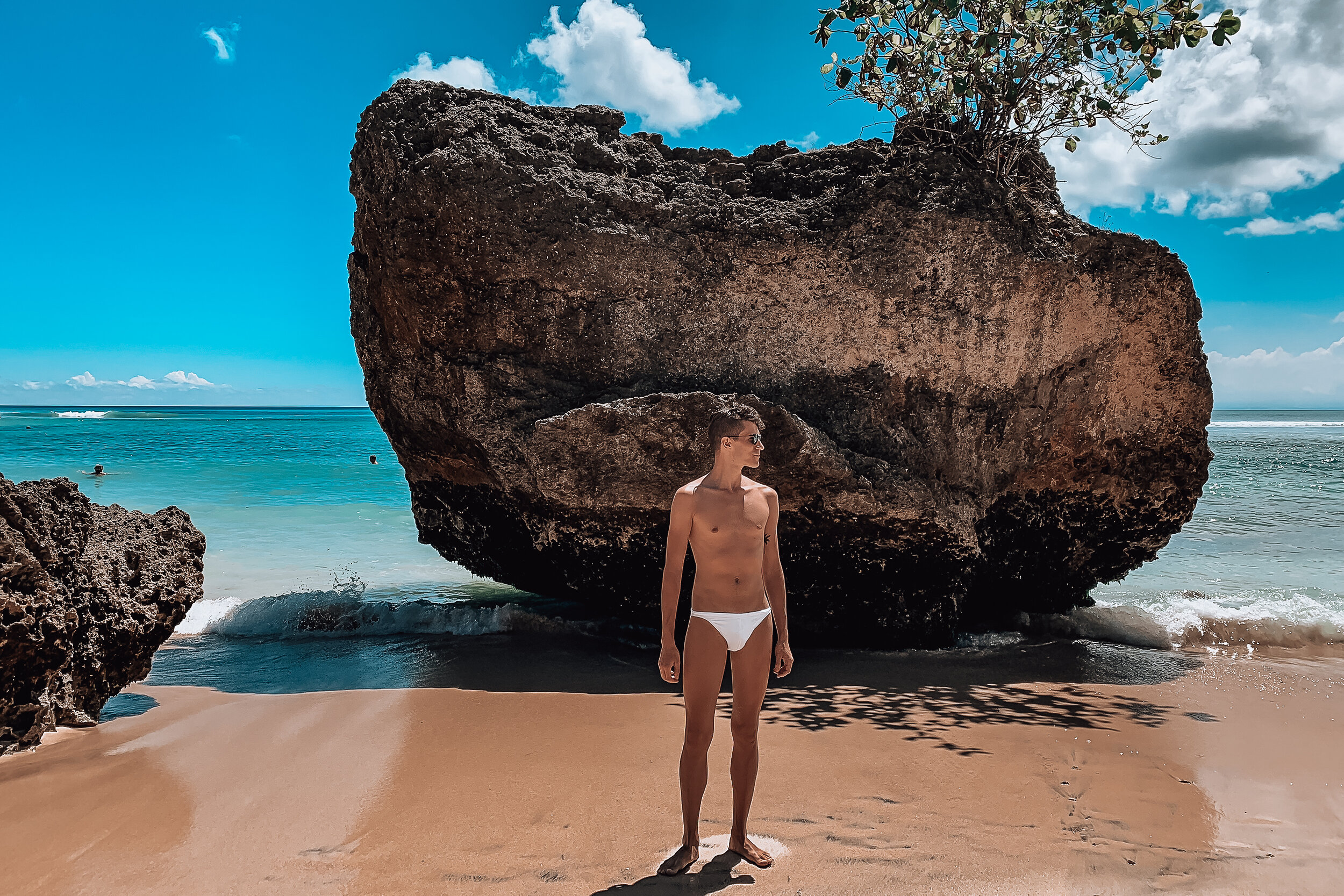
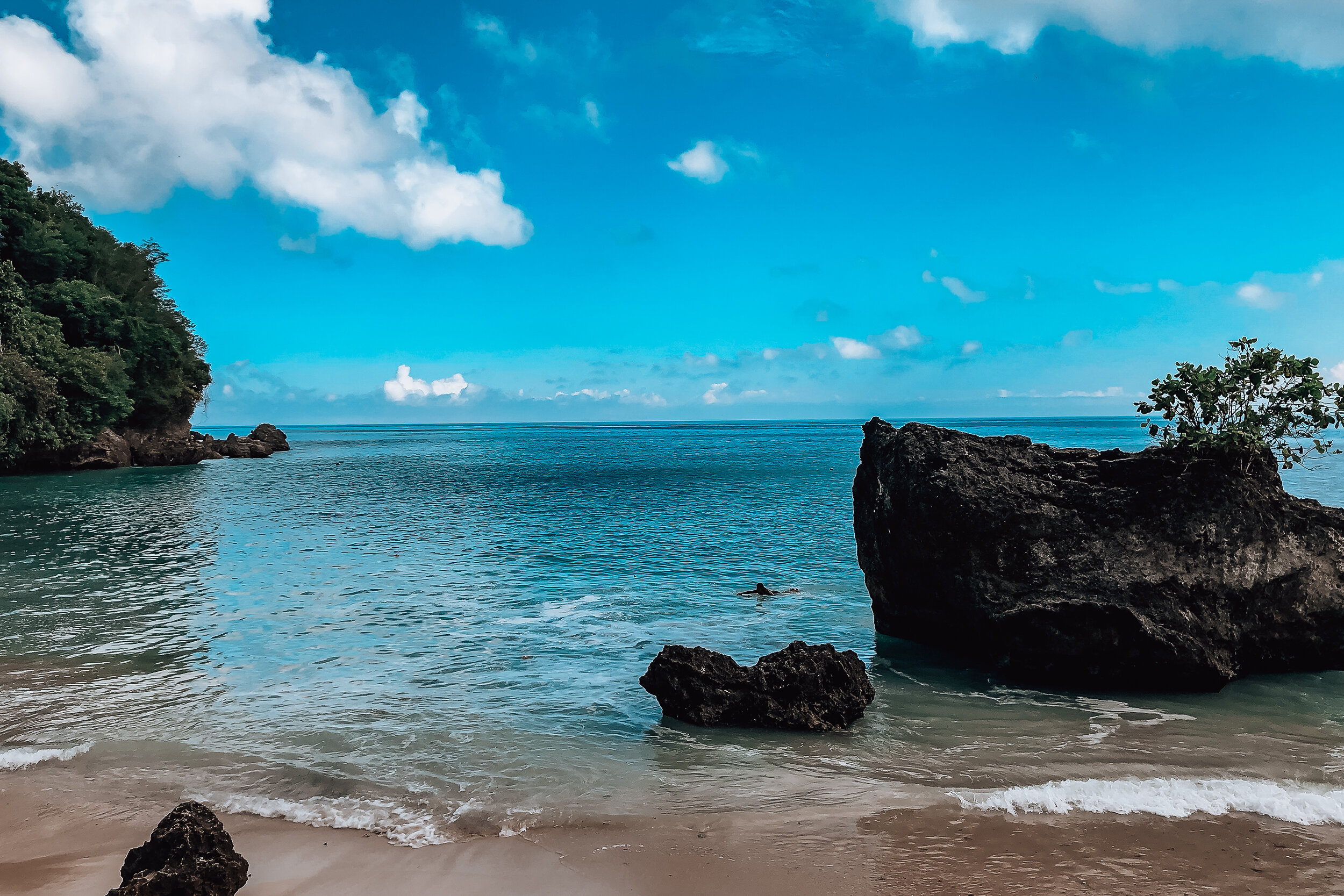


Padang Padang Beach. We visited a lot of beaches in Bali but this was one of our favorites! The small beach is nestled in a cove with protection from ocean currents making it easily swimmable.
It’s accessible via a set of stairs built within the crevice of the cliff above. There is an entrance fee of 10K Rp (less than $1 USD) Watch out for monkeys on steps and near the tree line along the beach. Like in the monkey forest, they’re mischievous and will try to snatch your belongings.
The beach is great for sunbathing with little shade, though you can rent an umbrella for 100K Rp ($7 USD). There are a number of warungs to grab a meal and vendors selling fresh coconuts to drink out of. Afterwards, they’ll chop them open for you to eat the meat from.
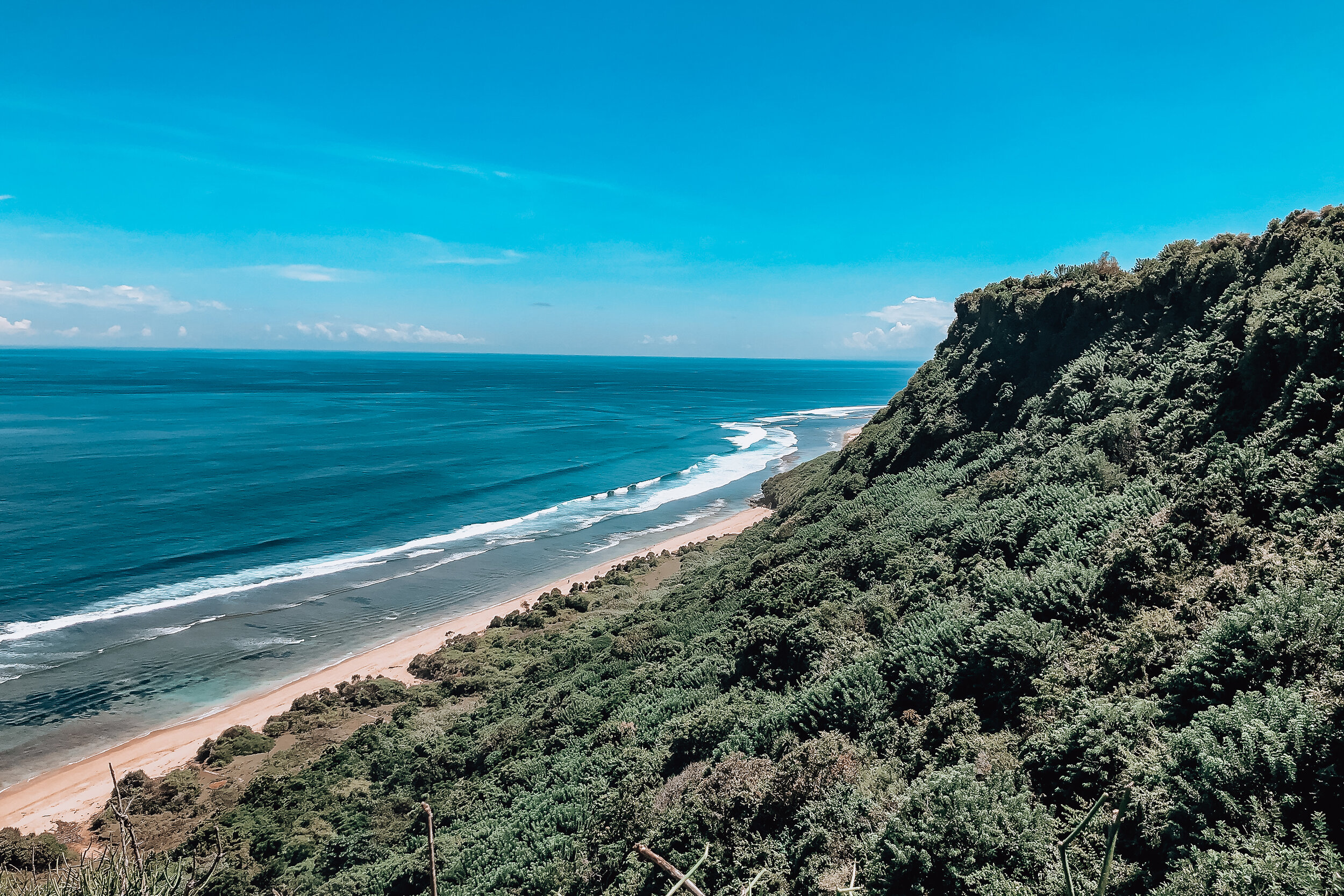
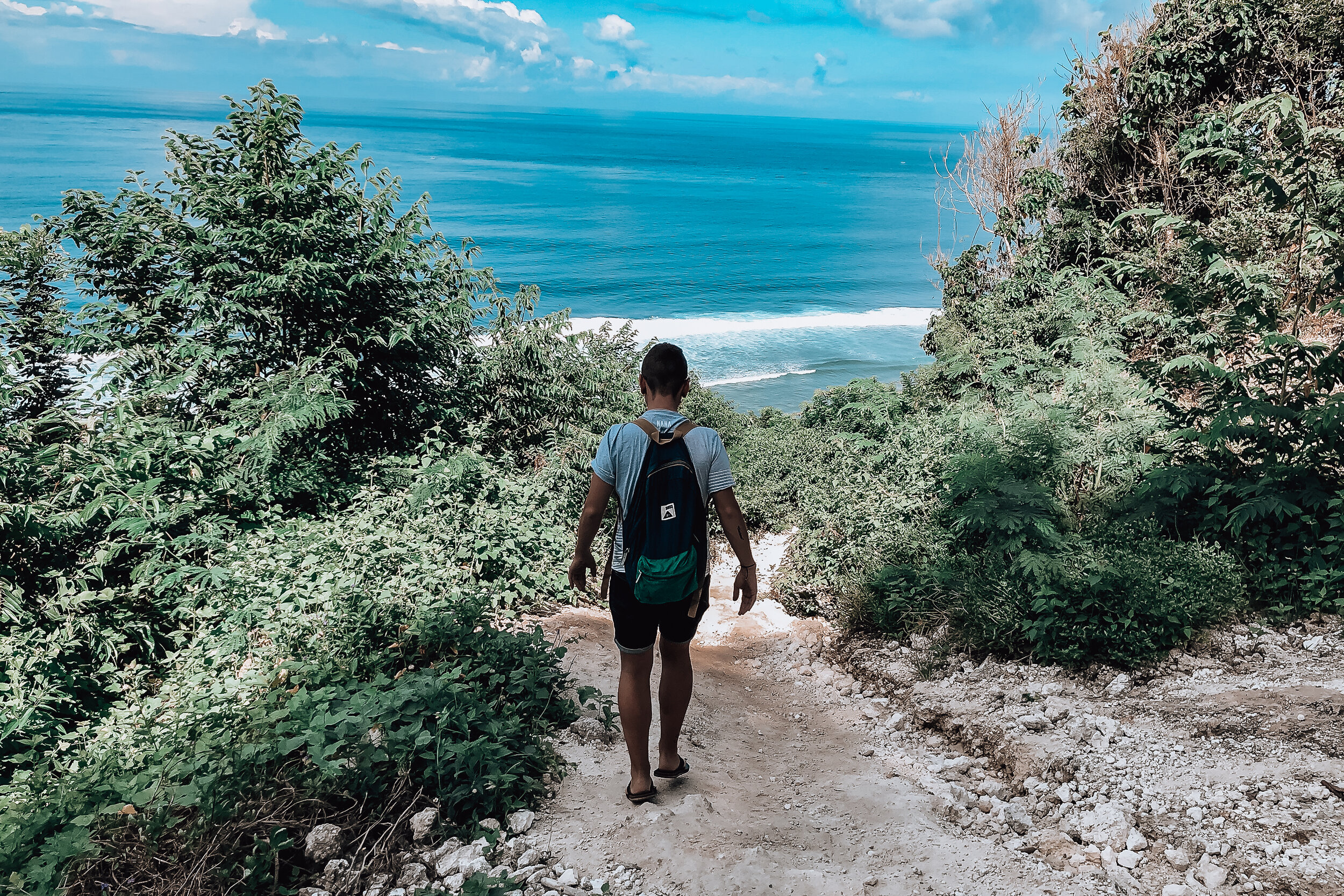
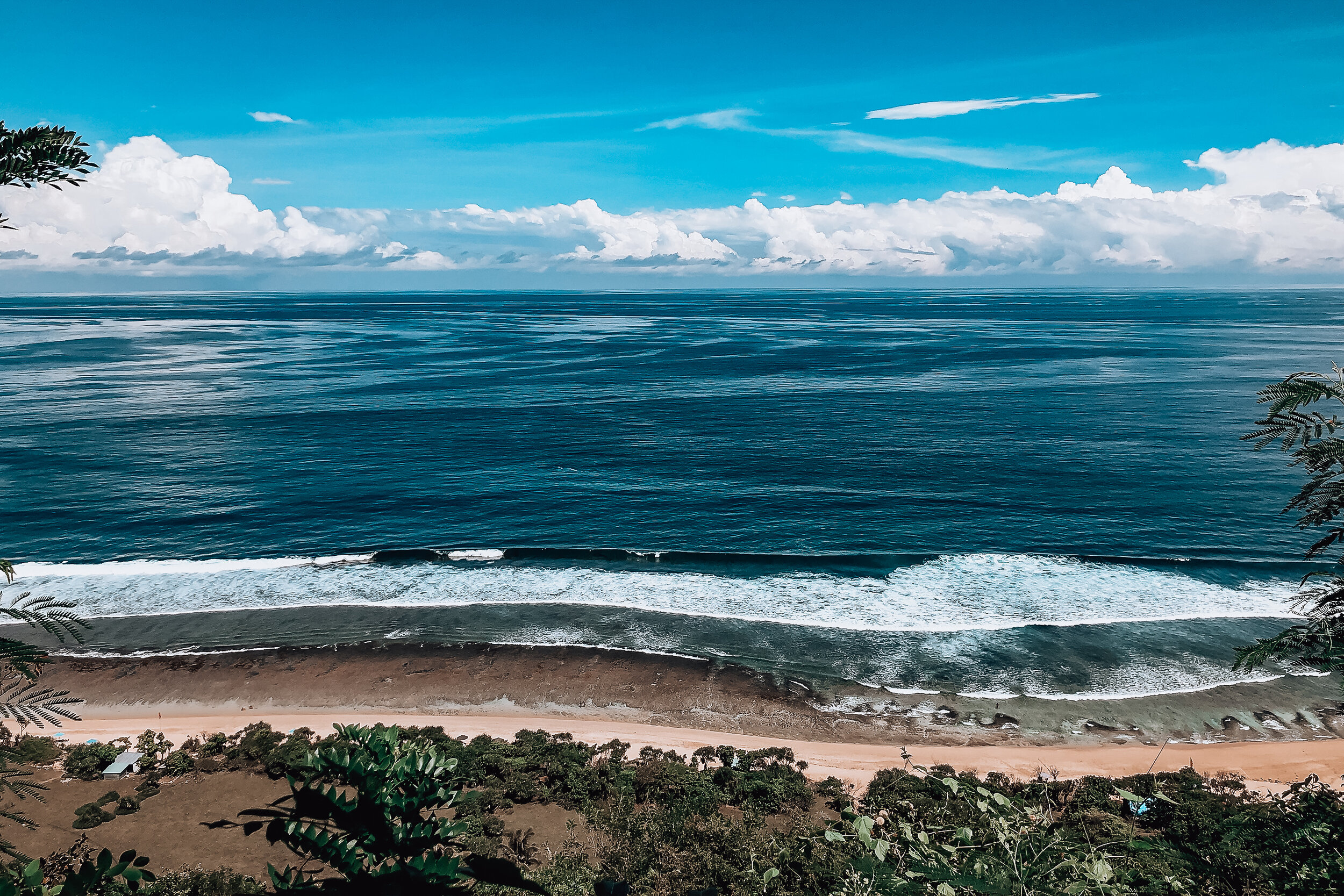
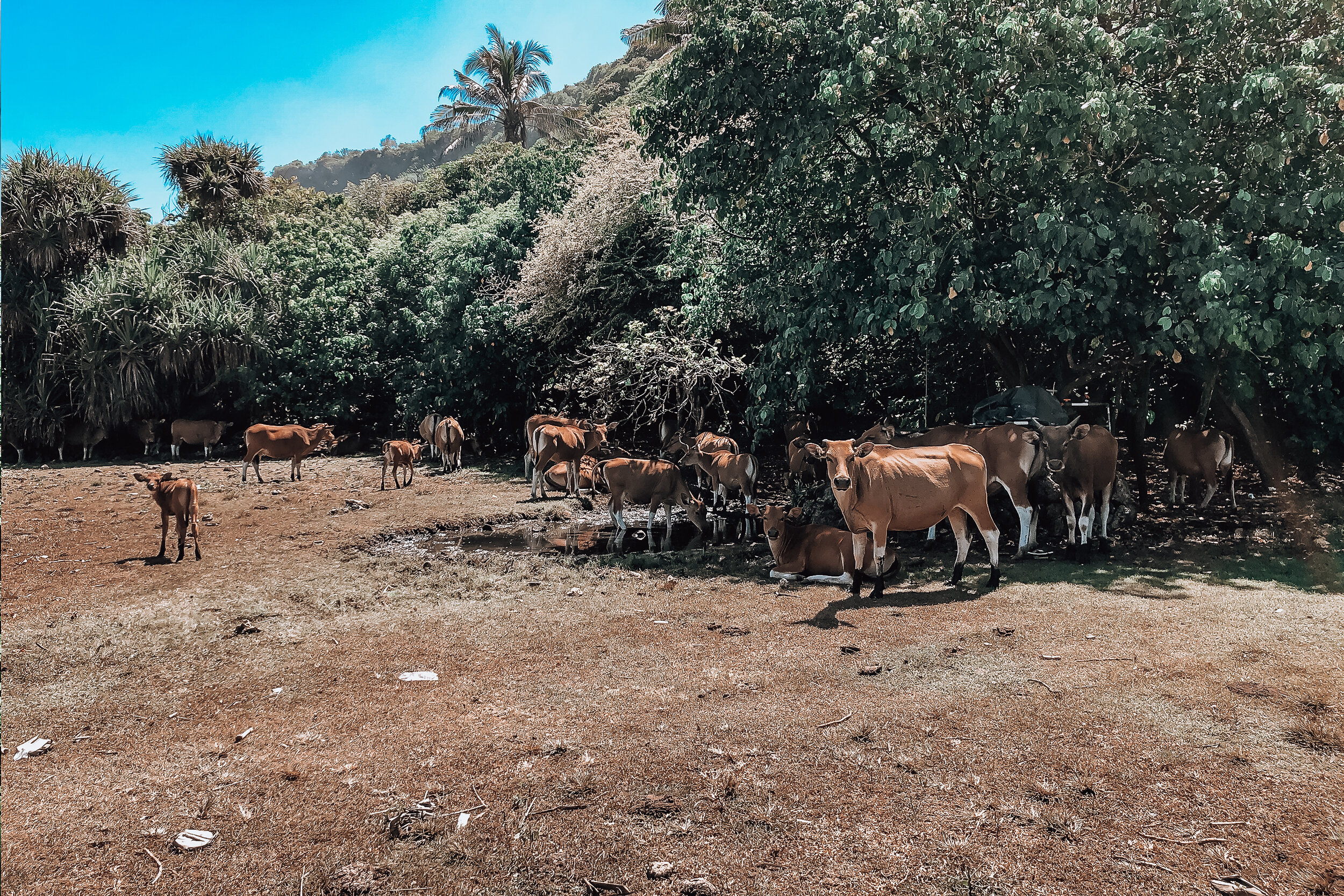
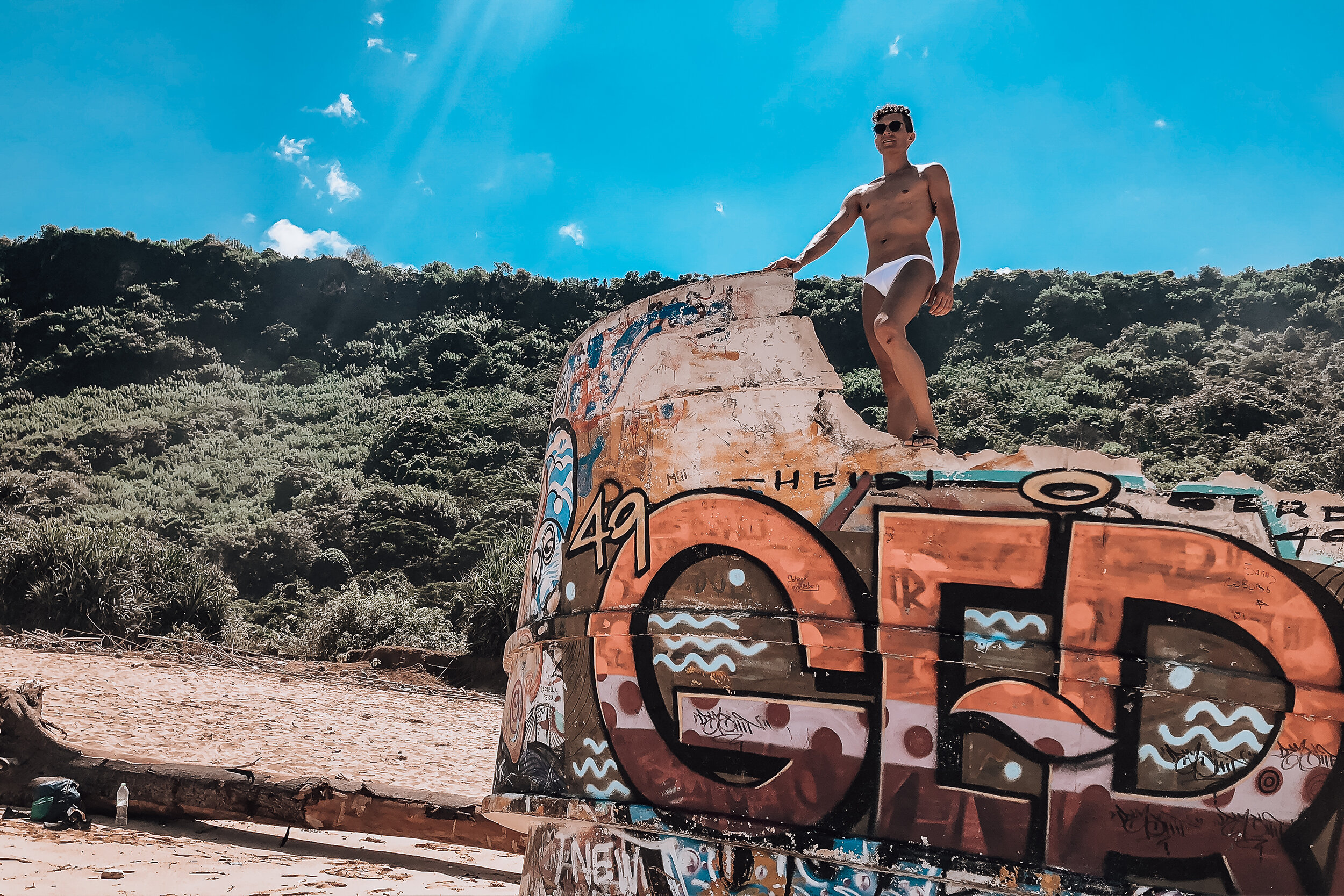

Nyang Nyang Beach
This remote beach takes a little effort to reach. If you enjoy hiking followed by a reward, this is the perfect spot for you! The beach is divided into 2 sections, the East and West sides. There is also a nearby paragliding camp offering flights from above the beaches.
East Side. The sandy beach and shallow waters are perfect for swimming and lounging in. There are also a couple of warungs selling beverages, snacks and offering a shaded retreat from the sun. The most notable sight on the beach is the graffitied remains of a washed up shipwreck. The beach is accessible via a lush cliffside trail behind the Villa Plenilunino. There are a number of warungs along the trail to stop for a meal and drink. Once you reach the bottom, you’ll have to pass through a grassy field with a heard of grazing cows before reaching the beach. It’s best to avoid getting close to or startling them.
West Side. This beach is perfect if you want total seclusion. There are no warungs, so bring your own food and water. The sandy shoreline transitions to bedrock at the water. This combined with the waves and currents make it dangerous for swimming. Though the seclusion and sound of crashing waves makes this beach feel like your own personal desert island. The beach is accessible via a steep gravel roadway just beyond the parking lot adjacent to Nyang Nyang Warung.
Before You Go. Plan the section you want to visit. Both sides are separated by a 500ft stretch of jagged rocks covered in large crabs beneath an unstable the cliff. It’s dangerous and near impossible to cross. You do not want to get stuck here when the high tide comes in. Bring a bag to collect plastic. Due to the beach’s southern most point, the ocean currents often litter the shoreline in plastic waste.
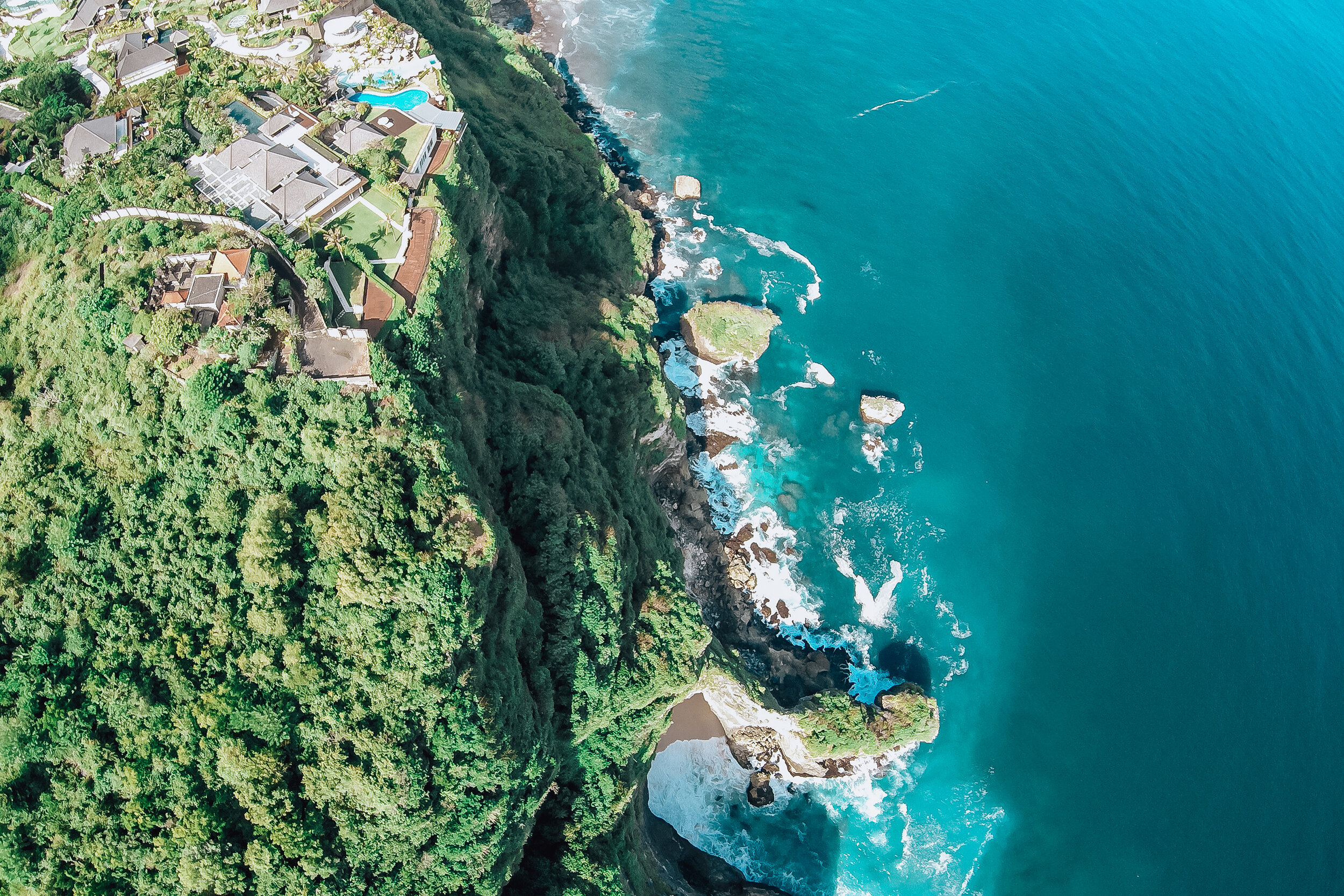
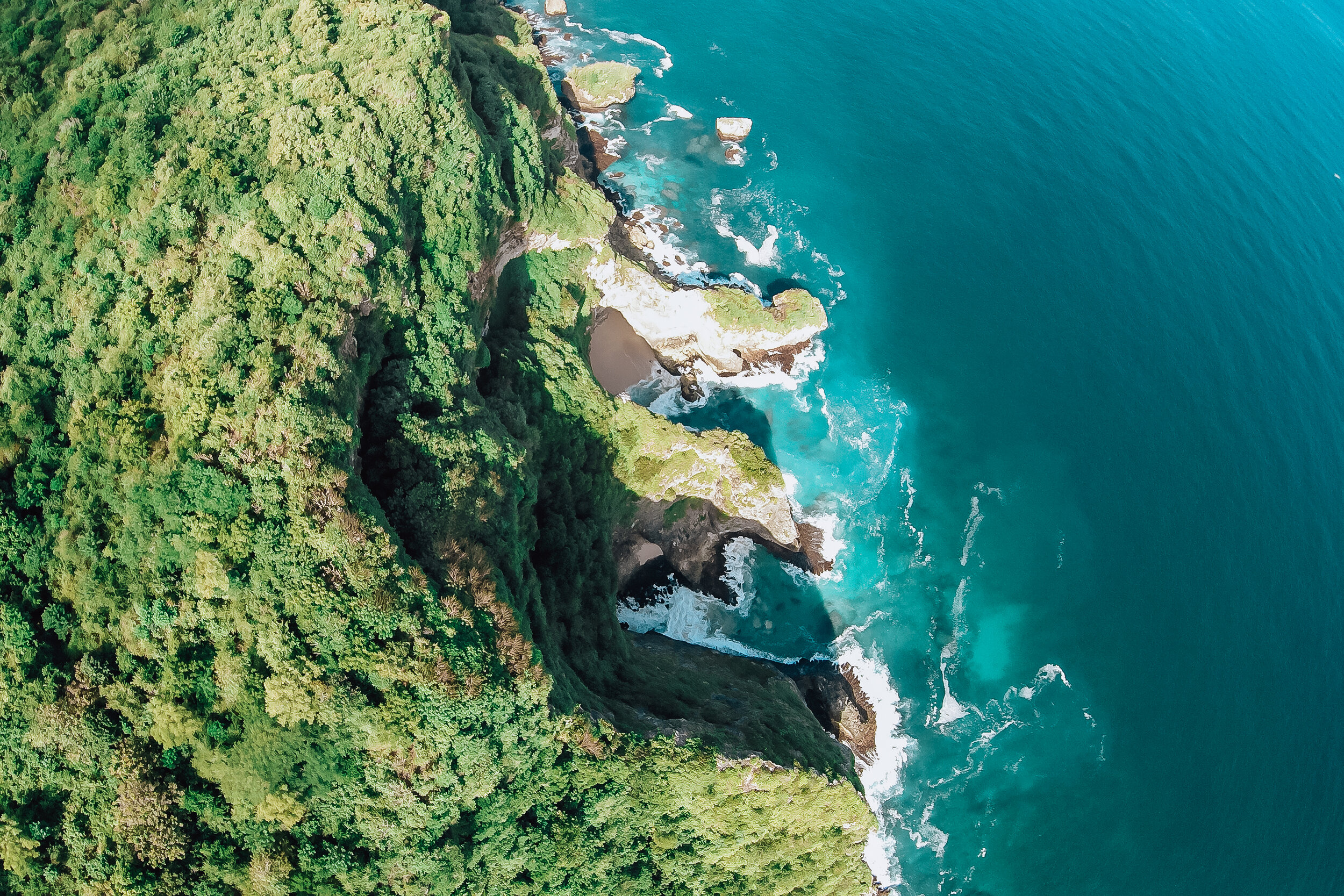
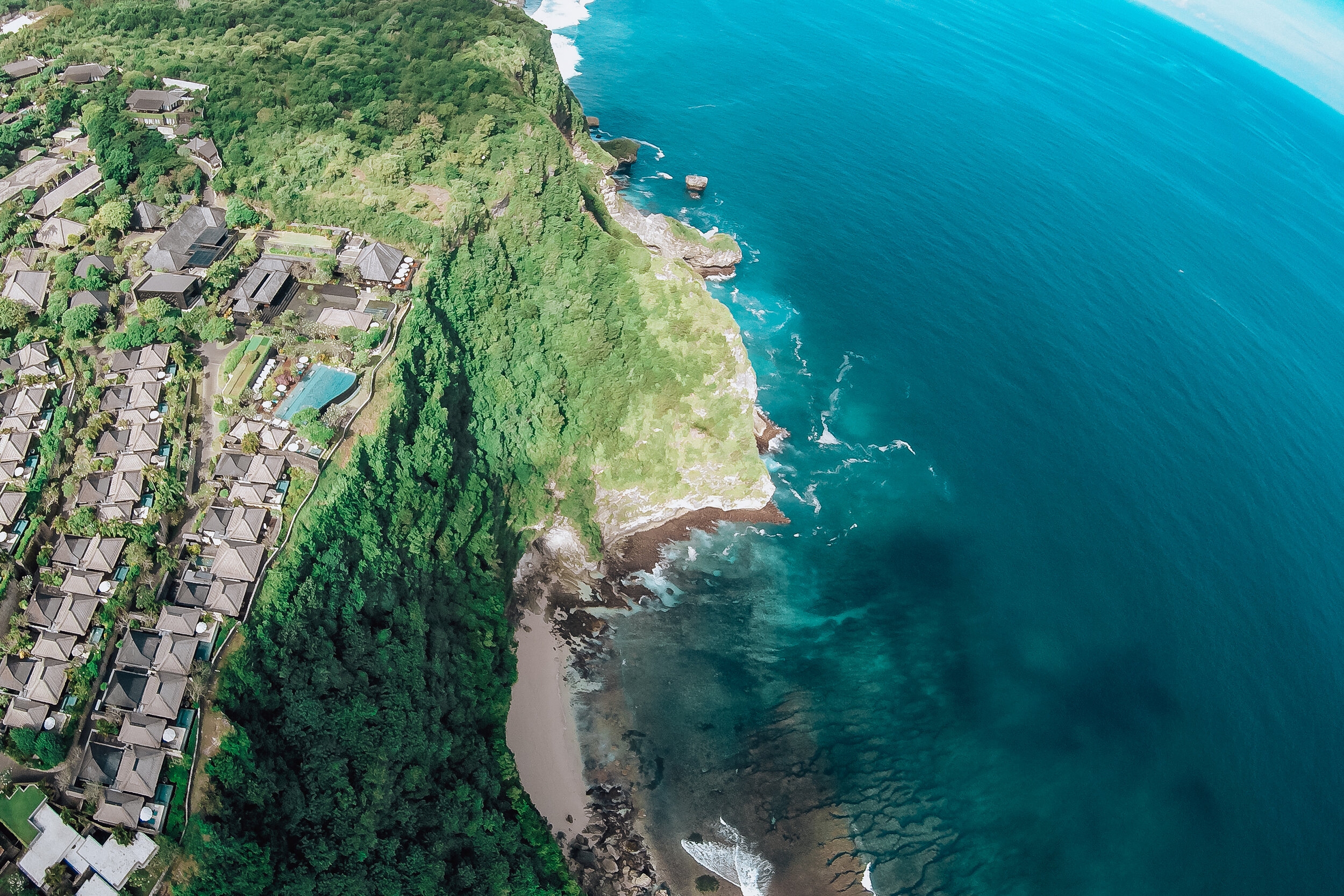
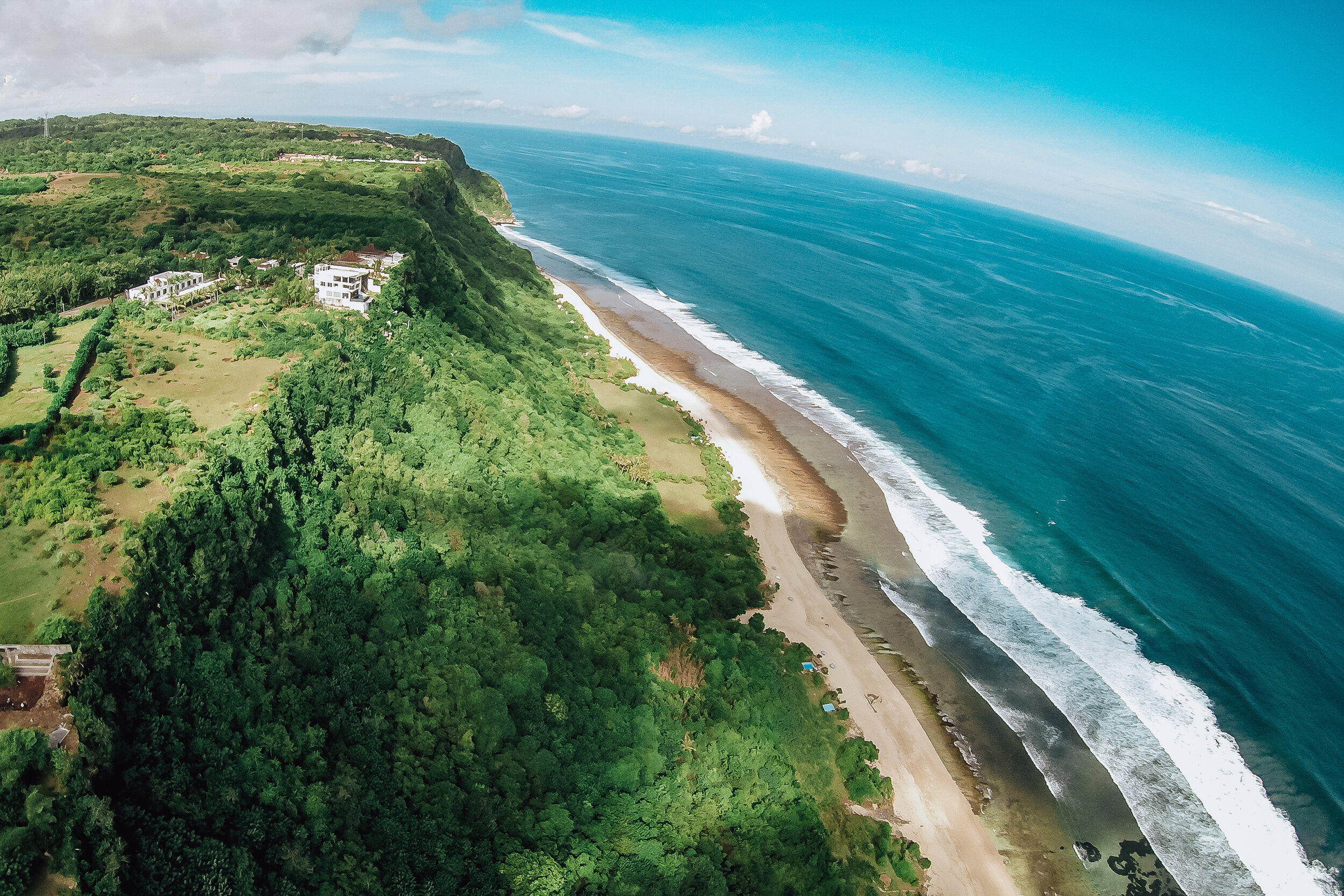
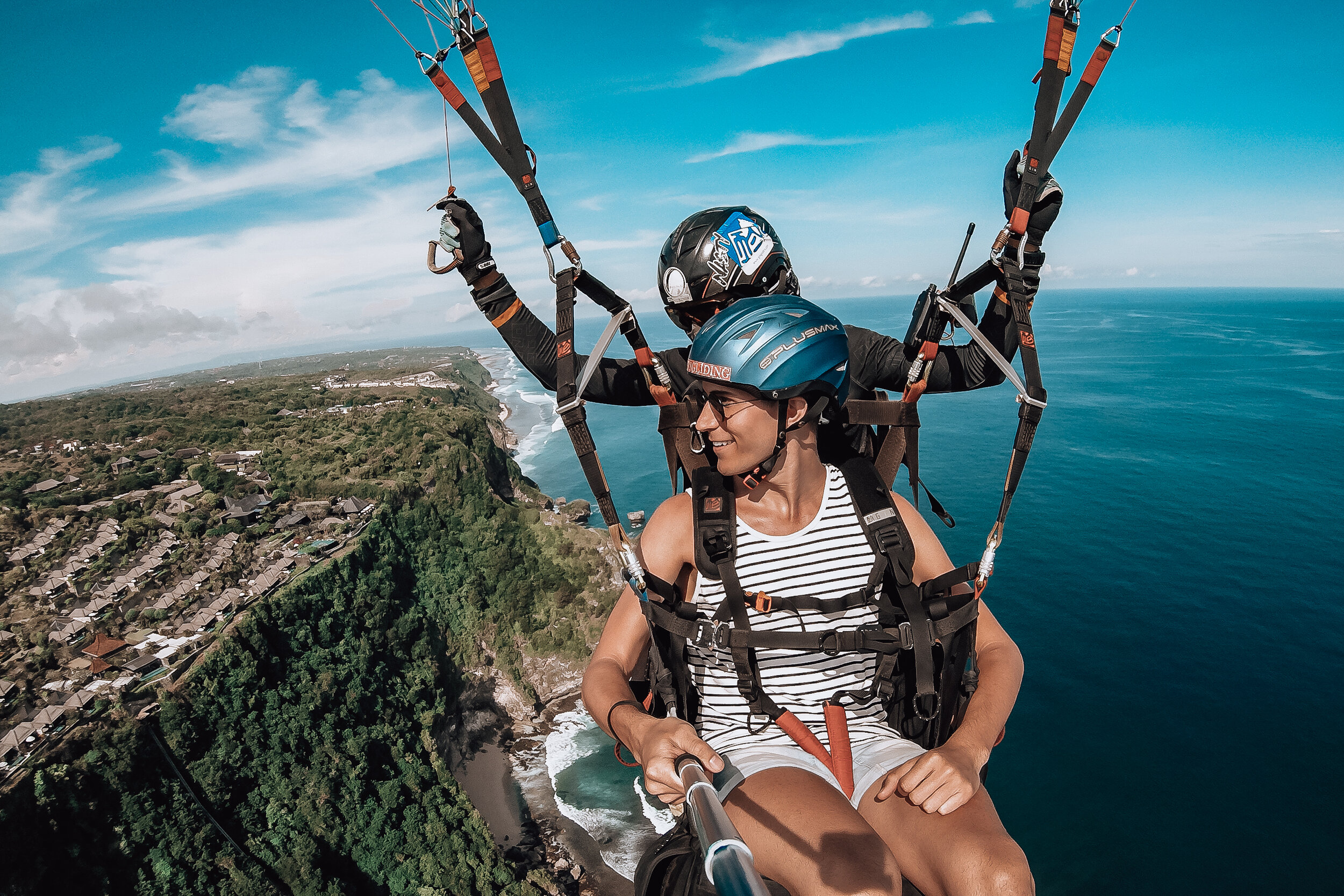
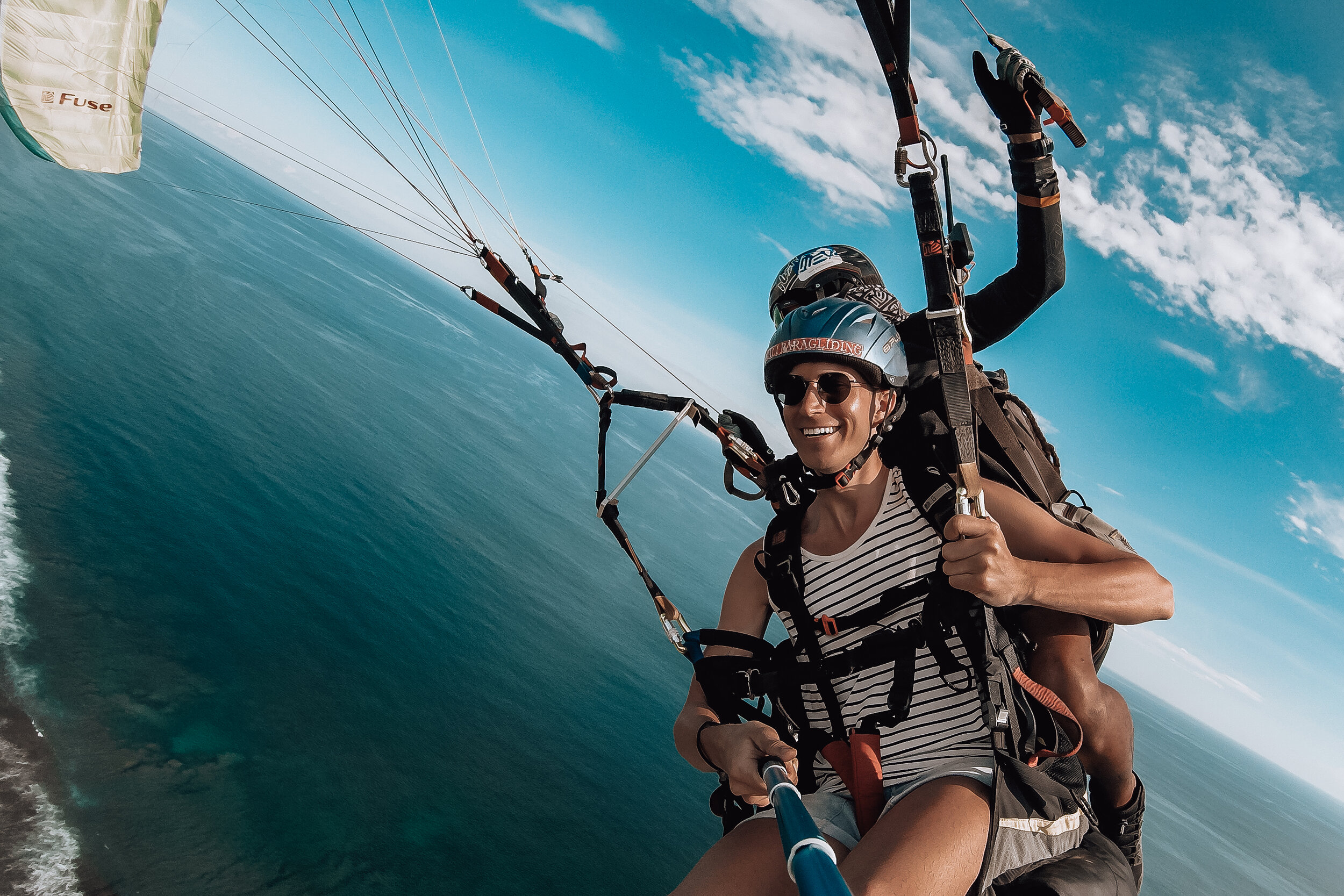
Nyang Nyang Paragliding. The southern winds hitting Nyang Nyang’s cliff make it an ideal spot for paragliding. We took a 20 minute tandem flight that soared several hundred feet above the coast. If the conditions are right, the pilot will perform some aerobatics such as spiraling and spinning the parachute. The cost is 900K Rp ($63.50) including go-pro photos and videos. Be ready to go as soon as you arrive. It was a little terrifying but within minutes, we were strapped in and lifted into the air. Opposite of this, you may have to wait if the winds are too weak.
Good to Know
Currency & Pricing
You can easily be a millionaire in Bali. 1,000,000 Rp converts to about $71 USD.
Money is qualified in the thousands. Many restaurants and businesses will drop the extra zeros on menus and price tags. For instance something costing 56,000 Rp may be listed as 56.
Carry a lot of smaller bills (5K, 10k and 20K) with you for donations and small fees.
Tipping is usually included in the bill under service. Anything extra is not expected.
Many beach clubs have entrance fees to reserve a table which is given back as a credit for food and drinks.
When exchanging cash or cards, use both hands out of respect.
Safety & Awareness
Bali is generally a safe place to travel too.
The biggest dangers in Bali are traffic and natural disasters.
You need to be alert and careful if driving a scooter or crossing a road.
Bali is a volcanic island and prone to earthquakes. The safest thing to do if one happens is to move to an open area. If you’re in a building, move to the center of a street. If you’re hiking or under palm trees, move to a clearing to avoid falling rocks and coconuts. Always cover your head.
After an earthquake, it’s best to leave the beaches and stay alert for tsunami warnings.
Move to higher ground if a tsunami warning is issued. Most areas have coastal evacuation routes.
Be aware of currents and waves while in the water. Most beaches will post warnings.
Language & Phrases
Bahasa Indonesian is the official language in Bali however many people know English.
People will often introduce themselves and bow their head when meeting you. You should reciprocate the response and gesture.
Common greetings we heard, especially from strangers or passersby are:
Hi. Where are you going?
Hi. Where are you from?
These greetings are often said to start conversation.
Common phrases:
Sukseme = Thank You
Sama Sama = You’re Welcome
Selamat Pagi = Good Morning
Selamat Siang = Good Afternoon
Selamat Sore = Good Evening
LGBTQ+
Bali and The Gilis are very LGBTQ+ friendly compared to the rest of Indonesia where being gay is punishable under the nation’s strict laws. Though it’s best to be cautious you likely will not run into any trouble, especially in the more westernized neighborhoods such as Canggu or Seminyak. The latter is home to pockets of LGBTQ+ nightlife and businesses.
If we had more time…
Like we said earlier on, there are near endless things to do and see in Bali. This guide should attest to that ;) Bali is definitely one of those destinations that you’ll want to return too! When we do, these are a number of the things we’re planing to seek out.
Nusa Islands
Full day tour visiting Manta Bay to snorkel and swim with the Manta Rays.
Hiked to Kelingking Beach on Nusa Penida. The beach is famous for its T-rex shaped peninsula and beach during low tide.
Cliff Diving on Nusa Ceningan and Nusa Lembongan
West Bali
Roadtrip - Drive west and explore the coastal and jungle towns
West Bali Park - A largely untouched wildlife refuge and jungle.
The Gilis
Spent more time exploring Gili Air and Gili Meno
Taken a 3 day scuba certification class at one of the diving schools then explored the further out reefs
Bukit Peninsula
Explored more cliffside beaches: Suluban, Balangan and Green Bowl.
Visited Uluwatu Temple, one of Bali’s most sacred. Perched on the island’s southern most cliff, It’s believed the Hindu gods, Brahma, Vishnu, and Shiva become here.












